













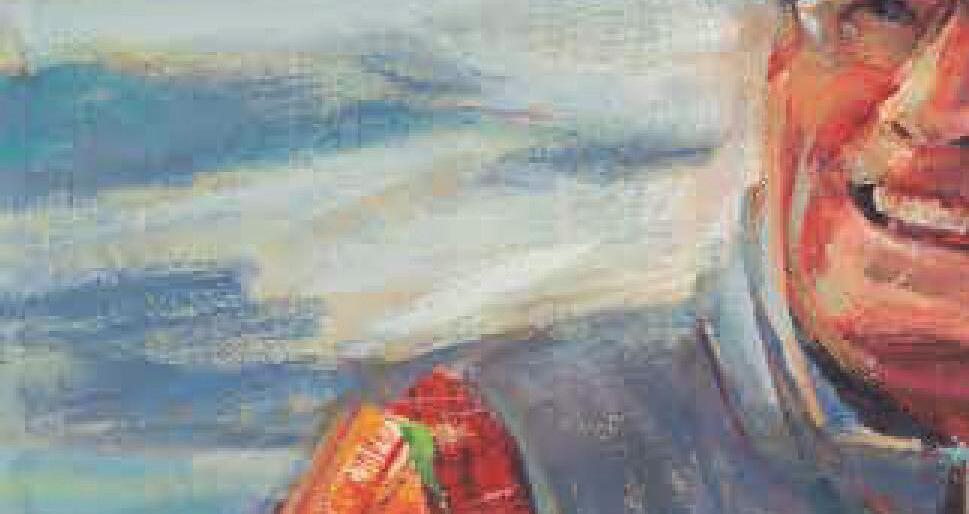















We’re All About YOU! Vancouver • New Westminster • Victoria Tel: 604-659-8600 • Toll Free: 800-553-1936 • info@wcts.com • wcts.com The reason we exist... our mission... is to support your practice. Full stop. West Coast is proud to be considered a preeminent resource for Process Serving, Registry and Research Services in British Columbia’s legal community. Proudly serving the legal profession since 1969

















THE ADVOCATE 161 VOL. 81 PART 2 MARCH 2023 atinCelebr OUR NEW PARTNERSng S H Assurance Partner Audit and (UK), CIA A PA MAHASE ARESHM CPA, FCCA ax Partner Ta A, CGA CP ARD CHANG HOWWA T WWW.DAVIDSON-CO.C O M



































































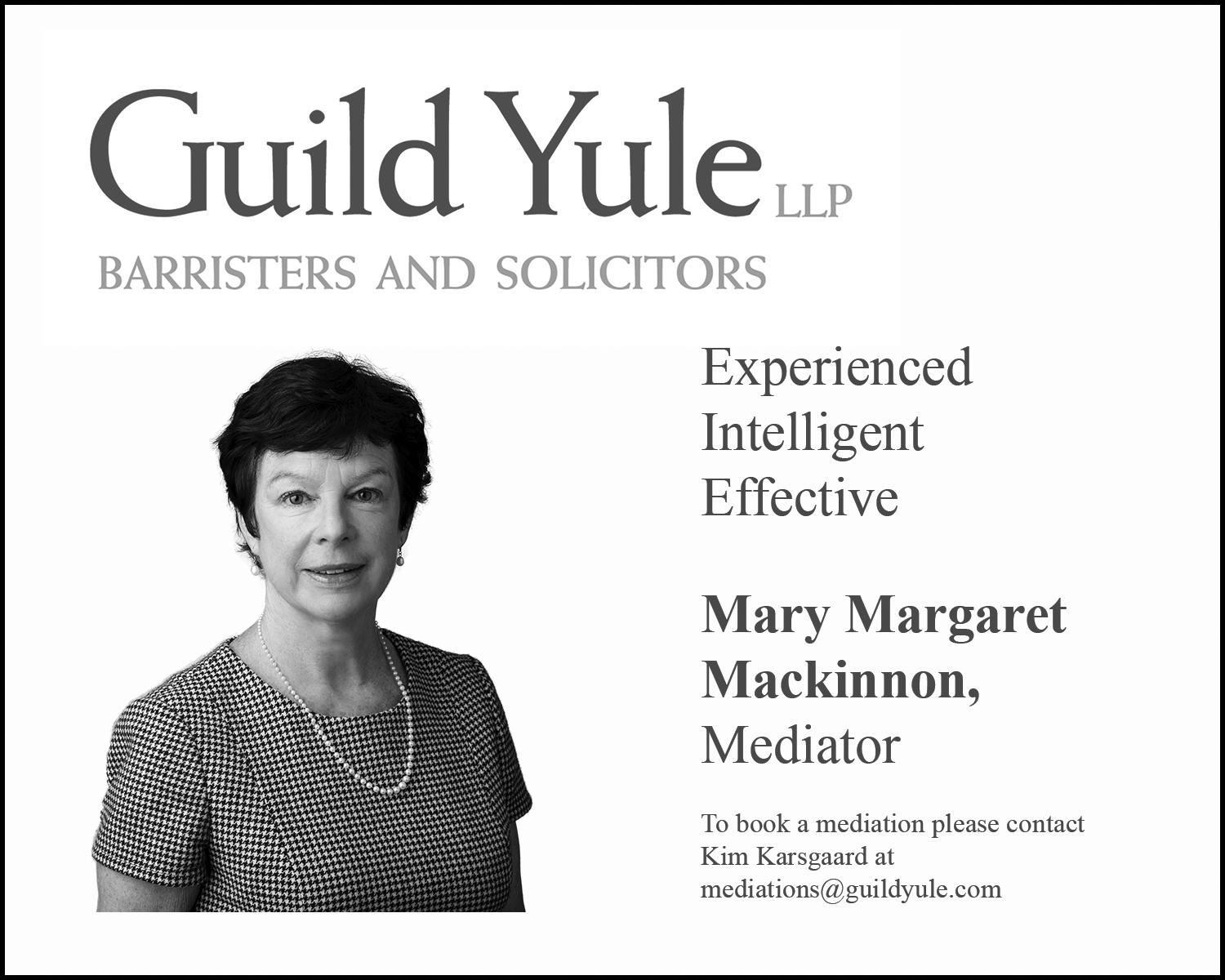
VOL. 81 PART 2 MARCH 2023 162 THE ADVOCATE ( csconomi PhD E rotiationssuppoNeg + c C pecifi s S ’ & Canada ed as an exper Qualifi DRED + T UBC, 1982) rt:valuesofoffers bunalri laims T Court upreme BLEWET t in BC S ons Expert Opini + aluations miEcono c V + tio cConsulStrategi ta + f d e o lu c va miEcono + onsforcomPIDopini + teroffers and coun ns amages mmercialfishers 60449997615 ed ww 4 999 7615 win@gocounterpoint.com w.gocounterpoint.com To book a mediation please contact Anna Pelzer at apelzer@guildyule.com
•21-year judicial career: 9 years on the BC Court of Appeal, 12 years as a Supreme Court Judge.
•Presided over all manner of cases including criminal, civil and family claims.
•27 years as a leading litigator, has appeared in all courts of British Columbia and the Supreme Court of Canada.

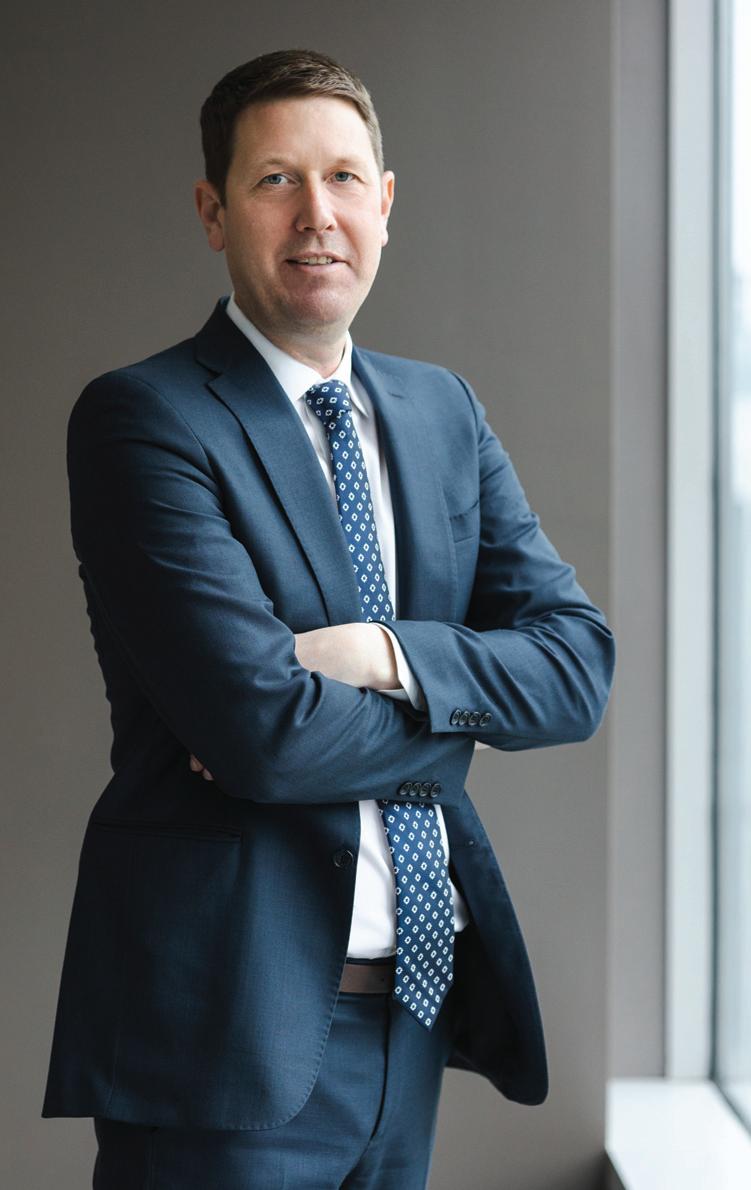
•Effective and respected decision-maker.
Immediately available to assist with arbitration, mediation, and other forms of dispute resolution with an emphasis on commercial and insurance disputes.
| rgoepel@watsongoepel.com

VOL. 81 PART 2 MARCH 2023 THE ADVOCATE 163
Richard Goepel, K.C. 604.642.5651
FORWARD
CONFIDENCE watsongoepel.com
MOVE
WITH
Mediation, Arbitration & Dispute Resolution Services
OFFICERS AND EXECUTIVES
LAW SOCIETY OF BRITISH COLUMBIA
Christopher McPherson, K.C. President
Don Avison, K.C.
Chief Executive Officer and Executive Director
BENCHERS
APPOINTED BENCHERS
Paul A.H. Barnett
Sasha Hobbs
Dr. Jan Lindsay
ELECTED BENCHERS
Kim Carter
Tanya Chamberlain
Jennifer Chow, K.C.
Cheryl S. D’Sa
Tim Delaney
Lisa H. Dumbrell
Brian Dybwad
Brook Greenberg, K.C.
Katrina Harry
Lindsay R. LeBlanc
Geoffrey McDonald
Steven McKoen, K.C.
Michèle Ross
Natasha Tony
Guangbin Yan
Jacqueline McQueen, K.C.
Paul Pearson
Georges Rivard
Kelly Harvey Russ
Gurminder Sandhu
Thomas L. Spraggs
Barbara Stanley, K.C.
Michael F. Welsh, K.C.
Kevin B. Westell
Sarah Westwood
Gaynor C. Yeung
CANADIAN BAR ASSOCIATION
BRITISH COLUMBIA BRANCH
BOARD OF DIRECTORS
Aleem S. Bharmal, K.C.
President
Scott Morishita
First Vice President
Lee Nevens
Second Vice President
Judith Janzen
Finance & Audit Committee Chair
Dan Melnick
Young Lawyers Representative
Rupinder Gosal
Equality and Diversity Representative
Randolph W. Robinson
Aboriginal Lawyers Forum Representative
Patricia Blair
Director at Large
Adam Munnings
Director at Large
Mylene de Guzman
Director at Large
Sarah Klinger
Director at Large
ELECTED MEMBERS OF CBABC PROVINCIAL COUNCIL BRITISH COLUMBIA BAR ASSOCIATIONS
ABBOTSFORD & DISTRICT
Kirsten Tonge, President
CAMPBELL RIVER
Ryan A. Krasman, President
CHILLIWACK & DISTRICT
Nicholas Cooper, President
COMOX VALLEY
Michael McCubbin
Shannon Aldinger
COWICHAN VALLEY
Jeff Drozdiak, President
FRASER VALLEY
Michael Jones, President
KAMLOOPS
Kelly Melnyk, President
KELOWNA
Taylor-Marie Young, President
KOOTENAY
Dana Romanick, President
NANAIMO CITY
Kristin Rongve, President
NANAIMO COUNTY
Lisa M. Low, President
NEW WESTMINSTER
Mylene de Guzman, President
NORTH FRASER
Lyle Perry, President
NORTH SHORE
Adam Soliman, President
PENTICTON
Ryu Okayama, President
PORT ALBERNI
Christina Proteau, President
PRINCE GEORGE
Marie Louise Ahrens, President
PRINCE RUPERT
Bryan Crampton, President
QUESNEL
Karen Surcess, President
SALMON ARM
Dennis Zachernuk, President
SOUTH CARIBOO COUNTY
Angela Amman, President
SURREY
Peter Buxton, K.C., President
VANCOUVER Executive
Niall Rand President
Heather Doi Vice President
Zachary Rogers Secretary Treasurer
Jason Newton Past President
VERNON
Christopher Hart, President
VICTORIA
Marlisa H. Martin, President
CARIBOO
Nathan Bauder
Susan Grattan
Nicholas Maviglia
KOOTENAY
Andrew Bird
Christopher Trudeau
NANAIMO
Johanna Berry
Patricia Blair
Kevin Simonett
PRINCE RUPERT
Sara Hopkins
VANCOUVER
Kyle Bienvenu
Karey Brooks
Joseph Cuenca
Bahareh Danael
Graham Hardy
Lisa Jean Helps
Judith Janzen
Heather Mathison
Scott Morishita
VICTORIA
Sarah Klinger
Dan Melnick
Paul Pearson
WESTMINSTER
Anouk Crawford
Mylene de Guzman
Daniel Moseley
Greg Palm
YALE
Rachel LaGroix
Michael Sinclair
Kylie Walman
CANADIAN ASSOCIATION OF BLACK LAWYERS (B.C.)
Zahra Jimale, President
FEDERATION OF ASIAN CANADIAN LAWYERS (B.C.)
Steven Ngo, President
INDIGENOUS BAR ASSOCIATION (B.C.)
Michael McDonald, President
SOUTH ASIAN BAR ASSOCIATION OF BRITISH COLUMBIA
Anita Atwal, President
ASSOCIATION DES JURISTES D’EXPRESSION FRANÇAISE DE LA COLOMBIE-BRITANNIQUE (AJEFCB)
Sandra Mandanici, President
164 THE ADVOCATE VOL. 81 PART 2 MARCH 2023
Jeevyn Dhaliwal, K.C. First Vice President Brook Greenberg, K.C. Second Vice President
“Of
Published six times each year by the Vancouver Bar Association
Established 1943
ISSN 0044-6416
GST Registration #R123041899
Annual Subscription Rate
$36.75 per year (includes GST)
Out-of-Country Subscription Rate $42 per year (includes GST)
Audited Financial Statements Available to Members
EDITOR:
D. Michael Bain, K.C.
ASSISTANT EDITOR:
Ludmila B. Herbst, K.C.
EDITORIAL ADVISORY BOARD:
Anne Giardini, O.C., O.B.C., K.C.
Carolyn MacDonald
David Roberts, K.C.
Peter J. Roberts, K.C.
The Honourable Mary Saunders
The Honourable Alexander Wolf
CONTRIBUTING EDITORS:
Peter J. Roberts, K.C.
The Honourable Jon Sigurdson
Lily Zhang
BUSINESS MANAGER: Lynda Roberts
COVER ARTIST: David Goatley
COPY EDITOR: Connor Bildfell
EDITORIAL OFFICE:
#1918 – 1030 West Georgia Street
Vancouver, B.C. V6E 2Y3
Telephone: 604-696-6120
E-mail: <mbain@the-advocate.ca>
BUSINESS & ADVERTISING OFFICE: 709 – 1489 Marine Drive
West Vancouver, B.C. V7T 1B8
Telephone: 604-987-7177
E-mail: <info@the-advocate.ca>
WEBSITE: <www.the-advocate.ca>
ON THE FRONT COVER
165
The late Christopher Harvey, Q.C., is depicted on this issue’s cover in a portrait painted by his widow, Anne-Marie Harvey. Chris is shown in his happy place … pulling up prawn traps. Read his amazing story on page 177.
ADVOCATE
interest to the
and
the
THE
2023 Entre Nous . . . . . . . . . . . . . . . . . . . . . . . . . . . . . . . . . . . . . . . . . 169 On the Front Cover: Christopher Harvey, Q.C. By Gavin Hume, K.C., and Timothy Harvey . . . . . . . . . . . 177 Surreptitious Recordings
Civilians in Criminal Trials: Are They Constitutional? By Robert Diab . . . . . . . . . . . . . . . . . . . . . . . . . . . . . . . . . 191 Disallowance is the Paladin of the Rights and Freedoms in the Canadian Charter By Darrell W. Roberts, K.C. . . . . . . . . . . . . . . . . . . . . . . . . 197
By Bruce Woolley, K.C. . . . . . . . . . . . . . . . . . . . . . . . . . . . 209 Is Time Really of the Essence? Things You Didn’t Know You Didn’t Know About Contract Law By David Wotherspoon and Jaclyn Vanstone . . . . . . . . . . . 215 The Wine Column . . . . . . . . . . . . . . . . . . . . . . . . . . . . . . . . . . . 223 News from BC Law Institute . . . . . . . . . . . . . . . . . . . . . . . . . . . 235 LAP Notes . . . . . . . . . . . . . . . . . . . . . . . . . . . . . . . . . . . . . . . . . 239 A View from the Centre . . . . . . . . . . . . . . . . . . . . . . . . . . . . . . 243 Announcing the 2023 Advocate Short Fiction Competition . . . 251 Peter A. Allard School of Law Faculty News . . . . . . . . . . . . . . . 253 TRU Law Faculty News . . . . . . . . . . . . . . . . . . . . . . . . . . . . . . . 259 Nos Disparus . . . . . . . . . . . . . . . . . . . . . . . . . . . . . . . . . . . . . . . 263 New Judges . . . . . . . . . . . . . . . . . . . . . . . . . . . . . . . . . . . . . . . . 281 Classified . . . . . . . . . . . . . . . . . . . . . . . . . . . . . . . . . . . . . . . . . . 295 Legal Anecdotes and Miscellanea . . . . . . . . . . . . . . . . . . . . . . . 297 From Our Back Pages . . . . . . . . . . . . . . . . . . . . . . . . . . . . . . . . 303 Bench and Bar . . . . . . . . . . . . . . . . . . . . . . . . . . . . . . . . . . . . . . 309 Contributors . . . . . . . . . . . . . . . . . . . . . . . . . . . . . . . . . . . . . . . 319
lawyer
in
lawyer’s interest”
VOL. 81 PART 2 MARCH
by
The Solicitor’s Legal Opinions Committee (Fondly Known as “SLOC”)
We are a firm ofconsulting economists who specialize in providing litigation support services to legal professionals across western Canada. Our economic reports are supported by knowledgeable staffwith extensive experience in providing expert testimony.

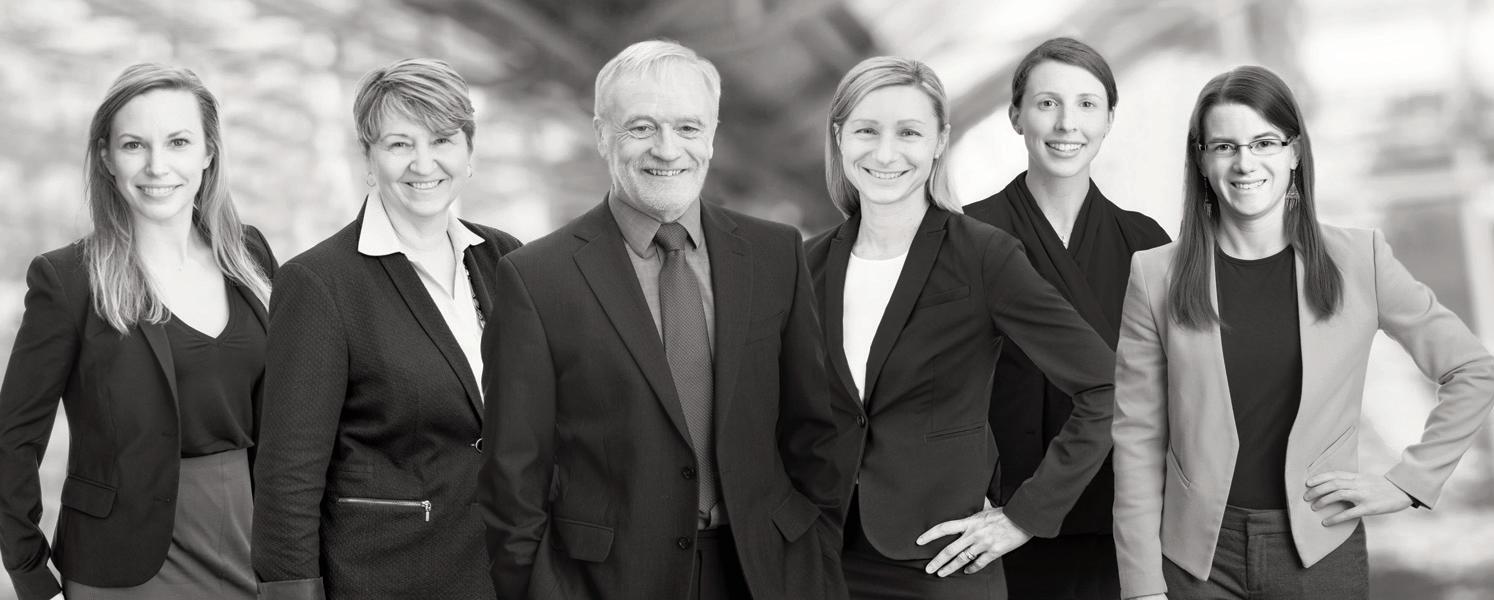
PETAConsultants Ltd.
We offer the following services in the area ofloss assessment:

Past and future loss ofemployment
income
Past and future loss ofhouseholdservices
Past and future loss offinancial support
(wrongful death)
Class action valuations
Future cost ofcare valuations
DARREN BENNING PRESIDENT
info@petaconsultants.com
T. 604.681.0776
F. 604.662.7183
Suite 301,1130 West Pender Street
Vancouver,B.C.Canada V6E 4A4
Loss ofestate claims (Duncan claims in Alberta)
Income tax gross-ups
Management fees
Pension valuations
Future income loss and future cost of care multipliers
166 THE ADVOCATE VOL. 81 PART 2 MARCH 2023
Malpractice
Tel: 604.685.2361 Toll Free: 1.888.333.2361 Email: info@pacificmedicallaw.ca www.pacificmedicallaw.ca
Medical
is all we do
A FOUNDING MEMBER OF BILA
ECONOMIC DAMAGES SINCE
QUANTIFYING
1983
Built on Trust, Backed by Results


Jeff Davis has been entrusted with the investment portfolios of legal professionals in British Columbia and Alberta for 20 years. Attuned to your needs, he understands that the demands of being a successful lawyer often result in a lack of time to manage your own investments. At Odlum Brown, Jeff develops investment strategies that are conflict-free and focused on creating and preserving the wealth and legacy of his clients. For over two decades, the results of the highly regarded Odlum Brown Model Portfolio have been a testament to the quality of our advice.
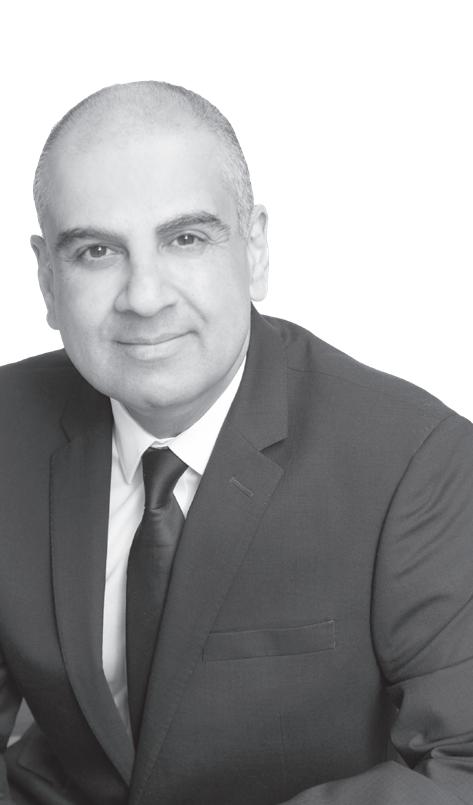 Jeff Davis, B.Comm, CIM Vice President, Director Portfolio Manager
Jeff Davis, B.Comm, CIM Vice President, Director Portfolio Manager
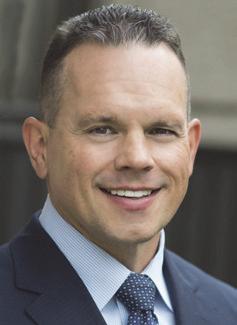

THE ADVOCATE 167 VOL. 81 PART 2 MARCH 2023 a l s · ors t olici S rss& e t is i Bar · paany al & Com os G p r r TION TA EE CONSUL FR 604.591.8187 www.wcblawyers.com Wo r kSafeBC Appe B.A., LL.B. sal j Go Sar 7AStreet,Surrey,BC3916304-93 Centre 2 City M1V3T0
COMPOUND ANNUAL RETURNS (Including reinvested dividends, as of January 15, 2023) 1 YEAR3 YEAR5 YEAR10 YEAR20 YEARINCEPTION1 Odlum Brown Model Portfolio2 -2.9%14.3%11.1%14.0%12.6%14.0% S&P/TSX Total Return Index -5.6%13.1%9.7%9.0%9.1%8.5% Let us make a case for adding value to your portfolio; contact Jeff today at 604-844-5404 or jdavis@odlumbrown.com. Visit odlumbrown.com/jdavis for more information. 1 December 15, 1994. 2 The Odlum Brown Model Portfolio is a hypothetical all-equity portfolio that was established by the Odlum Brown Equity Research Department on December 15, 1994 with a hypothetical investment of $250,000. It showcases how we believe individual security recommendations may be used within the context of a client portfolio. The Model also provides a basis with which to measure the quality of our advice and the effectiveness of our disciplined investment strategy. Trades are made using the closing price on the day a change is announced. Performance figures do not include any allowance for fees. Past performance is not indicative of future performance. Member-Canadian Investor Protection Fund



168 THE ADVOCATE VOL. 81 PART 2 MARCH 2023
ENTRE NOUS P

eering into the windows of the local polling station (a repurposed community centre gymnasium) during the last municipal election, a cute youngster of kindergarten vintage watched adults collect, mark and drop off their ballots. Those of us who caught sight of the child while shuffling around the facility may have patted ourselves on the back for setting a good example, inspiring a future voter.
It is a good thing the curious youngster could not compare the number of voters who passed through the gymnasium against the number eligible to vote. With some exceptions, voter turnout in the 2022 municipal election was not inspiring at all.1 It was far worse than even in the most recent (2021) federal election (62.6 per cent) and the most recent (2020) provincial election (51.76 per cent of eligible, and 53.86 per cent of registered, voters). Voter turnout for the 2022 municipal election in each of Vancouver and Victoria was just under 37 per cent, and just over 30 per cent in Kelowna and Kamloops. Prince George and Dawson Creek were in the 25–26 per cent range.
It is possible, we suppose, that members of the legal profession were disproportionately represented among the voters in federal, provincial and municipal elections. One might expect educated citizens with a knowledge of voting rights and relatively flexible schedules to be among the groups that are the most able to vote and the most interested in doing so. However, given how few lawyers use their opportunities to vote within their own regulatory body elections, it seems unlikely that their turnout in other elections exceeds that of the general population—well, unless, having voted in disproportionate numbers in other elections, by the time of Law Society elections their energy has been so exhausted that they can no longer do so.
The Legal Profession Act and the Law Society Rules provide for the election by members in good standing of benchers and the second vice-president (who is to become first vice-president and then president), and for there to be resolutions of general meetings of the society. However,
THE ADVOCATE 169 VOL. 81 PART 2 MARCH 2023
province-wide, most of us do not actually take up in practice the voting opportunities provided.
The most recent election held within the Law Society was the November 2022 bencher by-election in Vancouver county (where the majority of lawyers in British Columbia practise). Only 17.9 per cent of those eligible to do so turned out. This was not an aberration: the figure is comparable to the July 2021 Vancouver county by-election, where turnout was 19.2 per cent.
Can this low turnout be explained by the fact that each of these by-elections was simply held to elect one bencher? Not necessarily. And indeed, it is important to remember that five of the province’s nine electoral districts have only one bencher each. The counties of Vancouver (13), New Westminster (3), Victoria (2) and Cariboo (2), each of which is its own electoral district, are the exceptions.2 The district with the best turnout in the November 2021 general election was Kamloops, at 61.4 per cent, though only one bencher was being elected. Kamloops still had a very respectable turnout of 56.4 per cent to elect one bencher in its June 2021 by-election.
At 28.3 per cent, the Vancouver county turnout was indeed better for the November 2021 general election, where 11 benchers were to be elected, than for its own recent one-bencher by-elections. However, it remained far from impressive.
Do we do better in terms of voter turnout at the Law Society’s annual general meetings? No—indeed, we seem to do worse, by and large. The resolution on which the most total votes were cast at the June 2022 annual general meeting related to the appointment of auditors. Counting all of the votes in favour and opposed as well as abstentions, the total was 2,924—representing well under a quarter of eligible voters.3 Only 44 of those 2,924 votes were cast at the meeting rather than as part of advanced voting.
The low turnout in Law Society elections is particularly striking given the efforts that have been made to make voting easy for us. No trudging to a polling station, or even putting the ballot in an envelope and mailing it in, is required. Instead, given provision for voting by electronic means, we do not even have to leave our desks to do it—we can simply click on certain selections online. We can take the few minutes required at the time of our choosing, rather than during the limited window of a meeting. And given the level of education that got us into the profession, it is not as though we cannot read and process the information provided to equip us to vote.
Are the online missives we receive about voting, whether from the Law Society or on behalf of bencher candidates, lost in the sea of other emails we receive? Well, maybe we overlook some of these emails, but surely it would not be possible to overlook all. Further, even without being told on
170 THE ADVOCATE VOL. 81 PART 2 MARCH 2023
each occasion, most of us should have a sense of the timing of bencher elections, for example. The Law Society Rules provide that elections for the office of bencher in all districts must be held on November 15 of each oddnumbered year. In addition, we can safely guess that a by-election will follow a bencher’s appointment to the other bench.
Low voter turnout is also evident in bencher elections in Ontario. Commentators on the phenomenon there have speculated that, for example, eligible voters might be too fearful of the Law Society of Ontario to engage with it even through voting, or alternatively that, confident of avoiding any negative interaction with the Law Society in the course of their own practice, they do not mind by whom the regulator will be run. Neither of these explanations seems especially flattering either to the Law Society of Ontario or to lawyers themselves. Surely even if those regulated are not concerned about unpleasant personal scenarios such as disciplinary proceedings being brought against them, they should recognize that legal regulators have broader mandates. Legal professionals should still have some level of engagement with and interest in the broader public interest objectives that legal regulators must pursue.
It may be that we do not vote in the context of the Law Society of British Columbia because we think the public interest would be well served by passage of any of the resolutions put forward at any given time, or the election of any of the candidates who run for office. Indeed, given the pool of eligible bencher candidates is limited to those members in good standing at the time of nomination, it would be difficult to say that any of those individuals is other than qualified and well meaning. Our comments here do not arise out of unease with any substantive outcome of any given election.
Assume for the moment, then—to take the most aggressive assumption— that all potential electoral outcomes are equally fine and any nuances are entirely immaterial. Would there still be downsides if substantial numbers of those eligible to vote do not in fact vote?
Yes, there would be. First, not voting sends a bad message to those who put themselves or their positions forward to be voted on. Imagine you are nominated to be a candidate for bencher, and make all the efforts required to participate in the election. Or imagine you submit a resolution to a general meeting, and make all the efforts required to do so. The vast majority of your colleagues then promptly shows no interest whatsoever in the exercise that you have participated in—the exercise is met with the equivalent of a blank stare. If your candidacy or resolution nonetheless triumphs among those who voted—though on the assumption that all outcomes are equal this seems just to be a fluke—that fact may somewhat overcome any
THE ADVOCATE 171 VOL. 81 PART 2 MARCH 2023
sting. However, it is not exactly a buoyant basis either on which to proceed with bencher duties or to energize anyone else to try again.
Second, not voting at least arguably sends a bad message about our commitment to the organization in which voting opportunities are provided. The structure of the Law Society involves elected (as well as other) benchers and voted-on resolutions. A good turnout is an indication to anyone watching that we care about the Law Society’s continued existence. The Code of Professional Conduct does not address voting specifically, but section 2.2-2 does state: “A lawyer has a duty to uphold the standards and reputation of the legal profession and to assist in the advancement of its goals, organizations and institutions.” From the fact that the majority of members do not even click their mouse a few times every one or two years during Law Society elections, an observer might extrapolate that we would be just as happy not to have the Law Society at all.
Is that too alarmist a reading? Maybe low voter turnout could be interpreted, not as implicit criticism of or indifference to the regulator, but as a sign that most members are sufficiently content with its performance to mean they feel no need to intervene. However, any occasion for voting inherently gives rise at least to the potential for some change to the status quo, via replacement of benchers or the making of new resolutions.
Further and in any event, not voting at least sends a message that as members we do not feel we need to continue to have voting input into the regulator or its governance. If we do not engage in the election of benchers, for example, one might conclude that we would be just as, or more, content to see them all appointed. There is always the risk of losing that which is unused, and of having someone else, by other means, step in to make the decisions we do not seem interested in making. As regulatory reform looms in some form, we do not have the luxury of much time to correct the impression that on each occasion of low turnout we create and entrench, if that impression is wrong.
What if the impression is not wrong? What if—and we do not think this is accurate, but say for the moment that it is—most of us do not vote because we really do not care about or for the Law Society, either at all or as its governance is structured now? If that is the case, that is all the more reason for its members to be active, not passive. Maybe we should be exercising our votes within the Law Society in an effort to implement reforms, or exercising our votes in provincial elections to constitute a legislative assembly prepared to overhaul the Law Society’s governing statute even more dramatically than the present government seems to contemplate. Neither of these alternatives is one for which we advocate, but if you do, that is a position to be articulated and debated, not extrapolated from disengagement.
172 THE ADVOCATE VOL. 81 PART 2 MARCH 2023
But let us come back to the original assumption we made as the underpinning for the discussion above: that all electoral outcomes within the Law Society are equally good. Surely this is not actually, however, the case.
Perhaps all bencher candidates, for example, do fall within an acceptable range given the nature of what makes them eligible for nomination. However, is it truly the case that no one of them is better suited to serving as bencher than another? Not everyone is as attuned to the public interest lens through which the Law Society must act.
And is it truly the case that the distinction between passing and not passing a particular resolution makes no difference? Benchers are not bound to implement resolutions other than in some circumstances, but at least symbolically they have some importance even if the referendum needed to enforce them does not occur.
If one electoral outcome could better advance the objectives of the Law Society and another could do so less well, or not at all, how can we then justify not voting?
Perhaps we say to ourselves that while there may logically be some difference between outcomes, who am I, as a potential voter who has not read over the background materials, to judge which one is best? However, surely most of us, most of the time—admittedly not always—can remedy that perceived shortcoming by taking the time to do some further reading. In addition, why should those of us alert to the existence of our own potential shortcomings leave the outcome to be decided by more confident colleagues who may vote without having perceived or remedied any informational deficits of their own?
Or perhaps we do reach a point at which we identify the bencher candidate we prefer, or whether we prefer that a given resolution be defeated or passed, but assume the majority of those who choose to vote will have the same views we do. As such, we may assume that their votes will get us the result we want even if we do not vote as well.
Not only does this approach deny our preferred candidate or side the courtesy of knowing that we liked them too, but it may backfire in terms of outcome. By assuming that the majority is aligned with us and will carry the day, we may jeopardize the outcome we prefer. Of course, we may be wrong about what the majority wants. Further, even if the majority does hold the same preferences we do, this may extend not simply to sharing our preference for the substantive outcome, but also to sharing our preference for not voting. If everyone were to decline to vote where the outcome they prefer seems likely, and those mobilized to vote are the ones who seek the contrary, the contrary may in fact result.
VOL. 81 PART 2 MARCH 2023 THE ADVOCATE 173
Maybe our plan is to hold voting in reserve until matters reach the point at which results do start turning against our preferences: at that point, and only at that point, would we step in by exercising our right to vote. However, once benchers we do not like serve out their two-year terms and resolutions we do not like are (potentially) implemented, it may be too late to change course; it is not as though the next election will be directly on the heels of the one in which we did not use our chance to participate. Further, this theory of voting as a last resort turns on its head the fact that voting should be the norm and default, not the exception, given how the Law Society is structured.
Not voting also brings with it an opportunity cost in terms of our sense of community. Voting in the same election is one of the few opportunities that lawyers have to act as a collective for a shared purpose. While for the most part today we cannot visibly see each other casting our ballots, we do have a tangible manifestation of the tallied number of members who engaged in the exercise. Voting is an affirmation that we are part of the same community and fosters a bond that ultimately may help in advancing the objectives that as a profession we should further.
We do not go as far as saying that voting in Law Society elections should be compulsory. Our sense is that compulsion is not required to improve voter turnout in a measurable way. We would like to think that many of us would vote if we paused to think more about why it is important to do so, or at least got into the habit of doing so. We do hope that some part of this editorial will resonate even with those who do not historically vote in each election or at all, and that they might remember to do so the next time they get a chance.
So speaking to one and all of us (and yes, if there is any finger-wagging, it would sometimes be in the mirror), please vote. Even those of us disinclined to serve as bencher, submit resolutions or debate them should gain some understanding of the candidates and issues, and take the far-fromonerous further step of voting.
Can we move the needle in saying this? We will look to the next Law Society elections to find out.
ENDNOTES
1. Voting statistics are always nuanced and not precisely comparable: the numerators and denominators that together lead to a voter turnout percentage can differ. This editorial is intended to capture the magnitude rather than nuances.
2. The county of Yale has two benchers, but over two electoral districts: one bencher for the Kamloops district and one bencher for the Okanagan district.
3. Members in good standing are eligible to vote. According to page 12 of the Law Society’s 2021 Annual Report, 16,135 were registered with the Law Society, with 13,487 of those being practising lawyers. The others fell within the “non-practising” or “retired” categories.
174 THE ADVOCATE VOL. 81 PART 2 MARCH 2023
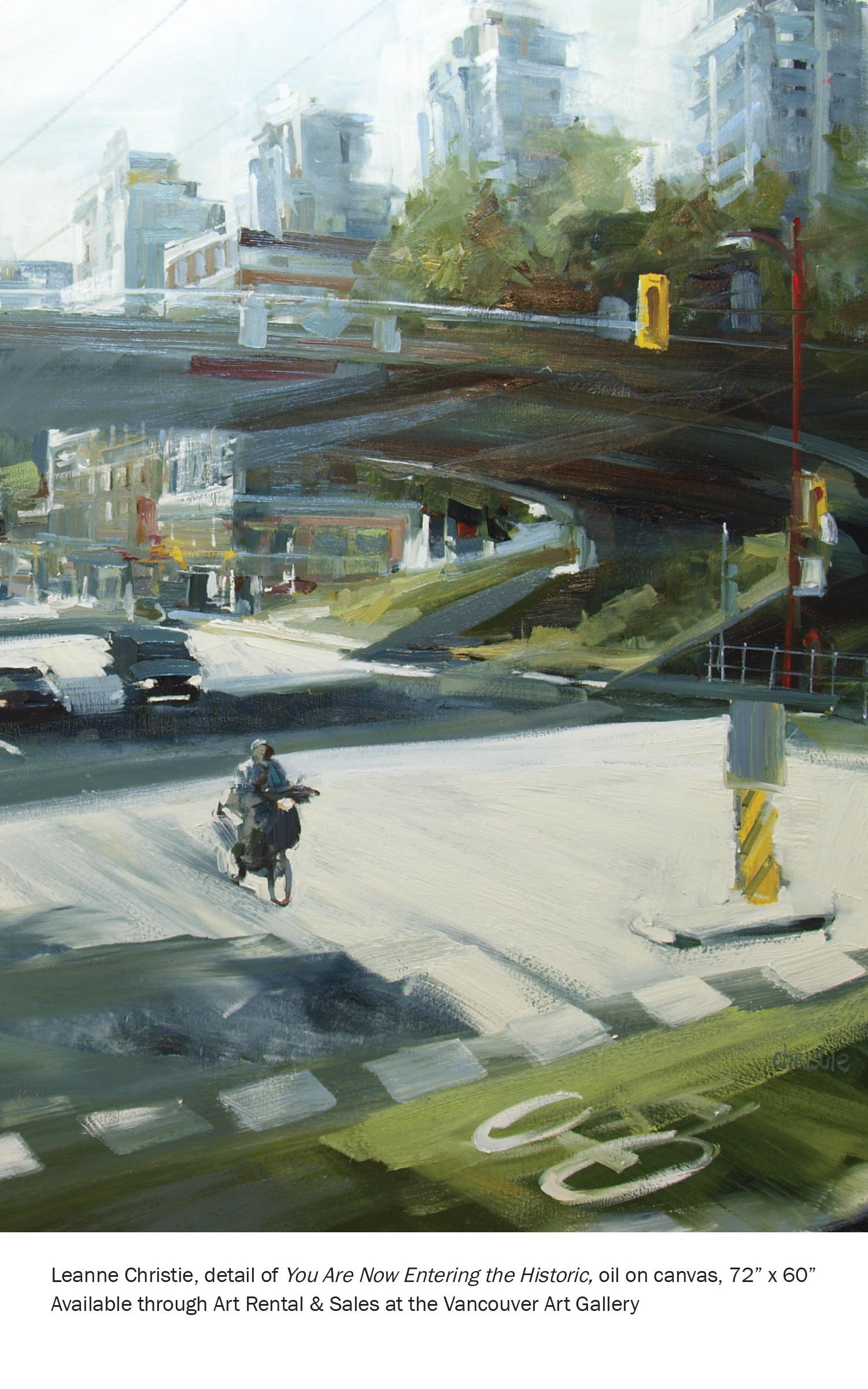
THE ADVOCATE 175 VOL. 81 PART 2 MARCH 2023

VOL. 81 PART 2 MARCH 2023 176 THE ADVOCATE LEGAL SERVICES mcquarrie.com PASSION. TRUST. EXPERTISE. RESULTS. McQuarrie Hunter LLP Suite 1500 13450 102 Avenue Surrey BC V3T 5X3 Email: info@mcquarrie.com Phone: 604.581.7001 Toll-free: 1.877.581.7001 Fax: 604.581.7110 CONTACT MCQUARRIE AT 604.581.7001 MCQUARRIE.COM
ON THE FRONT COVER
CHRISTOPHER HARVEY, Q.C.
By Gavin Hume, K.C., and Timothy Harvey
On September 2, 2022, Christopher Harvey, Q.C., passed away peacefully in Lions Gate Hospital. It was highly unexpected, given Chris’s youthful vigour and irrepressible joie de vivre through 80 years of life, 54 as a practising barrister. Chris loved that, as a barrister, he embodied the rich history of the common law, and he charged himself with helping to pass its knowledge and traditions on to the next generation of lawyers. He authored dozens of articles and columns for the Advocate and served as editor from 2008 to 2013. He considered that period a glowing highlight of his career.
It might seem incongruous that Christopher Harvey, once the boy racing plywood outboards in Prince Rupert Harbour, then a man working nine consecutive seasons on the high-earning fleet of the Halibut Capital of the World, would consider any other vocation than fishing. And yet, with a mind as sharp as a filleting knife, Chris carved out a magnificent career as British Columbia’s foremost legal champion of the fishing industry.
A sixth-generation Canadian born in Nanaimo into a nation at war on Dominion Day of 1942, to an artist mother, Ruth Harvey (formerly Hornsby, raised in Prince George), Chris was steeped from his boyhood in the legal history of British Columbia. His father was the Honourable James “Jim” Teetzel Harvey, M.B.E., Q.C. Jim returned from distinguished wartime service to a family now three children strong (Chris, Peter and Gail) and resumed partnership in Prince Rupert’s leading law firm.1 Brown & Harvey, with the Honourable T.W. (Tommy) Brown, was formed upon Jim’s arrival in Prince Rupert in 1931, prior to which he practised in Prince George, Smithers and Hazelton. Jim accepted an appointment as a County Court judge of Prince Rupert in 1962. It was British Columbia’s largest judi-
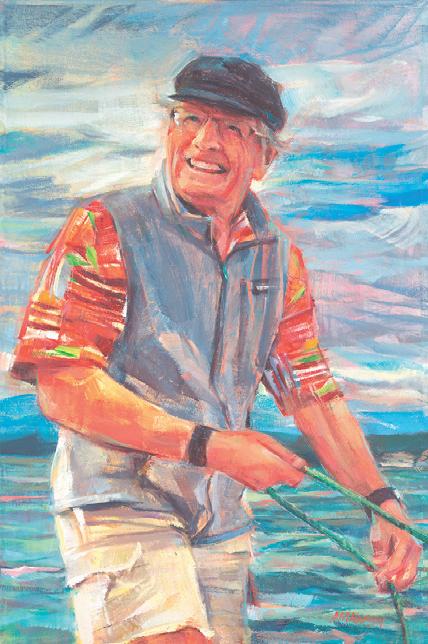
VOL. 81 PART 2 MARCH 2023 THE ADVOCATE 177
cial county, requiring him to travel the northwestern quarter of the province, holding court from the town of Atlin2 to his lakeside lawn near Smithers.3 He held the post until retirement in 1977, but occupied the second courthouse chambers as an advisor to the bench until his passing in 1999. Judge Harvey had a solemn veneer but an active sense of humour, the latter rubbing off in no small measure on his son.
Chris’s grandfather James Albert Harvey, K.C., also loomed large in the family history. He arrived by rail from Ontario to the mining-boom Kootenays in 1897 with his wife Lillian, a favourite sister of Justice James Vernal Teetzel, K.C., of the Ontario High Court who had been made Q.C. in the Victorian era’s waning days. J.V. posted letters to Lillian detailing a family history reaching back to Alexandrew McQueen, a Scottish highlander who battled for the British on the Plains of Abraham before putting down roots in Ontario, two generations before James Albert’s own grandfather set sail from Ireland to New Brunswick. Chris never met his grandfather, but it was James Albert who set the family on its course in British Columbia. Grand-father, father and son combined for 120 years at the bench and bar.
In 1907, Jim was born and James Albert was made K.C. He moved his family from Cranbrook to Vancouver in 1909, forming Taylor and Harvey with S.S. Taylor, K.C. James Albert played a role in the 1910 first sitting of Victoria’s new B.C. Court of Appeal,4 and also served as director of the Bank of Vancouver alongside Lieutenant-Governor T.W. Paterson. He and Lillian raised Jim and his four sisters in a classic mansion in Vancouver’s West End. James Albert passed away in 1918 in the aftermath of a stock market crash that devastated his fortune. He had only his personal law library to bequeath to Jim, who left university after one year for financial reasons.
“I went to sea on a merchant vessel, and I soon received a proposition,” Jim explained to his grandson Tim in his final decade of life. “I had a choice between a career in rum-running or going ashore to study law.” Wisely, Jim chose a five-year articling program at the Vancouver Law School.
Upon completing a B.A. in English and philosophy from McGill in 1965, Chris faced a similar decision between land and sea. Long university vacations had allowed him to fish halibut from Hecate Strait to the Aleutian Islands with skippers Foster Husoy and Sid Dickens. Chris felt drawn to earn his living from the sea—a life of high adventure on his own terms. The legal profession, on the other hand, would mean working in the great shadow cast by his father from the bench of Prince Rupert. But his sagacious Pop suggested a third option: as they scanned the world in the family home overlooking Prince Rupert harbour, glass in hand, he suggested, “Why not go to where the common law began: London, England?”
178 THE ADVOCATE VOL. 81 PART 2 MARCH 2023
Decision made: London in the swinging ’60s was irresistible. Chris would be joined by Dorothy Armitage, whom he had met at McGill and would marry in Paris in 1968. Dorothy would be the mother of all four of Chris’s sons.
Chris breezed through a three-year law course and exams in only two years in the Middle Temple of the Inns of Court School of Law, which had trained barristers since the 14th century. His eldest son, Crane Charles Harvey, was born two months before courses commenced in September 1966. The family’s financial sustenance required Chris to continue working the summer halibut season, despite the length of travel by transatlantic steamer and rail. Chris continued the routine into his early years as a working barrister in London. He would instruct his chambers clerk not to schedule cases during his annual fishing trip. The clerk commended Chris’s choice of aristocratic sport. He imagined a fly rod, tweed jacket and Scottish trout, not a slime-spattered mackinaw and an iron gaff on the heaving decks of a ship at sea. The misconception kept Chris smiling for years.
At the Inns of Court, Chris took an immediate love for a legal profession struggling to bring the law into the modern world. The leader in this was a hero of all law students: Lord Alfred Thomas Denning, Master of the Rolls. He was at the height of his powers and held court every day. Between law classes, Chris would make his way into Lord Denning’s court, slip into the back row and observe the best of the British barristers pitch their cases, refined down to about 15 minutes. Lord Denning would ask what was their best point in the appeal. They all tried to dodge it. Lord Denning, in the kindest possible way, pressed for the answer. When he got it, he would say, “Well, if that is your best point, I don’t think we have to hear your other points.” The young law student in the back row could not help but be overwhelmed by the process, especially the magic that made every loser in Lord Denning’s court feel as though he had won.
In Lord Denning, Chris had found a father figure in law, and in Tom Denning, a friend. He continued to visit Tom at his home in Whitchurch, Hampshire until he passed in 1999 at the age of 100.
Chris developed qualities in himself that he admired as the strengths of Lord Denning’s character: forthright efficiency, and the evocative power of clear, earthy language and his peerless knowledge of the common law. “Like most of his judicial innovations,” Chris wrote, “his protection of individual rights … found its roots in the common law tradition. He went as far back as the Magna Carta, which he frequently cited.” Chris would also invoke the Great Charter for the length of his career.
In a 1968 letter, Chris recounts an evening spent dining in the Middle Temple’s great Elizabethan Hall. It remains one of London’s finest medieval
VOL. 81 PART 2 MARCH 2023 THE ADVOCATE 179
structures, having survived the Great Fire of London in 1666 (fought with beer from the Temple cellar) and both World Wars. Under its famous hammerbeam roof, Chris observed a typical Middle Temple evening: We had a super after-dinner speech from the Solicitor-General … he was talking about the rule of law and the commonwealth; about defending Sheik Abdullah in Karachi, Kenyatta et al in Nairobi. On the 14, Francis Chichester is to be made an Honorary Master of the Bench and will be seated at Drake’s table (from the Golden Hind) amid champagne toasts etc.
Chris then shared a moment of understanding with an observer: There was a Nigerian fellow sipping port and looking about; he was there for the first time, so I asked him what he thought of it all: “Nonsense, all nonsense.” Really it was, but that’s life. Everybody knows that.
This so-called nonsense was something Chris grew to love about the legal community. In about 2002, he was a founding member of the Trafalgar Day Club led by the SSCC (officially, the “Shadowy Secret Central Committee”) that must, for reasons evident, remain unnamed. The members are a group of friends who are lawyers, judges and others with links to Russell and DuMoulin who continue to meet annually on Trafalgar Day to enjoy camaraderie, good wine and “lectures” on such topics as Britain’s naval victories.
In England in the late 1960s, Chris found creative ways to augment and stretch his halibut finances. He used his Ford Cortina as an unregistered taxi in the theatre district, shopped for groceries on the basis of protein per pound and rationed all supplies with exacting parsimony. For the rest of his life, Chris would continue his habit of calculated rationing with everything from toilet paper (only five squares permitted5) to pocket diaries.6 Old habits die hard.
In 1967, he conceived the Middle Templar magazine as a publishing venture in the model of the Advocate. An article in the first edition extolled the virtues of Lord Denning as Master of the Rolls. “Sales were a great success at £2 per copy. We sold 450 copies in 1½ days and made a great walloping profit,” Chris wrote in a hand-typed letter to Dorothy dated February 1968.
Immediately I sent one off to support my application at University College … University C accepted me, but I have learned that the threat of veto from the Higher Degrees sub-committee is a real one! The Head of UC Law Dept is holding my application for the most propitious moment. He is very well known, and solidly on my side ...
The veto never came. Chris distinguished himself as a legal scholar, earning a master of laws degree and a doctor of laws degree from University College, London in 1970 and 1975, respectively. In 1975, Chris produced a 670-page doctoral dissertation on the history of law relating to pollution of
VOL. 81 PART 2 MARCH 2023 180 THE ADVOCATE
rivers and the development of the law of nuisance from ancient to modern times.7 His 1970 master’s thesis entitled “The Duty Concept in Negligence: Liability for Infringement of an Economic Interest” was thought by Chris’s father to be relevant to a case then before the B.C. Supreme Court, Rivtow Marine Ltd. v. Washington Iron Works (1970). Judge Harvey forwarded a copy to the presiding judge, the Honourable Justice J.G. Ruttan, who made reference to Chris’s thesis in his judgment. The case went on to the Supreme Court of Canada, and the thesis was recast as an article in the Canadian Bar Review in 1972, 8 subsequently referred to in nine Canadian decisions between 1976 and 2006.
While in his master’s program, Chris found a place in a leading set of common law chambers as pupil. The pupil’s role was to tag along behind his pupil master, appearing in court dressed in the normal wig and gown, but with no other role to play—just observe and learn. After the first six months, the pupil is deemed sufficiently qualified to appear in court on his own. That assumption was put to the test when in August 1968—less than three years since opening his first law book—Chris found himself as prosecuting counsel in the Old Bailey.
The previous case was a murder case: “Not guilty,” said the jury. “He was damned lucky” commented one elderly lady to another in the gallery before they crossed their arms and settled down to see what the next case had to offer. Their judgment may have been that Chris’s prosecution stumbled more than once. Fair challenges were made to all the evidence Chris had to offer. As Chris said, “Justice was done: acquittals all around.” The two elderly ladies, no doubt, had seen better performances.
Being Canadian conferred the advantage of being memorable: “Give this next brief to that Canadian chap who did a good job on short notice.” Before long, Chris had the beginnings of a small but growing practice. The best of it, he later recalled, was “the fascination of working in a system that had changed little since Dickensian times.”
In his final days at Lions Gate Hospital, his blood oxygen running low, Chris continued to write. He produced this description of the quotidian rhythms of life as a young barrister:
[He would] pick up his brief for the next day, quickly review to see if he needed to take a book, check the British Rail times, plan when to arrive at King’s Cross, Paddington or one of the other London railway stations to arrive in time for court. The next morning, having read the brief thoroughly on the train, he would arrive at his destination, hand in the ticket stub and ask, “Where’s the crown court?” “Up the road, Gov, just past the gaol, can’t miss it.” After trudging up the hill, barrister’s bag over the shoulder, finding his instructing solicitor waiting, they discuss the case. The gowned barrister sweeps into court, doors held open for him.
THE ADVOCATE 181 VOL. 81 PART 2 MARCH 2023
The accused is in the dock, having been brought up from “below”. Chris argues strenuously that the jury cannot convict for whatever defence reasons apply. The jury disagree and convict. The judge determines sentence with little input from counsel, being unnecessary because the sentencing principles are well known. Sentence given is then followed by the order, “take the convict down.” Down he goes, step by step from inside the dock. Walking back to the train Chris notices a small arched, barred, completely dirt-covered window, the top half moon up against the sidewalk, and realises that the other side of that window is “down”.
Then back to chambers hoping there will be a brief waiting to similarly occupy the next day. How not to like that?
By 1975, England was economically the “sick man of Europe”. Coal miners and government were in open battle for control of the country; Maggie Thatcher was not yet on the horizon. Chris reluctantly informed his fellow barristers in chambers that the time had come to return to his Canadian roots. At his farewell party, Chris received a curious gift: “a painting with ‘chambers’ on one side and our neighbours, the Knights Templars, on the other, lying in sarcophagi, crossed legs over a dog, a note of date of death 1170”.9, 10
The family’s canary yellow Morgan was loaded onto one of the last transAtlantic steamers at Tilbury docks. Next stop: Port of Montreal. A crosscountry drive brought the family to Vancouver. For the Prince Rupert fisherman-turned-lawyer, it was a triumphant return. Crane, however, would return to England for two more years at a boarding school near London, where at age nine, he was thriving.
Chris was treated generously by the Vancouver bar. Ladner Downs saw him through a year of Law Society requirements, and in 1976 he was taken in by what he found to be the best litigation firm in Vancouver. Working at Russell and DuMoulin (now Fasken) with counsel including Douglas McK. Brown, Q.C., the Honourable D.M.M. Goldie, Q.C., and the Honourable Allan McEachern, he felt he was back in England. The quality of counsel work was just as high.
Chris developed a diverse and unique scope of practice. Gavin Hume, K.C., summarizes it well in an article discussing Chris’s “retirement” of 2013 in the Advocate (although, as Hume points out, one couldn’t use the word “retirement” and “Chris Harvey” in the same sentence). Chris carried on a robust practice into his 80th year; in August 2022, on a laptop in Lions Gate Intensive Care Unit, he continued to conduct billable hours.
The range of issues covered in his cases illustrates his breadth and depth of knowledge of the law, and includes marine, fishing and aquaculture, aboriginal (including several leading cases in the Supreme Court of Canada), marine insurance, libel, slander, helicopter and hot air balloon incidents, the defence of various charges under the Fisheries Act, Customs Act and Railway Act, international maritime boundary issues, interpreta-
182 THE ADVOCATE VOL. 81 PART 2 MARCH 2023
tion of wills, First Nations elections issues, expropriation, patents and trademark cases … Marketing boards dealing with [cheese], chicken, turkey, eggs, tomatoes and potatoes all felt the sting of his arguments.11
Chris was naturally drawn to the defence of fishermen and fisheries, and in his own words, “never turned down a case from a fisherman in trouble”. In 2010, he was a natural choice to represent the Westcoast Trollers Area G Association, United Fishermen and Allied Workers’ Union in the Cohen Commission, which investigated the decline of sockeye salmon in the Fraser River. Chris’s cross-examinations revealed a parallel decline in the quality of sockeye salmon fisheries management.
Chris was appointed Queen’s Counsel in 1990. Moving to MacKenzie Fujisawa in 2003, he worked with Thomas Braidwood, Q.C., and a host of exemplary barristers, most closely with Chris Watson and Ian Knapp. Knapp described the great advantage Chris drew from his impressive breadth and depth of knowledge of the law:
One of Chris’s great regrets about our modern profession is that too many lawyers specialized at too early a stage in their careers, preventing them from seeing the bigger picture of cases and broader dimensions of our law. Chris, for his part, had a remarkable knowledge of the law. He often out-manoeuvred his opponents by drawing on principles of law which they had never even considered, due to excessive specialization.
Chris believed firmly in the cab-rank rule, and as a result he often took cases no other lawyer wanted. He argued them vigorously. In Knapp’s words, “His method of rapidly ascertaining the essential issues in a case and then focusing with laser-like precision on those points made his preparations efficient, reduced trial times and kept clients’ bills under control.”
One of Chris’s cab-rank cases had him represent the Nicola Valley Rod and Gun Club respecting what was viewed as the appropriation of public lakes by private interests. He had no real expectation of full payment for these cases, beyond perhaps a fishing rod and a few good lunches, but he drew immense satisfaction from battling to protect access to public rights of way and public lakes. After a decisive B.C. Supreme Court victory in Douglas Lake Cattle Company v. Nicola Valley Fish and Game Club (2018), the outcome was overturned in 2021 by the B.C. Court of Appeal in what Chris described as a “very strange ruling about trespassing on [public] water”. Chris felt that justice would have been restored had the Supreme Court of Canada not declined to hear an appeal. For the public right of access to be restored will now take a new case before the courts, and a judge who will not allow precedent to stand in the way of justice.
Chris never lost sight of how efficiency in Lord Denning’s court contributed to the accessibility of justice. He used his final “Entre Nous” edito-
THE ADVOCATE 183 VOL. 81 PART 2 MARCH 2023
rial12 to address the need for “serious pruning” to the modern rules of court, lamenting “roadblock after roadblock” placed in the way of the modern litigant. Until 1979, a much simpler set of rules had remained essentially unchanged from the English rules of 1883. They featured “stripped-down pleadings and limited discovery” and were contained in a single slender volume, the B.C. Supreme Court Rules of 1912, that emphasized brevity, avoiding “unnecessary prolixity” and requiring counsel to state “as concisely as possible the contentions to be urged”.
If we are serious about access to justice, we should throw out the existing civil rules and return to a rule book with nothing but the essentials … our trial and pre-trial procedures, like most things in life, have developed an excess of appendages and fluff … We should abolish the current civil rules and start over. They have been an unmitigated disaster.
Chris’s personal brand of accessible justice involved conveying himself to clients and courthouses up and down the coast in the open-topped, 23’ highspeed boat he operated from June 1987 until June 2022, just two weeks shy of his 80th birthday. A one-off custom vessel, the boat was modelled after the famous Miami Vice speedboat but constructed of aluminum. It featured a sealed deck that was entirely above the waterline, allowing it to self-drain if swamped by any amount of water. The boat was an extension of Chris’s own essence: pure efficiency and durability, with no unnecessary frills that would impact performance. He named her the Northern Freedom, which combined two concepts that meant a lot to him. It was also the name of a client’s ship that was lost at sea, the subject of one of Chris’s infamous civil jury trials.
Chris put together an impressive string of 33 annual summer voyages over a 34-year span in the Northern Freedom, with only one season lost to COVID restrictions. Passengers recall how Chris created the impression of disaster narrowly averted, while exuding calm enjoyment in the most intolerable conditions. Chris’s risk tolerance was evidence of his high confidence in the Northern Freedom as a ship, and in himself as ship’s captain. When a passenger asked with a hint of concern about the apparent nonexistence of a backup engine, Chris would gesture casually to the Sea Clipper canoe strapped to the vessel’s side. The passenger was left to reflect that they were the backup engine.
Volume one of the Northern Freedom’s log books13 opens with the comment “fine dark lager – on tap” made in Silva Bay on June 26, 1987. The vessel’s maiden voyage under Chris’s captaincy paused on Savary Island, then continued northwest to Bella Bella, where, rather boldly, Chris, two sons and a dog turned west into the open Pacific. His calculation of the Northern Freedom’s compass deviation must have been slightly off, as they would
184 THE ADVOCATE VOL. 81 PART 2 MARCH 2023
have missed the islands entirely and continued westward toward Japan had a fortuitous break in the clouds not allowed Matthew, age ten, to sight a hump on the northern horizon. “Is that an island or a cloud?” his sons debated as Chris swung the bow almost 90° to starboard. At 7 p.m., a full five hours since leaving the mainland, they came abeam of Cape St. James on Kunghit Island, having consumed half of the ship’s 100 gallons of fuel. They would need both luck and fair seas to make it back to Bella Bella, so they dropped anchor between the fjord-like walls of Luxana Bay, unstrapped the canoe and set off to explore the archipelago by paddle.
“In a different world several months later, I found myself cross-examining a fishery officer in a trial in Prince Rupert,” Chris wrote in an unpublished chronicle of the adventure.
He expressed the opinion that a VHF transmission from a fishery patrol vessel at the south end of the Charlottes could be heard in Dixon Entrance. “Where was the vessel?” “Luxana Bay on Kunghit Island.” “Luxana Bay! ... but there are huge mountains around all sides of Luxana Bay.” I could see him wondering how a dumb lawyer from Vancouver could possibly have known that.
For the Northern Freedom’s first decade, Chris’s crew often consisted of his children Matthew, Timothy and Jonathan, and by the mid-nineties, his new bride Anne-Marie, who was soon to serve as the Advocate’s cover artist (1999–2012). In more recent times, many of his grandchildren joined his adventures. Anne-Marie married Chris in a beautiful full-moon ceremony on Savary Island in August 1997, with Gavin Hume as best man. Chris had purchased the land on Savary in 1979 and barged a 1930s house up the coast from West Vancouver behind a client’s fishing vessel. He called the island home his “sanctuary” and spent the opening and closing of each summer on Savary, book-ending his annual adventure north.
Chris and Anne-Marie would spend weeks on these expeditions exploring remote stretches of British Columbia’s coastline, looking for crescent beaches and fishing holes, dipping in hot springs and paddling up river estuaries to watch grizzly bears. On the exposed outer coast, while Anne-Marie painted, Chris would canoe solo in tidal whitewater caused by ocean swells roiling around rocky outcrops. He found it altogether delightful, a sort of canoe ballet, until, inevitably, a wave spilled him onto the barnacles and all but snapped the canoe’s gunwale.
Chris would eventually motor up to a community dock and pull a carefully folded suit and leather briefcase from below the Northern Freedom’s decks, to appear respectable, if well-weathered, in the courthouse of places like Masset or Prince Rupert. He would emerge from the wilderness on
THE ADVOCATE 185 VOL. 81 PART 2 MARCH 2023
schedule, despite his journeys invariably featuring a healthy measure of misadventure: cold-water swimming to change a damaged propellor, or paddling half a day by canoe to fill a few milk jugs with fuel.
Once in court, Chris would drive to the heart of the issue in a way that all but forced the opposition to concede. There was a case involving the crab fishery near Penelakut Island; as one would expect, the best crabbing was right along a boundary with the closed area. Chris’s clients did well by setting traps close alongside the line. On one occasion, before they managed to raise the traps from the ocean floor and scan the barcodes to transmit their position, the ship had drifted across the boundary and into the closed region. Ian Knapp recalls how Chris reduced the issue in dispute to one simple question when seeking leave to appeal to the Court of Appeal: “What is fishing?”
“Chris’s opponent was left in the unenviable position of having to explain to the court that it would be of no assistance to the bench and the bar to know what the law considers to be ‘fishing.’ Needless to say, Chris was granted leave to appeal.”
Many of Chris’s cases cited the provisions of the Magna Carta. In R. v. Gladstone (1996), the Supreme Court of Canada accepted Chris’s argument that the Magna Carta guaranteed a common law right to fish for Aboriginal and non-Aboriginal alike. His November 1996 article, “The Abolition of the Public Right of Fishery Proposed by Bill C-62”, was cited in Canadian senate debate and reprinted in the Advocate in June 1997. Chris opened with the words: “Bill C-62, the proposed new Fisheries Act … contains provisions … designed to abrogate the public right of access to the fishery, a right that has existed in the common law since the Magna Carta, 1215.” He described the abuses of King John that gave rise to the Magna Carta: the king would clear the public from fishing grounds and grant exclusive access to his favoured groups—precisely what the proposed Canadian legislation would allow, rolling back the law by eight centuries.
Besides enshrining the rights of trial by jury and habeas corpus, the Charter, in a lesser-known passage, prevented the monarch from establishing any new exclusive fisheries in tidal waters. This, the forty-seventh provision of the Magna Carta developed into what became known in English law as the “public right to fish”.
Chris wrote this on the heels of Chief Justice Antonio Lamer’s pronouncement that owing to the Magna Carta, “subjects of the Crown are entitled as of right not only to navigate but to fish in the high seas and tidal waters alike”. It was the “unquestioned law”.14
Nevertheless, some lawyers have questioned whether an archaic charter, inscribed on sheepskin parchment in medieval England, could possibly
186 THE ADVOCATE VOL. 81 PART 2 MARCH 2023
hold water in modern times. Knapp recalled one such occasion during “one of his last, great cases”, when Chris was in court to make an application to certify a class proceeding on behalf of geoduck fishermen in British Columbia, who were claiming compensation for the closure of several large areas of the coast to fishing. “As one would expect, an important part of Chris’s argument involved the Magna Carta and the public right to fish.”
During a break, one of the counsel acting for DOJ jovially suggested that Magna Carta was not the law of the land. Chris’s response was elegant. He marched her down the hall of the courthouse to where a copy of that document hangs prominently, and asked her: “Why, if it is not part of the law of the land, is it hanging on the walls of our courts?”
Chris was widely appreciated and his loss is felt heavily in the legal profession, in coastal communities and in the fishing industry, which carried his lifetime loyalty. Chris enjoyed working with First Nations—above all, the fishing community of Lax Kw’alaams, formerly Port Simpson, north of Prince Rupert. In a moving letter read aloud at his Celebration of Life, the Lax Kw’alaams Band pledged to launch a fishing vessel bearing his name on its hull—both to honour Chris, and to send a clear message to Fisheries and Oceans Canada.
Their final summer expedition together to Prince Rupert was meant to be the opening of a new chapter of coastal navigation for Chris and Anne-Marie. It was the first lengthy voyage on their new ship, a stately but workmanlike dual-engine jet boat with an aluminum hull and a proud West Coast design that resoundingly echoed the commercial fishing vessels Chris worked as a younger man. They named her Wanderingspirit, the name given to Chris as an honourary member of the Salt River First Nation.15 Chris was inordinately pleased to have Anne-Marie on board again. In recent years, she had lost her enthusiasm for being rattled about in the Northern Freedom. Their faithful white giant of a dog, Pip, rounded out the crew.
Wanderingspirit steered into the Port of Prince Rupert just as Chris’s last great legal victory bore fruit. He had managed to “pry open a salmon fishery” that the minister had seemed determined to permanently close. With just hours to respond to an injunction application that Chris had filed on behalf of the Lax Kw’alaams Band, the minister, perhaps coincidentally, had opened the Skeena River fishery. In his last days, low oxygen affecting his vision but not his memories, the final words of prose Chris ever wrote were these:
Chris and Anne-Marie had the profound satisfaction of seeing gillnetters streaming out of Prince Rupert harbour, all shapes and sizes, a seemingly never-ending stream, for an opening the next day. An industry that is essential to the survival of local coastal communities was preserved from
THE ADVOCATE 187 VOL. 81 PART 2 MARCH 2023
effective government expropriation … Seeing that, in the form of a stream of gillnetters heading to their favourite fishing spots, was very satisfying. One little camping boat going into harbour and hundreds of gillnetters streaming out …
He closed with an exhortation to a younger generation of barristers to continue with his battle, to carry forth the banner handed down from those knights and rebel barons who laid the foundations of modern justice: When necessary, I marshalled the historical weapons buried well down in the common law toolbox … There are competent junior barristers to pick up the pieces and run with them. My dying wish is that they will follow my example and find ways in that toolbox to protect a way of life that communities rely on but governments would simply eliminate.
Chris lived and loved intensely. Predeceased by his parents and brother Peter, and survived by his sister Gail, four sons, three stepsons, twelve grandchildren, and his beloved wife Anne-Marie, Chris will be remembered for the immeasurable impact he made on those people and causes he cared most about.
ENDNOTES
1. The Honourable JT Harvey’s military career is summarized in “Welcome Home” (1945) 3 Advocate 186 at 188.
2. The Honourable JT Harvey, “Meditations in the Atlin Vault” (1964) 22 Advocate 133 at 133–36.
3. The Honourable JT Harvey was well known for his habit of holding court on his summer cottage lawn, a practice noted in “Nos Disparus” (1999) 57 Advocate 597 at 597–600.
4. Discussed in greater detail in (2010) 68 Advocate, an edition marking the centennial of the BC Court of Appeal.
5. Gavin Hume, Best Man’s Speech (Savary Island), Wedding of Chris and Anne-Marie, Savary Island.
6. Chris was generous but let nothing go to waste. He was known for keeping his calendar in a distinctive leather-bound pocket diary manufactured in London, and gifted them to many lawyers on an annual basis. He would then ascertain over the course of the year who was in the habit of using them; only those able to produce their London Diary upon request would remain on the list for resupply.
7. His doctoral dissertation ultimately led to a contribution on the history of nuisance in a chapter in The Law of Nuisance by Gregory S. Pun and Margaret I Hall, as reported by Gavin Hume in (2013) 71 Advocate 568.
8. Chris Harvey, “Economic Losses and Negligence: The Search for a Just Solution” (1972) 50 Can Bar Rev 580.
9. This rather cryptic painting described by Chris in his Life Notes, written in his final days, concerns the origins of the Magna Carta and English common law.
The Inner and Middle Temples stand beside the Temple Church, built by the Knights Templars in the late 12th century on land purchased on the banks of the Thames to be their stronghold in England. Among the Templars “lying in sarcophagi” is the early lawmaker William Marshal, First Earl of Pembroke, who was chief negotiator of the Magna Carta on behalf of King John in meetings held within Temple Church. As regent following John’s death, Marshal reissued an amended Magna Carta in 1216 and 1217 under his own seal, on terms favourable to the barons.
10. The “date of death 1170” denotes the murder of Thomas Becket, Archbishop of Canterbury, by four knights of the realm. The murder removed an obstacle to King Henry II’s reorganization of England’s administration of justice. The king abolished church courts, implemented jury trials and introduced a system of writs that ended the practice of trial by combat to settle land disputes. Though his intent was to consolidate power in the royal court, these actions established enduring legal traditions.
11. Gavin Hume, QC, “On the Front Cover: Christopher Harvey, Q.C.” (2013) 71 Advocate 657 at 659.
12. “Entre Nous” (2013) 71 Advocate 649.
13. The log books, which remain aboard the Northern Freedom, contain records of the joys, mishaps, friendships, events and places experienced, diligently recorded alongside engine hours, compass bearings and travel times from June 1987 to June 2022.
14. R v Gladstone, [1996] 2 SCR 723 at para 67.
15. The Salt River First Nation was another of Chris’s Indigenous clients, located in Alberta.
VOL. 81 PART 2 MARCH 2023 188 THE ADVOCATE
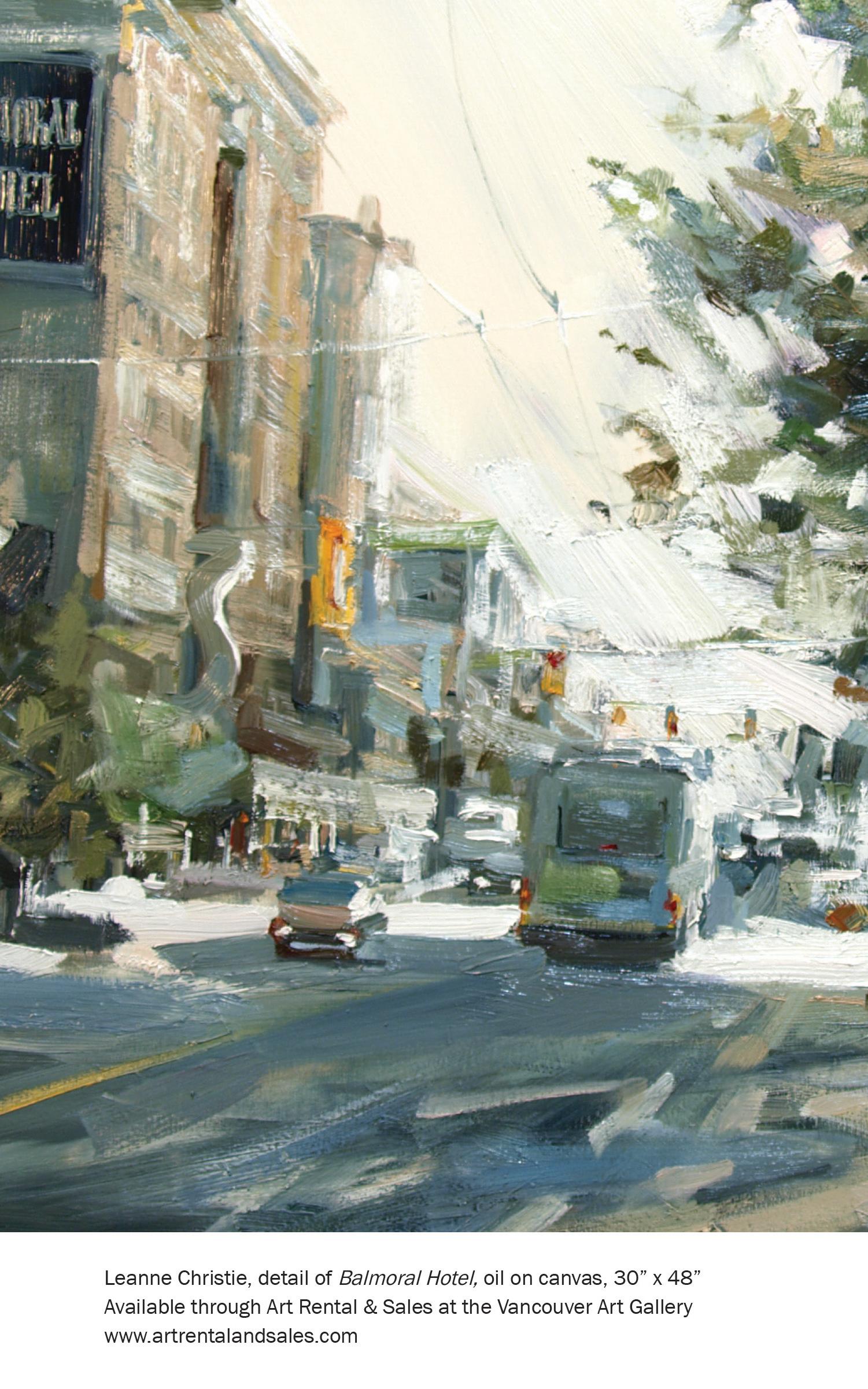
THE ADVOCATE 189 VOL. 81 PART 2 MARCH 2023

VOL. 81 PART 2 MARCH 2023 190 THE ADVOCATE Suite 700 – 1177 West Hastings Street, Vancouver, BC, V6E 2K3 Telephone: 604.687.4544 • Facsimile: 604.687.4577 • www.bmmvaluations.com Vern Blair: 604.697.5276 • Rob Mackay: 604.697.5201 • Gary Mynett: 604.697.5202 Kiu Ghanavizchian: 604.697.5297 • Farida Sukhia: 604.697.5271 Lucas Terpkosh: 604.697.5286 • Sunny Sanghera: 604.697.5294 Business Valuations • Matrimonial disputes • Shareholder disputes • Minority oppression actions • Tax and estate planning • Acquisitions and divestitures Personal Injury Claims • Income loss claims • Wrongful death claims Economic Loss Claims • Breach of contract • Loss of opportunity Business Insurance Claims • Business interruption • Construction claims Forensic Accounting • Accounting investigations • Fraud investigations
The Litigation Support Group
Left to Right: Kiu Ghanavizchian, Sunny Sanghera, Gary Mynett, Lucas Terpkosh, Vern Blair, Rob Mackay, Farida Sukhia
SURREPTITIOUS RECORDINGS BY CIVILIANS IN CRIMINAL TRIALS: ARE THEY CONSTITUTIONAL?
By Robert Diab
It is not a criminal offence in Canada to surreptitiously record a conversation to which you are a party. In some provinces, making such a recording may be tortious.1 Whether or not it is legal, the act can be invasive and unfair. Yet, for decades, criminal courts across Canada have admitted into evidence recordings that a complainant has surreptitiously made of their conversation with the accused. Prosecutors have had to satisfy a common law test to establish that a recording is accurate and more probative than prejudicial.2 Crown counsel have assumed they were otherwise fair game under the Canadian Charter of Rights and Freedoms, and courts have agreed.3
But the law is changing. Recent decisions of the Supreme Court of Canada (the “Court”) have put the building blocks in place for a court to recognize that police or Crown receipt of a surreptitious recording from a thirdparty civilian, with the intention of using it for prosecutorial purposes, constitutes a search or seizure under s. 8 of the Charter and would require a warrant to render it reasonable. At least one superior court has done so, in a case involving a civilian who made an unlawful recording of a conversation to which she was not a party.4 The reasoning should apply to any surreptitious recording, including those in which the complainant is a party and gives the recording to police.
One might ask: What would be the point? What mischief on the part of the state would this seek to avoid? Would a warrant not be a mere formality?
I argue that there are compelling reasons to recognize a privacy interest in surreptitious recordings under the Charter. Doing so would better protect everyone’s privacy without precluding the Crown from using a recording to obtain a conviction.
THE SUPREME COURT OF CANADA’S DISTASTE FOR SURREPTITIOUS RECORDING
In 1974, Parliament added a framework to the Criminal Code for lawful wire-
THE ADVOCATE 191 VOL. 81 PART 2 MARCH 2023
tapping.5 A cornerstone of that framework is the offence of “intercepting” a private communication with a device 6 One exception explicitly carved out of the offence is for persons who intercept a conversation with the consent of one party.7 In R. v. Duarte, 8 the Court held that police cannot circumvent the requirement to obtain a warrant by obtaining an informant’s consent to record a conversation they are about to have with a target. While the Charter does not protect us from the risk of speaking to a “tattletale”, Justice La Forest reasoned, the risk of our interlocutor “making a permanent electronic record” is a risk of a “different order of magnitude”.9 The concern in that case was not just that the state might obtain such a recording, but that such a recording might be made.
The Court’s other cases dealing with surreptitious recording— R. v. Wong, 10 R. v. Araujo, 11 and R. v. Fliss12—concern whether police are authorized to make a recording or what use may be made of the fruit of a recording they made unlawfully. None deal with the status or use that police might make of a recording by an independent civilian. The Court has, however, dealt with a number of related issues.
These issues can be approached in terms of two broader questions: Do police conduct a search or seizure on receipt or review of evidence from an independent party? And does a person have a reasonable expectation of privacy in a surreptitious recording that a civilian volunteers? I take each issue in turn before addressing the rationale for a warrant requirement.
POLICE RECEIPT ON THIRD-PARTY DISCLOSURE
The Court has not decided whether police conduct a seizure when an independent civilian brings them evidence or a search when police proceed to review it. However, the Court has consistently held that where police ask for or receive an item in which the claimant has a reasonable expectation of privacy, police conduct a seizure upon receipt of it or a search on review of it if they act with an investigative purpose.
In R. v. Dyment, 13 a doctor took a vial of blood from an accused for medical purposes after a car accident and without his knowledge. Discovering that the accused had been drinking, the doctor decided to turn over the sample to police. Setting out the majority’s reasons on point, La Forest J. held: “If I were to draw the line between a seizure and a mere finding of evidence, I would draw it logically and purposefully at the point at which it can reasonably be said that the individual had ceased to have a privacy interest in the subjectmatter allegedly seized.”14 The officer’s receipt of the sample constituted a seizure because the accused retained a privacy interest in the sample when the officer received it.15 The warrantless seizure was unreasonable.16
192 THE ADVOCATE VOL. 81 PART 2 MARCH 2023
In R. v. Colarusso,17 following a motor vehicle accident involving a fatality in which alcohol was suspected, hospital staff took a blood sample and, with an officer’s assistance, a urine sample. The accused consented to samples being taken for “medical purposes”.18 At the coroner’s behest, the officer delivered the samples to a forensic lab for storage. A majority of the Court held that the officer conducted an unreasonable seizure because he intended “from the outset” to make use of the samples for a prosecutorial purpose to which the accused had not consented.19
In R. v. Cole, 20 a school principal gave police a teacher’s board-issued laptop containing nude pictures of a student. The Court held that the principal was authorized to seize the laptop for administrative purposes, but the accused retained a reasonable privacy interest in the laptop since he was permitted some personal use of it. Police receipt of it for a criminal investigative purpose constituted a seizure. Justice Fish held that police may have been authorized to take custody of it temporarily, for safekeeping, while obtaining a warrant.21 Holding on to it at length and reviewing its contents without a warrant was unreasonable.22
In R. v. Spencer, 23 police asked an internet service provider to disclose subscriber information attached to an internet protocol address implicated in a child pornography investigation. The Court held that subscriber information attracts a privacy interest, given what it may reveal about online activity. In light of this interest, police conducted a search in asking for and receiving the accused’s subscriber information from the service provider— a search requiring some form of authorization to be reasonable.24
In R. v. Marakah, 25 the Court held that the accused retained a reasonable expectation of privacy in texts that police seized from a recipient’s phone when investigating firearms offences. In obiter, Chief Justice McLachlin considered how the holding might be applied where “police access text messages volunteered by a third party”.26 If the accused were held to retain a privacy interest in the exchange, she held, s. 8 would be engaged and “police officers will be aware that they should not look at the text messages in question prior to obtaining a warrant”.27
PRIVACY WITHOUT CONTROL
The section above shows how the Court has consistently found a search or seizure where police take or receive an item from a third party in which the accused retains a privacy interest. That being the case, does an accused have a reasonable privacy interest in a surreptitious recording a civilian turns over? The Court’s holdings in Marakah and R. v. Reeves28 suggest that an accused person does have such an interest and it would not be waived by another party’s voluntary disclosure.
THE ADVOCATE 193 VOL. 81 PART 2 MARCH 2023
Marakah established that text messages can engage a high privacy interest, given how much personal information can be gleaned from them,29 and that a sender can retain privacy in a message despite not having control over it in the recipient’s hands. As Chief Justice McLachlin held, a sender still exerts “meaningful control over the information they send by text message by making choices about how, when, and to whom they disclose the information”.30 As a result, she held, “the risk that a recipient could disclose an electronic conversation does not negate a reasonable expectation of privacy in an electronic conversation”.31
In Cole and Reeves, the Court rejected the third-party consent doctrine.32 The school board in Cole owned the laptop the principal turned over to police. The Court held that the board’s consent could not authorize police to seize or search the device. Third-party consent would entail police interference with a person’s privacy interest “on the basis of a consent that is not voluntarily given by the rights holder, and not necessarily based on sufficient information in his or her hands to make a meaningful choice”.33 In Reeves, a spouse consented to police seizing the family computer alleged to contain evidence of her partner’s possession of child pornography. Citing Cole, the Court held that police could not rely on the spouse’s consent, despite her having a shared or “overlapping” interest in the device.34 Justice Karakatsanis, for the majority, wrote: “[w]e are not required to accept that our friends and family can unilaterally authorize police to take things that we share”.35
An accused would have a reasonable expectation of privacy in the subject matter of a surreptitious recording—the conversation itself—on the basis of their assumption that it was private and confidential in nature, and the assumption being objectively reasonable.36 Provincial privacy law and criminal cases in which recordings are tendered (recognizing a prejudice to the accused and to the administration of justice) would support this finding.37 And as Cole, Marakah and Reeves have established, the accused would retain their privacy interest in the recording despite the complainant’s consent to provide it to police or Crown. Police or Crown taking custody of the recording or proceeding to review with a prosecutorial purpose would engage s. 8 and require a warrant to be reasonable.38
WHY BOTHER WITH A WARRANT?
One might ask: What possible purpose does insisting on a warrant serve here? By the time a civilian has made a recording and described its illicit content to police, has the damage not already been done? What mischief on the part of the state would we avoid by insisting that police obtain a warrant?
VOL. 81 PART 2 MARCH 2023 194 THE ADVOCATE
In a number of cases, the Court has affirmed that even if police know what an item contains, on the basis of what a third party has told them, an accused may still retain a privacy interest in the item against the state.39 The need to obtain a warrant in these cases is not a formality, because the Court recognizes a significant difference between a third party violating a person’s privacy and the state doing so. Holding the state to a higher standard protects everyone’s privacy in at least two important ways.
In Reeves, Justice Karakatsanis held that “[w]hen police seize a computer, they not only deprive individuals of control over intimate data in which they have a reasonable expectation of privacy, they also ensure that such data remains preserved and thus subject to potential future state inspection”.40 This is true of a surreptitious recording. State possession of it deprives a person of control over the fate and possible dissemination of it. Insisting police obtain a warrant here would mean that police would have to report the seizure of a recording to a justice and comply with post-seizure requirements in the Criminal Code, including the provisions for returning or destroying the evidence in the event of a stay or after the proceeding has ended.41
Justice Karakatsanis provided a broader rationale in Reeves that also applies here. The requirement that police obtain a warrant to render a search presumptively reasonable “more accurately accords with the expectations of privacy Canadians attach to their use of personal home computers and encourages more predictable policing”.42 As the Court held in Hunter v. Southam Inc. , predictable policing and protecting privacy are both supported in turn by clear rules and objective standards that help to avoid unreasonable searches before they occur.43
The concerns set out here may seem remote or abstract. But the prospect of police listening to or seizing an invasive recording on the basis of a civilian report about it possibly containing incriminating content is out of step with our general expectations. We assume that police would not intrude on us in this way unless a civilian’s report were credible, an officer’s belief in the probability of an offence having occurred is reasonable and an independent third party confirms this. Given the ease with which recordings can be made, stored and shared—and their common use in criminal trials—the failure to provide this vital safeguard imperils everyone’s privacy and security.
ENDNOTES
1. Saskatchewan, Manitoba and Newfoundland and Labrador’s privacy statutes explicitly stipulate that surreptitious recording without lawful authority is prima facie evidence of a violation of privacy and actionable per se: Privacy Act, RSS 1978, c P-24; The Privacy Act, CCSM c P125; Privacy Act, RSNL 1990, c P-22. See also British Columbia’s Privacy Act, RSBC 1996, c 373, s 1(4) (stating that “privacy may be vio-
lated by eavesdropping or surveillance, whether or not accomplished by trespass”).
2. More precisely, the test for admitting an audio recording, set out in R v Bulldog, 2015 ABCA 251 at paras 31–33, asks whether a recording “accurately and fairly presents the information that it is to convey”, whether it is relevant and whether its probative value outweighs its prejudicial effect. See R v GJ,
THE ADVOCATE 195 VOL. 81 PART 2 MARCH 2023
2012 ONSC 5413 [GJ] (foster parent admitting to sexual assault) and R v Iyer, 2015 ABQB 577 [Iyer] (developer making fraudulent misrepresentations), in which the court admits clearly inculpatory recordings on the basis of a high probative value; and R v Parsons, 2017 CanLII 82901 (NLSC) [Parsons] (accused discussing an alleged sexual assault with a complainant and her sisters), where the court declines to admit a short, ambiguous recording due to its low probative value.
3. In GJ, Iyer and Parsons, supra note 2, the court considered but rejected the claim that in making or turning over the recording to police, the accused’s rights under s 8 were engaged.
4. The court in R v Vey, 2019 SKQB 135 [Vey], at paras 122–26, found that police had seized a surreptitious recording a wife had made of her husband and another woman conspiring to kill the latter’s spouse. The finding that police had carried out a seizure turned in part on police having advised the complainant that they had to take the recording from her. This, along with listening to it without a warrant, violated s 8, resulting in exclusion under s 24(2).
5. Criminal Code, RSC 1985, c C46, Part VI.
6. Ibid, s 184(1).
7. Ibid, s 184(2).
8. [1990] 1 SCR 30 [Duarte].
9. Ibid at 48.
10. [1990] 3 SCR 36.
11. [2000] 2 SCR 992.
12. 2002 SCC 16.
13. [1988] 2 SCR 417.
14. Ibid at 435.
15. As La Forest J put it, “the sample was surrounded by an aura of privacy meriting Charter protection”: ibid at 435.
16. Ibid at 438.
17. [1994] 1 SCR 20.
18. Ibid at 30.
19. Ibid at 58–60.
20. 2012 SCC 53 [Cole].
21. Ibid at para 65.
22. Ibid at paras 62–71.
23. 2014 SCC 43 [Spencer].
24. Ibid at para 73.
25. 2017 SCC 59 [Marakah].
26. Ibid at para 50.
27. Ibid
28. 2018 SCC 56 [Reeves].
29. Marakah, supra note 25 at paras 35, 37 (“it is difficult to think of a type of conversation or communication that is capable of promising more privacy than text messaging”; they are “capable of revealing a great deal of personal information”: para 35).
30. Ibid at para 39.
31. Ibid at para 40.
32. Cole, supra note 20; Reeves, supra note 28.
33. Cole, supra note 20 at para 78.
34. Reeves, supra note 28 at paras 40–55.
35. Ibid at para 44.
36. See Marakah, supra note 25 at para 15 for the Court’s general test for finding a reasonable expectation of privacy: “What was the subject matter of the alleged search? Did the claimant have a direct interest in the subject matter? Did the claimant have a subjective expectation of privacy in the subject matter? If so, was the claimant’s subjective expectation of privacy objectively reasonable?” [numbering removed]. Applying this test in Vey, supra note 4, the Saskatchewan Court of Queen’s Bench found that the accused had a reasonable expectation of privacy under s 8 in the conversation that was surreptitiously recorded in that case.
37. See the statutes cited in note 1 above and the cases cited in note 2 above.
38. The court in Vey, supra note 4, makes these findings. Justice La Forest, in obiter in Duarte, supra note 8 at 57, gestured at this general position on surreptitious recordings: “A conversation with an informer does not amount to a search and seizure within the meaning of the Charter. Surreptitious electronic interception and recording of a private communication does. Such recording, moreover, should be viewed as a search and seizure in all circumstances save where all parties to the conversation have expressly consented to its being recorded. Accordingly the constitutionality of ‘participant surveillance’ should fall to be determined by application of the same standard as that employed in third party surveillance, i.e., by application of the standard of reasonableness enunciated in Hunter v. Southam” [emphasis added].
39. A clear example of this is R v Buhay, 2003 SCC 30, where guards had opened a temporarily private locker to find a bag containing marijuana and reported it to police. The Court held that despite the guards having violated the accused’s privacy, he retained a privacy interest in relation to police who should not have searched the locker without a warrant. Other examples include Cole, supra note 20, and Reeves, supra note 28 (in the one case, the principal having told police what the computer contained; in the other case, the spouse having done so).
40. Reeves, supra note 28 at para 30.
41. Criminal Code, supra note 5, ss 489.1, 490.
42. Reeves, supra note 28 at para 35.
43. [1984] 2 SCR 145. Dickson J, as he then was, noted at 160 that the purpose of s 8 is “to protect individuals from unjustified state intrusions upon their privacy. That purpose requires a means of preventing unjustified searches before they happen, not simply of determining, after the fact, whether they ought to have occurred in the first place. This, in my view, can only be accomplished by a system of prior authorization, not one of subsequent validation” [emphasis in original].
196 THE ADVOCATE VOL. 81 PART 2 MARCH 2023
DISALLOWANCE IS THE PALADIN1 OF THE RIGHTS AND FREEDOMS IN THE CANADIAN CHARTER
By Darrell W. Roberts, K.C.
In the last two or three years, there have been a number of articles by Globe and Mail senior columnist Andrew Coyne warning that there is a constitutional crisis in Canada because the courts are unable to protect against provincial government violations of fundamental rights and freedoms in the Canadian Charter of Rights and Freedoms by reason of the Charter’s notwithstanding clause and therefore the federal power of disallowance must be revived.2
While the federal power of disallowance in the Constitution Act, 1867 is an original construct of Canadian constitutional law, it may not be generally understood how the notwithstanding clause interferes with the courts’ ability to protect the rights and freedoms in the Charter, nor why a revival of the exercise of the federal power of disallowance is the solution.
Contributing to a lack of clarity on the matter are comments by some Canadian constitutional law scholars that the federal disallowance power may be spent from non-use and may even be “nullified by convention”.3
Possibly adding further uncertainty are no doubt well intended comments by the Supreme Court of Canada that the federal disallowance power had fallen into disuse because the “courts emerged as the ultimate umpires of the federal system”.4
This article examines these matters to determine the basis for Andrew Coyne’s warnings.
THE CHARTER
The Charter is Part 1 of the Constitution Act, 1982, which in turn was part of the patriation process that transferred Canada’s constitution from the United Kingdom to Canada. This process also included the renaming of the British North America Act, 1867 as the Constitution Act, 1867. With the signing of the Proclamation of 1982 by Queen Elizabeth II, Prime Minister Pierre Trudeau and Canadian Attorney General Jean Chrétien, the Constitution Act, 1982 and
THE ADVOCATE 197 VOL. 81 PART 2 MARCH 2023
its Charter were brought into force and confirmed that Canada had assumed authority over, and the power of amending, its own constitution.
Rights and Freedoms in the Charter
The Charter was inspired by documents such as the 1948 United Nations Universal Declaration of Human Rights and the 1950 European Convention on Human Rights, and was encouraged by Prime Minister Pierre Trudeau, who very much wanted a constitutional bill of rights.5 It was drafted by the federal government with consultations with the provincial governments.6
However, in its final enactment, the Charter contains an exception provision in s. 33 that shall operate “notwithstanding a provision included in section 2 or sections 7 to 15 of this Charter” (the “notwithstanding clause”).
The Charter Guarantee
The Charter guarantees, in s. 1, that the rights and freedoms set out therein are subject only to such reasonable limits prescribed by law as can be demonstrably justified in a free and democratic society.
Subject to Notwithstanding Clause
Section 2 (on “Fundamental Freedoms”) states that everyone has the fundamental freedoms of conscience and religion; freedom of thought, belief, opinion and expression, including freedom of the press and other media of communication; freedom of peaceful assembly; and freedom of association.
Bypassing all voting and election matters, to which the notwithstanding clause does not apply, ss. 7–14 (on “Legal Rights”) set out the legal rights of all persons concerning life, liberty and security of the person, and the right not to be deprived thereof except in accordance with the principles of fundamental justice; to be secure against unreasonable search and seizure; not to be arbitrarily detained or imprisoned; to be informed promptly of the reasons for arrest and detention; to retain and instruct counsel without delay; to have the validity of detention determined by way of habeas corpus; to be informed of an offence without delay; to be tried within a reasonable time; not to be compelled to be a witness in proceedings against that person with respect to that offence; to be presumed innocent until proven guilty; and many more legal rights that for present purposes do not need to be reproduced in their specific detail.
Subsection 15(1) of the Charter, on “Equality Rights”, states that every individual is equal before and under the law and has the right to equal protection and equal benefit of the law without discrimination and, in particular, without discrimination based on race, national or ethnic origin, colour, religion, sex, age or mental or physical disability.
198 THE ADVOCATE VOL. 81 PART 2 MARCH 2023
Subsection 15(2) provides that subsection (1) does not preclude any law, program or activity that has as its object the amelioration of conditions of disadvantaged individuals or groups, including those that are disadvantaged because of race, national or ethnic origin, colour, religion, sex, age or mental or physical disability.
Notwithstanding Clause
Section 33 of the Charter sets out the notwithstanding provision that has application to Charter sections 2, and 7 to 15 inclusive:
(1) Parliament or the legislature of a province may expressly declare in an Act of Parliament or of the legislature, as the case may be, that the Act or a provision thereof shall operate notwithstanding a provision included in section 2 or sections 7 to 15 of this Charter.
(2) An Act or provision of an Act in respect of which a declaration made under this section is in effect shall have such operation as it would have but for the provisions of this Charter referred to in the declaration.
(3) A declaration made under subsection (1) shall cease to have effect five years after it comes into force or on such earlier date as may be specified in the declaration.
Subsections 33(4) and (5) allow for repeated re-enactments of a declaration made under subsection (1) for five-year periods, allowing for continuing five-year extensions of enactments that may intrude on and be in violation of the fundamental freedoms in s. 2, the legal rights in ss. 7–14 and the equality rights in s. 15.
Therefore, in the very same constitutional document by which these fundamental rights and freedoms are guaranteed, permission is given to provincial legislatures7 to enact legislation in violation of one or more of them and to do so by a simple declaration that meets the requirements of the notwithstanding clause.
Moreover, should the matter come before a court, the court’s role is limited to adjudicating on the adequacy of the declaration as to the rights and freedoms affected. In Ford v. Quebec (Attorney General), the Supreme Court of Canada held that s. 33 of the Charter lays down requirements of form only as to the declaration “and there is no warrant for importing into it grounds for substantive review of the legislative policy in exercising the override authority in a particular case”.8
The court also held that a s. 33 declaration by a province is sufficiently express if it refers to the number of the section, subsection or paragraph of the Charter that contains the provision or provisions to be overridden.9
In the result, a satisfactory declaration as to the provincial legislation operating in violation of any of Charter ss. 2 or 7–15 also operates to bar the
THE ADVOCATE 199 VOL. 81 PART 2 MARCH 2023
courts from a “substantive review”—i.e., a constitutional review of the provincial legislation claiming notwithstanding protection.
EVENTS LEADING UP TO THE CHARTER
Prime Minister Pierre Trudeau very much wanted a constitutional bill of rights and actively pursued it. In 1971, in a proposed Victoria Charter, the Prime Minister indicated he was willing to remove the federal powers of disallowance and reservation “in exchange for a bill of rights which the provinces would be required to adhere to”.10
In 1978, in a Bill of Rights applicable exclusively to the federal government, Prime Minister Pierre Trudeau proposed that if the provinces wished to opt in, they had to adhere to the bill before the power of disallowance would be repealed.11
In 1980, the Prime Minister announced on television his intention to constitutionalize a bill of rights that would include fundamental freedoms, legal rights, equality and language rights.
In the debates and negotiations between the federal and provincial representatives in the drafting of the Charter, it is said the idea for a notwithstanding clause was proposed by Alberta Premier Peter Lougheed to avoid shifting too much power from elected officials to the courts.12
Later, to break a deadlock, the inclusion of a notwithstanding clause was fastened upon by the principal negotiators, the federal Justice Minister Jean Chrétien, and the main provincial negotiators Roy McMurtry, Attorney General of Ontario, and Roy Romanow, Attorney General and Deputy Premier of Saskatchewan. It was known as the “Kitchen Accord” because their meeting was in the kitchen of the federal government conference centre in Ottawa.
Jean Chrétien has said that “Canada probably wouldn’t have had any Charter without it”.13
Acceptance by all of the provincial premiers was obtained except for that of Premier René Lévesque of Quebec, who was opposed and refused to agree to the deal.14
But Quebec’s opposition to the Charter was overcome in the same year as its enactment. In 1982, Quebec passed an omnibus bill that repealed all of its pre-Charter legislation and re-enacted it with the addition of a clause that declared its legislation to operate notwithstanding ss. 2 and 7–15 of the Charter
While such enactment was unnecessary because the notwithstanding clause did not apply retroactively, from this date forward Quebec treated the Charter as applicable to the province and has taken advantage of the notwithstanding clause (e.g., for a 2019 enactment, Bill 21, applying the
200 THE ADVOCATE VOL. 81 PART 2 MARCH 2023
notwithstanding clause to protect a controversial law prohibiting provinceaffiliated employees from wearing religious coverings, and for a 2022 law strengthening the use of French by denying the use of English).15
Prime Minister Pierre Trudeau was not happy with the notwithstanding clause. It is said he did not want it,16 strongly objected to its inclusion and only eventually consented under pressure from the provincial premiers.17 But, as Professor Peter H. Russell relates, Prime Minister Trudeau’s acceptance was conditional: “In exchange for agreeing to the Notwithstanding Clause, Trudeau declined to remove the federal powers of disallowance and reservation from the draft Constitution.”18
In the result, it must be said that on Prime Minister Trudeau being pressed to accept the notwithstanding clause in the Charter in order to get it past the post of enactment, “notwithstanding” met “disallowance”, the authority of the federal government in the renamed and confirmed Constitution Act, 1867 to disallow enactments of a provincial legislature.
DISALLOWANCE19
In the constitutional structure of Canada before the Constitution Act, 1982, the legislative powers of Canada and the provinces were to be found in the British North America Act, 1867, now the Constitution Act, 1867, enacted by the U.K Parliament and establishing the Canadian Confederation.
In this foundational enactment, the legislative powers of Canada are generally to be found in the opening language of s. 91 “to make Laws for the Peace, Order, and good Government of Canada” and in subsections (1) to (29), covering subject matter including public debt and property, regulation of trade and commerce, currency, legal tender and the raising and borrowing of money, banking, postal service, the military, trade and commerce, naturalization and aliens, and the criminal law and procedure in criminal matters, to name only some of the federal powers therein set out.
The legislative powers of the provinces are to be found in s. 92 of the Constitution Act, 1867, subsections (2) to (16), covering matters within the jurisdiction of the province such as direct taxation within the province in order to raise revenue for provincial purposes, borrowing of money on the sole credit of the province, the management and sale of public lands and the timber wood thereon, incorporation of companies with provincial objects, and more, and concluding with “Generally all Matters of a merely local or private Nature in the Province”.
But sitting just before these provisions is s. 90 of the Constitution Act, 1867, which together with s. 56 provides authority for the government of Canada to disallow an enactment of a provincial legislature.
THE ADVOCATE 201 VOL. 81 PART 2 MARCH 2023
Section 56 provided authority for the United Kingdom to disallow an enactment of the federal Parliament (used only once20) in this language: “if the Queen in Council within Two years after Receipt … thinks fit to disallow the Act such Disallowance … being signified by the Governor General, by Speech or Message to each of the Houses of Parliament or by Proclamation, shall annul the Act”.
Transposing this language in s. 56, s. 90 confers authority on Canada to disallow provincial legislation should the Governor General of Canada see fit:
The following Provisions of this Act respecting the Parliament of Canada, namely, – the Provisions relating to …the Disallowance of Acts … – shall extend and apply to the Legislatures of the several Provinces as if those Provisions were here re-enacted and made applicable in Terms to the respective Provinces and the Legislatures thereof with the substitution of the Lieutenant Governor of the Province for the Governor General, of the Governor General for the Queen … of One Year for Two Years, and of the Province for Canada.
Applying the s. 90 power of disallowance, the Governor General acting on the advice of the Canadian federal Cabinet (i.e., the Governor General in Council) announces the decision to disallow by annulment the provincial enactment in question. This decision must be made within one year of the Governor General’s receipt of the enactment from the provincial Lieutenant Governor.
BRIEF HISTORY OF DISALLOWANCE
Since Confederation in 1867, there have been 112 provincial enactments disallowed by the government of Canada. Then professor and dean Gérard La Forest (later a justice of the Supreme Court of Canada) in his 1955 book, Disallowance and Reservation of Provincial Legislation, found that there are four main grounds on which provincial enactments have been disallowed: being outside of the constitutional responsibilities of the provinces; conflicting with federal policies or interests; conflicting with the imperial policies or interests; or just being contrary to principles of legislation, including abusive, unjust or otherwise unwise legislation. But of these four, a conflict between federal policies and interests was the most common ground for disallowance.21
Some examples of disallowance for conflict with federal powers may be useful. In 1869, the John A. Macdonald government disallowed an Act to Empower the Police Court In the City of Halifax to sentence Juvenile Offenders to the Halifax Industrial Schools on the ground that it dealt with criminal law, which is a matter within the exclusive jurisdiction of the federal government.22
202 THE ADVOCATE VOL. 81 PART 2 MARCH 2023
In the 1880s, the B.C. government passed two enactments restricting immigration of Chinese individuals to the province and permitting the arrest of new immigrants without warrant. The enactments titled An Act to prevent the Immigration of Chinese were disallowed23 on the ground that they interfered with the federal powers over both immigration and criminal law.
In the late 1930s, three enactments from the Social Credit government of Alberta implementing social credit policies on banking and credit were disallowed as an attempt to regulate banking, an exclusive federal power.24 Interestingly, these same three bills went through the courts in Reference Re Alberta Statutes, and while the Supreme Court of Canada struck down the three bills as ultra vires the province’s constitutional authority,25 in responding to questions posed by Alberta the court confirmed the validity of federal government disallowance and said that the disallowance power was still in operation and exercisable.26
In 1941, the federal government, based on the recommendation of the federal justice minister Louis St. Laurent, disallowed Alberta enactments attempting to regulate banking, including The Debt Proceedings Suspension Act, 1941 , the Orderly Payment of Land Debts Act and the Limitations of Actions Act 1935, Amendment Act 1941. 27
The final Alberta enactment disallowed was an Act to prohibit the Sale of Lands to any Enemy Aliens and the Hutterites for the Duration of the War 28 It was disallowed in April 1943 by the federal government then led by Prime Minister Louis St. Laurent, on the ground that identifying and restricting enemy aliens was an exclusive authority of the federal government.
This was apparently the last time the disallowance power was used.29
As the Canadian superior courts matured in their adjudication of the constitutional powers in ss. 91 and 92 of the Constitution Act, 1867, the years passed without the federal government resorting to its power of disallowance.
DISCUSSION: DISALLOWANCE AND NOTWITHSTANDING
While the Constitution Act, 1982 brought into force the Charter, it also continued the federal government’s powers of reservation and disallowance in ss. 56 and 90 in the renamed Constitution Act, 1867.
However, despite the express continuance of the federal disallowance power, and despite the rather public reasons of Prime Minister Pierre Trudeau in insisting on its continuance as a quid pro quo for inserting the notwithstanding clause in the Charter, as noted earlier in this article there have been musings by constitutional law experts that would suggest the federal disallowance power may be spent for non-use and possibly nullified by convention.30
THE ADVOCATE 203 VOL. 81 PART 2 MARCH 2023
As well, in The Queen v. Beauregard, the Supreme Court of Canada suggested the disuse arose because the “courts emerged as the ultimate umpires of the federal system”.31
Of course, these musings by legal scholars and the observations by the Supreme Court of Canada are without reference to Charter issues or the reasons why Prime Minister Pierre Trudeau insisted on keeping the disallowance power.
Nor do they note that the notwithstanding clause in the Charter, when properly invoked by a province with respect to its offending legislation, bars the courts from their role as the umpire of such constitutional issues.
THE UNCONSTITUTIONALITY OF NOTWITHSTANDING
Section 31 of the Constitution Act, 1982 provides: “Nothing in this Charter extends the legislative powers of any body or authority.” Thus, Parliament and the provincial legislative assemblies are left with the legislative powers set out in the Constitution Act, 1867, which for legislatures is done in s. 92. Yet the notwithstanding clause is a sword waiting for legislatures to wield against the throat of Canada’s constitutional order. The laws it allows to be severed from provincial application by a legislative filing of a declaration are those in Charter ss. 2 and 7–15 inclusive, which belong to all Canadians and are within the legislative power of Parliament, subject however to the procedure for amending the Constitution of Canada in s. 38 of the Constitution Act, 1982
Parliament’s power to enact laws with respect to fundamental rights and freedoms is made plain by s. 91 of the Constitution Act, 1867, which begins with the preamble “to make Laws for the Peace, Order, and good Government of Canada”. This broad legislative power is the grounding of the “Fundamental Freedoms” in s. 2 of the Charter, of the “Legal Rights” in ss. 7–14 and of the “Equality Rights” in s. 15.
The federal criminal law and criminal procedure powers in s. 91(27) of the Constitution Act, 1867 also ground all of the “Legal Rights” in ss. 7–14 of the Charter.
However, in addition to the severance of these rights from application to provincial legislation by the filing of a declaration, the notwithstanding sword bars the courts from any review and suppression of such offending legislation, as reflected in the discussion of the Ford case above.32
DISALLOWANCE TO THE RESCUE
This is an untenable situation. Every filing of an override declaration under the notwithstanding clause allows a provincial legislature to enact laws
204 THE ADVOCATE VOL. 81 PART 2 MARCH 2023
offending rights and freedoms in the Charter without restraint from the courts.
While constitutional scholars do not appear to have remarked on this phenomenon, respected opinion columnist Andrew Coyne certainly has in a series of opinions in The Globe and Mail and the National Post, beginning in 2019 with “Are We Going to Do Anything to Protect Quebec’s Minorities?”33 concerning Quebec’s Bill 21. Coyne argues that the notwithstanding clause will have to be returned to its cage and that the only way to do it is by the federal government exercising its constitutional power of disallowance.
In a November 2, 2022 opinion in The Globe and Mail, “What Ottawa Should Say to the Provinces: See Your Notwithstanding Clause, Raise You Disallowance”,34 Coyne responds to Ontario Premier Doug Ford’s threatened use of the notwithstanding clause in support of a proposed law that would ban education workers from going on strike, thus a threatened notwithstanding override of the Charter right of freedom of assembly. In analyzing the matter Coyne refers to five cases of threatened use of the notwithstanding clause and says:
A Charter that applies only if and when governments (provincial governments) decide it should – a constraint that does not bind – is as good as no Charter at all. Yet that is where we are headed, if nothing is done. Can something be done? Absolutely. Minority and individual rights in this country did not begin with the Charter, or the courts. In the first decade after Confederation their protection was the explicit responsibility of the federal government: the original constitutional bargain. And the instrument through which it gave effect to this protection was the power of disallowance
If the 1982 bargain is now off – if we are back to the days before the Charter – if minority and individual rights are once more at the mercy of provincial governments, then it falls to the federal government to resume its former role as their guarantor, at least until the notwithstanding tiger can be returned to its cage.35
While some fear a constitutional crisis if the federal government resorts to its disallowance power, it appears a constitutional crisis is already here in the wrongful use and threatened wrongful use of the notwithstanding clause to enact provincial legislation that lessens or takes away fundamental rights and freedoms in the Charter that the courts are then powerless to do anything about.
Moreover, since the subject areas of fundamental rights and freedoms in the Charter are not within the constitutional jurisdiction of the provinces and never were, all the way back to Confederation in 1867, the provinces cannot complain when the exercise of disallowance prevents them from enacting ultra vires legislation.
THE ADVOCATE 205 VOL. 81 PART 2 MARCH 2023
Additionally, the disallowance exercise by elected members of Canada’s Parliament striking down ultra vires legislation by maverick legislatures conforms well with former Alberta Premier Peter Lougheed’s concern to avoid shifting too much power from elected officials to the courts. Indeed, where provincial legislation is obviously in excess of a province’s legislative authority and is a naked attempt to usurp federal authority, this should be the invalidation process.
Finally, it is well to remember that Prime Minister Pierre Trudeau, who worked to patriate Canada’s constitution and to contain within it a Canadian Charter of Rights and Freedoms for all Canadians, was so concerned about the unpredictability of the notwithstanding clause pressed by compromise into the Charter that he refused to give up the federal power of disallowance over provincial legislation.
We should thank him for that.
As Andrew Coyne has argued, the time is coming soon, if it is not already here, to use the federal disallowance power.
ENDNOTES
1. A holy knight crusading in the name of good and order in the time of Charlemagne.
2. Andrew Coyne, “The Charter Can’t Save Quebec’s Religious Minorities. But Federal Leadership Can”, The Globe and Mail (15 December 2021); “The Notwithstanding Clause Has Destabilized Canada’s Constitutional Order. Here’s How It Can Be Restored”, The Globe and Mail (21 December 2021); “What Ottawa Should Say to the Provinces: See Your Notwithstanding Clause, Raise You Disallowance”, The Globe and Mail (2 November 2022).
3. James Hurley Ross, Amending Canada’s Constitution: History, Processes, Problems and Prospects (Ottawa: Minister of Supply and Services Canada, 1996) at 14–16 sets out the debate among scholars on the point and ends up rejecting the contention. Richard Albert, “Constitutional Amendment by Constitutional Desuetude” (2014) 62 Am J Comp L 641 at 651 argues that the disallowance power has “fallen into desuetude” and is spent. Peter Hogg, Constitutional Law of Canada (2017 Student Edition) (Toronto: Thompson Reuters, 2017) at 9-7 states that the disallowance power has “probably been nullified by convention”.
4. The Queen v Beauregard, [1986] 2 SCR 56 at 72; Reference re Resolution to Amend the Constitution, [1981] 1 SCR 753 at 802.
5. “Canadian Charter of Rights and Freedoms”, Wikipedia, online: <en.wikipedia.org/wiki/Canadian_ Charter_of_Rights_and_Freedoms>.
6. “Constitution Act, 1982”, Wikipedia, online: <en. wikipedia.org/wiki/Constitution_Act,_1982>.
7. While Parliament is given the same notwithstanding power, the federal government (in particular Prime
Minister Pierre Trudeau, the chief architect of the Charter) was opposed to it, and subsequent federal governments have not sought to exercise it.
8. [1988] 2 SCR 712 at 740 [Ford].
9. Ibid at 740–41.
10. “Section 33 of the Canadian Charter of Rights and Freedoms”, Wikipedia, online: <en.wikipedia.org/ wiki/Section_33_of_the_Canadian_Charter_of_ Rights_and_Freedoms>.
11. Ibid
12. The Honourable E Peter Lougheed, “Why a Notwithstanding Clause?”, Library and Archives Canada, online: <web.archive.org/web/20161107160251 /http://www.collectionscanada.gc.ca/rights-andfreedoms/023021-1400-e.html>.
13. Jean Chrétien, My Years as Prime Minister (Vintage Canada Edition, 2008) at 392.
14. “Section 33 of the Canadian Charter of Rights and Freedoms”, Wikipedia, online: <en.wikipedia.org/ wiki/Section_33_of_the_Canadian_Charter_of_ Rights_and_Freedoms>.
15. Ibid
16. Ibid
17. Ibid
18. Peter H Russell, Constitutional Odyssey: Can Canadians Become a Sovereign People?, 3rd ed (Toronto: University of Toronto Press, 2004).
19. Reservation, which is referred to in ss 55 and 57 of the Constitution Act, 1867, is a practice often confused with disallowance and can be set aside. It refers to the practice of a Lieutenant Governor referring a bill to the Governor General of Canada (i.e., to the Canadian government). For all practical purposes, it is otiose.
206 THE ADVOCATE VOL. 81 PART 2 MARCH 2023
20. “Disallowance and Reservation in Canada”, Wikipedia, online: <en.wikipedia.org/wiki/Disallowance _and_reservation_in_Canada>.
21. (Ottawa: Department of Justice, 1955) at 36–37.
22. Ibid
23. Bruce Ryder, “Racism and the Constitution: The Constitutional Fate of British Columbia Anti-Asian Legislation, 1884–1909” (1991) 29 Osgoode Hall LJ 619.
24. La Forest, supra note 20 at 78; David R Elliott & Iris Miller, Bible Bill: A Biography of William Aberhart (Edmonton: Reidmore Books, 1987).
25. Reference Re Alberta Statutes, [1938] SCR 100.
26. Ibid at 138.
27. La Forest, supra note 21 at 82.
28. Ibid
29. “Disallowance and Reservation in Canada”, Wikipedia, online: <en.wikipedia.org/wiki/Disallowance _and_reservation_in_Canada>.
30. Supra note 3.
31. Supra note 4 at 72.
32. Recent remarks by Prime Minister Justin Trudeau suggesting that, in order to address overuse of the notwithstanding clause, his government might ask the Supreme Court of Canada for a reference on the matter do not appear to take into account the Supreme Court of Canada’s 1988 decision in Ford, supra note 8.
33. National Post (30 March 2019).
34. The Globe and Mail (2 November 2022).
35. Ibid [emphasis in original].
THE ADVOCATE 207 VOL. 81 PART 2 MARCH 2023

208 THE ADVOCATE VOL. 81 PART 2 MARCH 2023
THE SOLICITORS’ LEGAL OPINIONS COMMITTEE (FONDLY KNOWN AS “SLOC”)
By Bruce Woolley, K.C.
Lawyer: “Why won’t you give me that opinion? You are getting paid for it.”
Sandra Sutherland, K.C.: “My opinion is not for sale.”
It is a usual condition to the closing of commercial transactions (especially lending transactions) that an opinion be provided by the lawyer representing a party (usually the borrower) to the other party (usually the lender). These opinions, sometimes called “thirdparty closing opinions” (unlike “reasoned opinions” provided in litigation matters or as advice to a client), cover a number of standard matters, and have evolved to contain language that is acceptable to all parties to the transaction.
What is the appropriate scope and language of these opinions, and when should they be requested and given? The Solicitors’ Legal Opinions Committee (“SLOC”), consisting of experienced British Columbia lawyers, has, for the past 35 years, grappled with these issues and has published several recommended forms of third-party closing opinions to assist British Columbia lawyers in negotiating and completing commercial transactions.
HISTORY
SLOC was established in or around 1988. This was at a time that Marvin Stark, then a lawyer practising in Richmond, had complained about certain financial institutions requiring lawyers for borrowers to provide opinions in respect of the “legal, valid and binding” effect and “enforceability” of standard forms of documents drafted and used by financial institutions themselves in their transactions. Mr. Stark suggested that it would be improper for counsel for the borrower to provide an opinion to the financial institution and that institution’s legal counsel, who were adverse in interest to, and were neither
THE ADVOCATE 209 VOL. 81 PART 2 MARCH 2023
represented nor retained by, counsel for the borrower. Mr. Stark suggested that providing such an opinion was especially problematic where the borrower could make few, if any, changes to the forms of documents.
Sandra Sutherland, K.C., a brilliant lawyer who has never been accused of being shy or indirect in carrying out the legal affairs entrusted to her by her clients, was instrumental in gathering a group of experienced commercial lawyers1 to review the issue raised by Mr. Stark, and more generally for the purpose of “reviewing materials previously published with respect to solicitors’ opinions and possibly preparing a guide for the assistance of the profession”.2 She aptly named the group the Solicitors’ Legal Opinions Committee or “SLOC”.
SLOC is not a committee of the Law Society of British Columbia or any other body.
After several meetings, the members of SLOC concluded that while it was not improper for counsel for a borrower to give an opinion to the financial institution and that institution’s legal counsel, the accepted practice in British Columbia was not to provide an opinion as to the validity, legality, binding effect and enforceability of standard form security instruments. Specifically, SLOC concurred with the general practice, being that “regardless of the amount being secured, opinions from solicitors for borrowers as to the validity, legality, binding effect or enforceability of standard form security instruments are neither requested nor given, except in unusual circumstances”.3 SLOC published its recommendations, under the title “Legal Opinions: Standard Form Security Instruments”, in 1989. The principle rationale for its recommendations was (and continues to be) that the standard form security instruments in relation to which opinions were occasionally sought had been developed by the financial institution and its legal counsel, that no changes were made to the standard forms and that there was little utility in the financial institution receiving yet another opinion regarding the validity, legality, binding effect and enforceability of the financial institution’s standard forms.
Today, SLOC reaffirms that statement of general practice and broadens its application to all “standard form documents”. This category is intended to encompass all forms of documents that are developed and provided by one party to an agreement, used by that party in substantially the same form for similar matters and not to be materially changed for use in a specific transaction.
PARALLEL WORK IN OTHER JURISDICTIONS
The original deliberations by SLOC mirrored those taking place in the com-
210 THE ADVOCATE VOL. 81 PART 2 MARCH 2023
mercial bar of the United States and elsewhere in Canada. Several state bar associations and the Business Law Section of the American Bar Association were publishing recommended forms of opinions and commentary.4 In 1991, the Committee on Legal Opinions of the Business Law Section of the American Bar Association published the “Third-Party Legal Opinion Report, including the Legal Opinion Accord”, often called the “Silverado Accord” (the “Accord”). The Accord consists of 22 statements of position (e.g., assumptions, opinion issue analyses, qualifications, interpretations and limitations) with an introduction and a glossary. There is also a commentary to assist in interpreting each statement and a technical note to assist in understanding each statement. The Accord is followed by an “Illustrative Opinion Letter” and “Certain Guidelines for Negotiation and Preparation of Third Party Legal Opinions” (the “Guidelines”).
With Sandra’s leadership, SLOC studied the Accord and published a statement to the effect that the Accord was a significant development and the Guidelines were a worthy separate endeavour. In particular, SLOC considered that the Guidelines were just as relevant to opinions practice in Canada as in the United States. SLOC stated that adherence to the Guidelines would reduce conflicts, facilitate resolution and improve practice in the negotiation and preparation of third-party closing opinions. The Guidelines addressed issues such as scope and coverage of an opinion, inappropriate opinion requests and responses, and questionable opinion requests. In particular, the Guidelines stressed that opinion givers and recipients should be guided by the “Golden Rule”: it is inappropriate to request an opinion that the recipient’s counsel, possessing the requisite expertise and therefore competence respecting the legal issue, would not render if it were the opinion giver. Similarly, it is inappropriate for the recipient of the opinion to be denied an opinion, otherwise appropriate in the context of the transaction, that lawyers skilled in addressing the matters under consideration would find within their competence and expertise.
SLOC’S PREPARATION OF SAMPLE OPINIONS
In the next few years, SLOC took on the task of preparing sample opinions, not just preparing guides.
SLOC has published recommended forms of opinions for use in commercial transactions with statements and addenda specifically for use where standard form documents are used, commercial transactions generically, real estate (fee simple title), real estate (title held by a nominee), personal property security, foreign law, limited partnerships, virtual closings and a number of other topics.
THE ADVOCATE 211 VOL. 81 PART 2 MARCH 2023
SLOC’s purpose is to provide these sample opinions to lawyers engaged in commercial practice as forms of opinions that have been reviewed and considered by SLOC and represent a considered and deliberate consensus of the members of SLOC as to the contents and language of these forms of opinions. The forms published are intended to assist lawyers in determining the appropriate scope and language of the closing opinions to be provided by legal counsel in a particular transaction.
The recommended forms of opinions (and other work of SLOC) can be accessed online at <cle.bc.ca/solicitors-legal-opinions> or by googling “Legal Opinions British Columbia”. SLOC thanks the Continuing Legal Education Society of British Columbia (“CLEBC”) for now hosting the forms. SLOC also thanks the Law Society of British Columbia for previously hosting the forms.
SLOC recommends that lawyers adopt the forms of opinions available on this website in the completion of commercial transactions. Using these forms will alleviate the often contentious discussions that can occur between legal counsel in settling the scope and language of the opinions and enable legal counsel to expedite the closing of transactions. They can be especially useful to demonstrate to lawyers in other jurisdictions the accepted practice and language of opinions used in British Columbia.
There are several “qualifications” in the forms of opinions. Not all are relevant to all transactions or documents. SLOC recommends that legal counsel exclude those qualifications that are not applicable to the transaction or the documents for which the opinion is given and that legal counsel include other qualifications appropriate to the particular transaction.
The forms of opinions currently available on the CLEBC website are not “static” and members of SLOC welcome comments from lawyers on any of the forms.5 This will greatly assist SLOC in maintaining the currency of the forms of opinions.
SLOC is currently working on a due diligence checklist for commercial transactions.
SLOC’S MEMBERSHIP
SLOC’s original members—all solicitors and not a litigator among them— came from the “big firms” as set out in endnote 1. In recent years, SLOC membership included lawyers from smaller law firms, and from law firms outside Vancouver.6 SLOC continues to have an all-star lineup of outstanding lawyers.
Sandra Sutherland, K.C., remained a member of SLOC, and the chair, for 30 years, until June 2018. Anne Stewart, K.C., succeeded Sandra as chair
212 THE ADVOCATE VOL. 81 PART 2 MARCH 2023
and resigned as chair and a member of SLOC in 2022. Stephen Curran is the current chair. Mitchell Gropper, K.C., is the only current member of SLOC who was part of the original SLOC.
Members of SLOC represent themselves and not their firms, although members are expected to draw information from their firms and pass drafts for comment through their firms and within the profession.
Meetings of SLOC are hosted by one of the lawyers on SLOC, and the host’s firm graciously provides food and beverages at no cost to SLOC members. There are usually ten meetings a year, and sometimes the best part of the meeting is the discussion that occurs before the meeting starts or after the meeting ends, as the members get caught up socially and often pose some interesting practice questions arising out of current files. With COVID-19, SLOC switched to virtual meetings, but as of the fall of 2022 has gone back to hosted in-person meetings, with virtual attendance as well. That way SLOC can accommodate its crucial “out of Vancouver” lawyers as well as provide easy access as part of a busy schedule.
Being a member can be a steep learning curve. When someone says, “Of course all of you know this,” after the meeting some scurry to ensure they do know this! Members often question practices, which is something that all lawyers need to do on a regular basis. As Mitchell Gropper has said, “There are good reasons why I attend. I spend an hour with interesting people, I learn something, I get CLE credits and I get a good lunch.” It is difficult to think of something better than that, at least within the practice of law.
IN FURTHER APPRECIATION
CLEBC’s website includes an “In Appreciation” section that rightly singles out two of SLOC’s former members: Sandra and the late John Lundell, Q.C. Sandra originally worked with Jack Watson at Campney & Murphy, who I am told was a “crusty old Scot” that she admired greatly and the dean of banking lawyers. Early in her career, she and Jack were involved in a transaction with Morley Koffman at Freeman & Company. To avoid certain “usury laws”, the deal closed from a phone booth in New Jersey. Morley was impressed with Sandra, and shortly thereafter Sandra joined Freeman where she stayed and practised banking and commercial law until the firm dissolved in early 1993. She then went to Africa and the Amazon to view wildlife, and returned to Vancouver to become a vice-chair of the Workers’ Compensation Board Review Board, continuing as chair of SLOC throughout that time. Sandra is now retired from practice.
All lawyers in British Columbia have benefitted from Sandra’s dedication and guidance. If you want to know anything about opinions—from substan-
THE ADVOCATE 213 VOL. 81 PART 2 MARCH 2023
tive matters to the placement of commas—Sandra is the expert. Sandra strongly believes that in both requesting and responding to requests for opinions, parties should be guided by ethical behaviour and professionalism. Sandra’s attendance at SLOC is greatly missed.
John Lundell also made a lifelong contribution to the work of SLOC, especially in the area of corporate law. John first published a paper on opinion practice in British Columbia in 1977, so well before SLOC itself was established. He served on SLOC from its establishment in 1988 until he passed away in 2010. His sharp intellect and gentle manner are greatly missed.
ENDNOTES
1. The original SLOC had the following members: Sandra D Sutherland, QC (in this list of original members I am using the terminology, and referring to the firm names and affiliations, as they were then) (chair), Freeman & Company; George P. Reilly (deputy chair), Ladner Downs; Hamish C. Cameron, Bull Housser & Tupper; Herbert D Dodd, Farris, Vaughan, Wills & Murphy; Bo WF Fodchuk, Russell & DuMoulin; Mitchell H Gropper, QC, McCarthy Tétrault; Donald J. Haslam, Smith, Lyons, Torrance, Stevenson & Mayer; John OE Lundell, Lawson, Lundell, Lawson & McIntosh; John D Montgomery, Campney & Murphy; Donald HC Patterson, Davis & Company; Gilbert R Schmitt, QC, Ferguson, Gifford; George C. Stevens, QC, Lang Michener, Lawrence & Shaw; Anne M Stewart, Blake, Cassels & Graydon; and Gordon W Young, Clark Wilson.
2. SLOC, “Legal Opinions: ‘The Silverado Accord’” (1992), online: <clebc.wpenginepowered.com/wpcontent/uploads/2022/07/2-The-SilveradoAccord-including-Certain-Guidelines.pdf>
3. Online: <clebc.wpenginepowered.com/wp-content /uploads/2022/07/1-Statement-of-SolicitorsLegal-Opinions-Committee.pdf>.
4. Toronto lawyers formed the Toronto Opinions Group, or “TOROG”, around 2007.
5. Readers are welcome to email suggestions to any of the current SLOC members listed in endnote 6.
6. The current members of SLOC are Stephen Curran (chair), Lakes Whyte, LLP; Ardeshir Darabi, Segev LLP; Andrea East, Pushor Mitchell LLP; Mitchell H Gropper, KC, Farris LLP; Jennifer Honeyman, Stikeman Elliott LLP; Kathleen Keilty, Blake, Cassels & Graydon LLP; Jordan Langlois, Kornfeld LLP; James (Jay) LeMoine, Norton Rose Fulbright Canada LLP; Carol Liao, Peter A. Allard School of Law, University of British Columbia; Michael Low, Lawson Lundell LLP; Margot McMillan, McMillan Dube Law Group; Martha Martindale, Osler, Hoskin & Harcourt LLP; Jill Pereira, McMillan LLP; Mark Schmidt, DLA Piper (Canada) LLP; Anne M Stewart, KC, Blake Cassels & Graydon LLP (retired partner); Shauna Towriss, Cassels Brock LLP; Edward Wang, Borden Ladner Gervais LLP; Shoshanah Webber, Dentons Canada LLP; and Bruce Woolley, KC. Over its years, SLOC was fortunate to have the contributions of several other members of the Vancouver bar, including John Morrison of McMillan LLP (as it now is), who was instrumental in drafting the real estate opinions.
VOL. 81 PART 2 MARCH 2023 214 THE ADVOCATE
IS TIME REALLY OF THE ESSENCE? THINGS YOU DIDN’T KNOW YOU DIDN’T KNOW ABOUT CONTRACT LAW*
By David Wotherspoon and Jaclyn Vanstone
Think back to your law school contracts class. There were concepts you were certain you would never forget, maybe that the core requirements of a contract constitute offer, acceptance, intent, consideration.1 There were concepts such as mistake, which your professor likely conceded no one understood yet everyone must learn. Then there were the concepts that you might confidently define at a dinner party but that also might inspire nagging discomfort when applied to complex facts in front of your colleagues. In the second installment of the “Things You Didn’t Know You Didn’t Know” series, we hope that readers will learn something new while refreshing their knowledge of a few concepts first learned in law school.
IS TIME REALLY OF THE ESSENCE?
Colloquially, “time is of the essence” is understood to mean that something must be done quickly, promptly, without delay. This is not the case in contract law. A “time is of the essence” clause in a contract functions to make time-based performance an essential element of the contract. It elevates a contractual term to a condition. It means that a failure to meet any deadlines entitles the innocent party to treat the contract as terminated.2 Of course, a party can seize on the breach of a condition regarding time only where they are in compliance with all of their own obligations. A party cannot treat the contract as terminated where there is a mutual failure to meet deadlines.3
So what, then, is a condition?
IS THAT TERM A WARRANTY, A CONDITION OR AN INNOMINATE TERM?
Most lawyers will know that terms in a written agreement are broadly classified as warranties, conditions or innominate terms, and that the lines are
THE ADVOCATE 215 VOL. 81 PART 2 MARCH 2023
* The authors wish to thank Maggie Moore for her contributions to this article.
murky between the categories.4 Many contracts make no express attempt to categorize terms. To muddy the waters further, how a court treats certain clauses does not necessarily depend on how the parties label them. Rather, courts may look to the true nature and the consequences of a breach of a clause in order to characterize it.5
Why does this matter? The characterization of a term defines the remedy available for breach. Whether you are drafting a contract or advocating in court, knowing the difference between the three is essential to knowing the remedies available.
Conditions
A condition is a term that is so vital to the performance of the contract that the contract itself depends on it.6 Conditions are “fundamental” or “go to the root” of a contract. Breach of a condition deprives the innocent party of the essence of the contract. Any breach of a condition entitles the innocent party to either rescind the contract and claim for damages, or continue the contract and claim for damages.7
For example, if someone contracts to rent a pool for swimming, the term that there be a swimming pool filled with water would be a condition because without that term’s fulfillment, the innocent party is stripped of the entire benefit of the contract.
Warranties
Conversely, a warranty is a term that is not so fundamental or vital to the contract that breaching it would negate the essence of the agreement. It is typically a statement or assurance about a factual matter that is collateral to the main purpose of the contract.8 A breach of warranty does not entitle the innocent party to termination, no matter how serious the breach. The innocent party must continue to perform its own contractual obligations, and claim damages for any losses it suffers.9
For example, in the pool contract above, a term that the water level is to be 12 feet when in fact the water level is 9 feet does not strip the value of the contract. The slightly shallower pool level instead breaches a warranty.
Innominate Terms
Terms not defined by the parties as a condition or warranty are labelled as innominate. Their categorization as condition or warranty is typically determined by a judge deciding a dispute about remedies upon breach of that term. It is the consequences of that breach that determines the classification.10 If the breach substantially deprives the innocent party of the whole benefit of the contract, then it is treated like a breach of condition (from the above example, no pool was delivered). If the impact of breach is
VOL. 81 PART 2 MARCH 2023 216 THE ADVOCATE
minor, the innominate term is treated like a warranty and the innocent party must continue to perform its obligations under the contract and claim any damages (from the example above, the pool had less water than stipulated in the innominate term in the contract).
The key takeaway is that parties should agree on how they classify each written term during negotiations as evidence of a meeting of the minds as to the consequences of the breach. The court may retain the power to override this classification, but it is important to have prima facie evidence of intention.
CONSIDERATION: THE $1 YOU DID NOT PAY
Consideration is a core contractual element and a concept taught in the early days of law school. It is an essential element of the formation of a contract. Consideration is an exchange of value and indicates the parties’ intent to form a contract. The amount exchanged has traditionally been irrelevant, and that “thing of value” exchanged can be something as small as a peppercorn. Often in commercial agreements, the “consideration” is the reciprocal exchange of promises or payment made by one party to another in exchange for goods or services.11
If it is not clear whether there is a mutual exchange of benefits between the parties to a contract, diligent contract drafters tend to express consideration as payment of some nominal amount such as $10 (in addition to the valuable promises already exchanged in the agreement) to provide certainty that this core aspect of a contract is present. In a recent Ontario case, when $10 was not paid as consideration for an amendment to an employment contract, the contract failed for lack of consideration. For an additional layer of certainty, this nominal sum should actually be paid—and recorded as paid—to avoid arguments about failure of consideration.12
However, in recent decisions, there has been evidence that this exchange of a nominal sum no longer cures an obvious failure of consideration or an attempt to disguise a gift as a contractual obligation. Where there is nothing of value being exchanged by one party, this nominal amount will not elevate a gift to an enforceable contract.13 In the words of the B.C. Supreme Court in Pavlovich v. Danilovic, one dollar and “Natural Love and Affection”, without evidence of onerous obligations undertaken, will not transform nominal consideration into valuable consideration.14
There are two takeaways based on the “considerations” discussed above. The first is that there are no magic words to show consideration: parties drafting and interpreting contracts should constantly consider whether there is real value being exchanged between the parties. The second is that the law may be moving away from the “peppercorn” theory of considera-
THE ADVOCATE 217 VOL. 81 PART 2 MARCH 2023
tion, particularly in cases such as Pavlovich v. Danilovic in which the parties use the consideration to avoid other bodies of law such as the rules surrounding gifts, reinforcing the first takeaway.
ENTIRE AGREEMENT CLAUSES
Entire agreement clauses are useful for attempting to limit the scope of an agreement to terms included in the agreement to the exclusion of pre-contractual discussions, representations, exaggerations, other contracts and so on. Parties typically cannot then sue based on those other discussions or agreements which contradict the written contract.15
Entire agreement clauses are often upheld when the parties are commercial parties “where the contract was clearly intended to govern the relationship between the parties, [and therefore] it would not accord with commercial reality to give no effect to the entire agreement clause”.16 Nevertheless, no matter how diligently the clause is drafted, an entire agreement clause will not exclude liability where:
1.a representation is fraudulent;17
2.the clause is unconscionable;18
3.upholding the clause is against public policy;19
4.there is a collateral agreement that does not contradict the terms of the agreement;20 or
5.the contract was not performed in good faith.21
As a note on good faith, it is a general organizing principle of contract law that cannot be excluded by an entire agreement clause.22 In other words, contracts need not say that parties will act in good faith—the parties must. So a contract with an entire agreement clause and without reference to good faith does not exclude the principle of good faith.
While parties cannot contract out of a minimum standard of good faith in performance, they may expressly and specifically agree on the “standards by which the performance of those [contractual] obligations [are] to be measured”, as long as those standards are not manifestly unreasonable.23 If parties cannot eliminate the principle of good faith via an entire agreement clause, as a workaround they can instead choose to draft the standard of good faith to which they perform their contract. For further discussion about the basics of this standard, see the next section of this article.
In practice, entire agreement clauses need to be drafted narrowly and intentionally to be effective. Lawyers should be wary about relying on precedents or generic wording, and should instead closely consider
218 THE ADVOCATE VOL. 81 PART 2 MARCH 2023
whether there are any external circumstances or discussions leading up to the formation of the contract that they do wish to rely on in the interpretation of the contract itself.
GOOD FAITH AND SELFISH INTENTIONS: WHAT DO YOU OWE AND WHEN DO YOU OWE IT?
The duty of good faith is difficult to define. It seems that its only workable definition is the absence of bad faith.24 Its application also differs depending on which stage of the contracting process that one is at.
The Supreme Court of Canada has been clear that during the performance of a contract “parties must generally perform their contractual duties honestly and reasonably and not capriciously or arbitrarily”.25 Good faith is an organizing principle, not a standalone duty. That is to say that while it is confirmed as an organizing principle of contract law, it is not an operative law that can serve as the basis for a formal pleading.26
Parties’ obligations differ during the negotiation of the contract. The act of bargaining is inherently selfish: it occurs in a context that permits parties to conceal their motives, bottom lines and private information to gain a competitive advantage at the expense of the other party.27 Consequently, the common law has not recognized an independent duty of good faith in contract negotiations between arms-length parties in the commercial context.28 The courts accept that commercial parties are entitled to pursue their own self-interest, and to act selfishly, to secure their best possible bargain.29 Certain limits, including the laws of misrepresentation, fraud and duress, apply to create natural boundaries to the allowable “self-interest” in contract negotiations.30
While there is no duty to bargain in good faith, courts will protect parties from acts of bad faith and aim to uphold minimal standards of fairness in the negotiation process. Courts will endeavour to protect the institution of bargaining in good faith where that protection accords with the expectations of the parties and preserves desired social behaviour and institutions.31 For example, good faith in contractual negotiation includes exchanging accurate redlines of documents demonstrating changes, as opposed to attempting to conceal them.32 Courts protect against dishonesty in contractual negotiations by supporting adherence to the base-level standards of honesty and good behaviour that are already widely practised.
CAN YOU AFFORD TO MAKE BEST EFFORTS?
“Best efforts” versus “reasonable efforts”. They sound similar, yet lead to significantly different obligations under a contract.
THE ADVOCATE 219 VOL. 81 PART 2 MARCH 2023
“Best efforts” means taking, in good faith, all reasonable steps to achieve the objective, carrying the process to its logical conclusion, and leaving no stone unturned.33 This imposes a very high obligation on the party who has agreed to make best efforts. It is considerably higher than “reasonable efforts”.34 It includes doing everything known to be usual, necessary and proper for ensuring the success of the endeavour.35 That said, best efforts are not boundless.36
For example, when a vendor of land failed to use best efforts to obtain subdivision approval, it was given the option of specific performance of the agreement or damages based on the current property value.37 By the time of judgment, the property value was four times higher than originally agreed, leaving the vendor with the option of selling its land at a quarter of its value or paying a significant sum to keep it.
“Reasonable efforts” requires taking legitimate steps toward achieving an obligation under contract as opposed to passivity or token efforts.38 One’s efforts should reflect those that a “reasonable person committed to achieving the objective would have undertaken” to “give business efficacy to the object of the parties’ underlying agreement”.39
Some try to soften the obligation by importing the phrase “commercially” to “reasonable efforts”. Here you may exercise your business judgment and consider your company’s financial interests when determining a course of action.40 Unlike the “best efforts” standard, you are not required to exhaust all possible means of fulfilling your obligation or to take steps with adverse financial consequences.41
Thus, when negotiating obligations be mindful of the difference that a single word makes when setting the standards of performance for an agreement. In addition, though there is some case law on in-between standards such as “reasonable best efforts” and “commercially reasonable best efforts”, the effect is unpredictable. It is best to rely on well-defined standards of performance as opposed to becoming a “victim of over-drafting”.42
ENDNOTES
1. Though a quick search yields lists containing from anywhere between three and ten essential components of a contract—apparently this topic inspires lively debate.
2. Di Milo v 2099232 Ontario Inc, 2018 ONCA 1051 at paras 28–41.
3. Schumm v A-1 Storage Space Ltd, 2010 ONSC 4088 at para 51.
4. The word “term” is used to refer to all of the clauses or articles contained within a settled written contract, no matter how that particular clause is classified.
5. Canadian Terminal System Ltd v Kingston (City) (1935), [1936] SCR 106; L Schuler AG v Wickman Machine Tool Sales Ltd, [1973] 2 ALL ER 39 (UKHL);
APT Industries Ltd v Bingo Press & Specialty Ltd (1991), 121 AR 181 (QB).
6. Jorian Properties Ltd v Zellenrath (1984), 10 DLR (4th) 458 at para 13 (ONCA).
7. Ibid at para 10.
8. Ibid at para 18.
9. Ibid at para 10.
10. Herron v Hunting Chase Inc, 2003 ABCA 219 at para 27.
11. Angela Swan, Jakub Adamski & Annie Y Na, Canadian Contract Law, 4th ed (Toronto: LexisNexis Canada, 2018) at §2.41.
12. Computer Enhancement Corporation v JC Options, 2016 ONSC 452 at paras 46–48.
220 THE ADVOCATE VOL. 81 PART 2 MARCH 2023
13. Schoppel v Beaumont Estate (1970), 74 WWR 33 at 40 (BCSC).
14. Pavlovich v Danilovic, 2019 BCSC 153 at para 43 [Pavlovich], aff’d 2020 BCCA 239.
15. Gutierrez v Tropic International Ltd (2002), 33 BLR (3d) 18 at paras 19–20 (Ont CA).
16. Intrawest Corp v No 2002 Taurus Ventures Ltd, 2007 BCCA 228 at para 59.
17. Ibid
18. Ibid
19. Ibid.
20. Ibid
21. Bhasin v Hrynew, 2014 SCC 71 at paras 72–75 [Bhasin].
22. Ibid
23. Ibid at paras 77–78.
24. Swan, Adamski & Na, supra note 11 at §4.210.
25. Bhasin, supra note 21 at para 63.
26. Wastech Services Ltd v Greater Vancouver Sewerage and Drainage District, 2021 SCC 7 at paras 50–51.
27. Martel Building v R, 2000 SCC 60 at paras 62–68.
28. Westcom TV Group Ltd v Canwest Global Broadcasting Inc (1996), 26 BCLR (3d) 311 at para 13 (SC).
29. Ibid at para 18.
30. Ibid.
31. Lac Minerals Ltd v International Corona Resources Ltd, [1989] 2 SCR 574 at para 70.
32. Canadian Indemnity Co v Okanagan Mainline Real Estate Board, [1971] SCR 493; Walton v Landstock Investments Ltd (1976), 13 OR (2d) 693 (CA).
33. Atmospheric Diving Systems Inc v International Hard Suits Inc, [1994] 5 WWR 719 at para 77 (BCSC).
34. Ibid at para 76.
35. Ibid at para 78.
36. Ibid at para 79.
37. Dynamic Transport Ltd v OK Detailing Ltd, [1978] 2 SCR 1072.
38. 1092369 Alberta Ltd v Joben Investments Ltd, 2013 ABQB 310 at para 75.
39. Ibid
40. 364511 Ontario Ltd v Darena Holdings Ltd (1998), 55 OTC 13 at paras 59, 62–64 (SC), var’d (1999), 120 OAC 280 (CA).
41. Ibid
42. Sutter Hill Management Corporation v Mpire Capital Corporation, 2020 BCSC 238 at para 51, rev’d 2022 BCCA 13, leave to appeal ref’d 2022 CanLII 78993 (SCC).
THE ADVOCATE 221 VOL. 81 PART 2 MARCH 2023
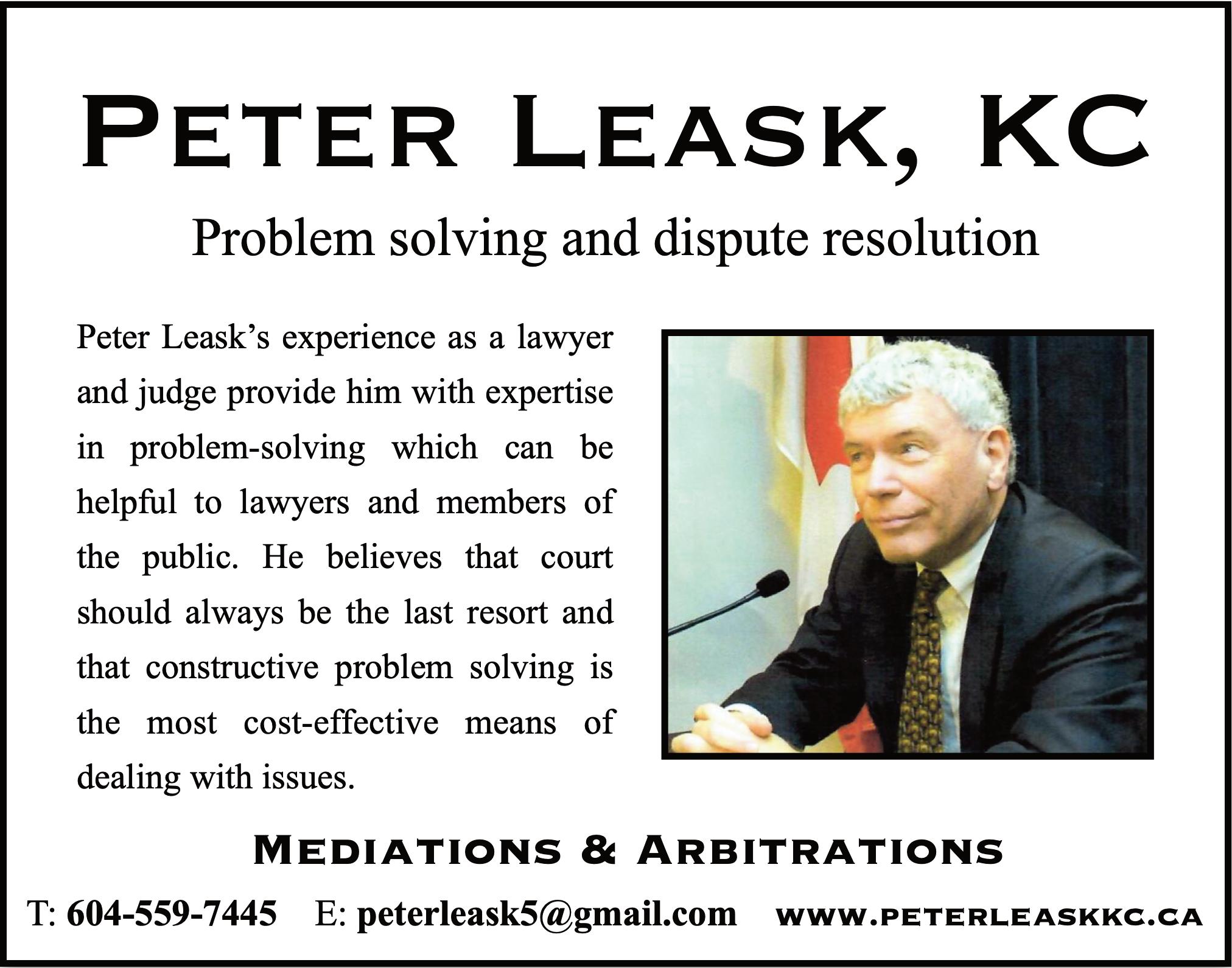





















































222 THE ADVOCATE VOL. 81 PART 2 MARCH 2023 esolving ndcan .or twha n of “ andin entiveness Integr STEVEWWAALLACE Mediator, Lawyer t impar ity, rttiality, experience, attte and intervention are thefoundatio isnecessary to be a good mediat I believe I encapsulate these traitsa bring them to the table to assist in r your dispute.” texper ecognized by L *R OFFERING ME swallace@dolden.com OR tioswallace@wallacemedia cial insu c e sLeading Canada experience ars of e 30+ Y One of ’ the ar a of commer NOW VICES TION m * ons.com tion ance litiga a a Practitione ur rsin N SER DIA tions.cowallacemedia 604 992 2595 saace@dodeco O om
THE WINE COLUMN
By Michael Welsh, K.C.*
“Once ... in the wilds of Afghanistan, I lost my corkscrew, and we were forced to live on nothing but food and water for days.”
WINE, OR WINE NOT?
Doom and gloom for wine drinkers (in fact consumers of any type of alcohol) have been splashed across the news services in the last couple of months, led by a Canadian study that essentially says you should stop drinking booze of any nature; in other words, recommending “wine not”.
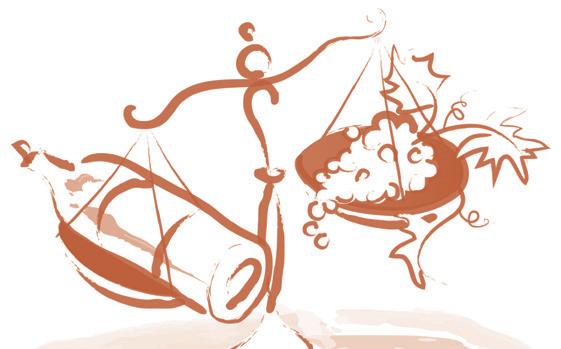
The Low-Risk Alcohol Guidelines, released January 17 by the Canadian Centre on Substance Use and Addiction, state that no amount of alcohol is safe, and recommend no more than two drinks a week for both men and women, drastically down from the previous 2011 guideline amounts of 10 standard drinks per week for women and 15 for men.

In the report on the new guidelines, risk is broken down by the number of drinks per week and specific diseases. It outlines exactly how many years of life—averaged over the lives of 1,000 males and 1,000 females—would be lost, depending on how many drinks they ingested per week and what disease they had.
It is not uncommon for countries—such as Australia, France or the U.K.— to base their alcohol guideline recommendations on a one in 100 mortality risk limit.
VOL. 81 PART 2 MARCH 2023 THE ADVOCATE 223
* Michael Welsh, K.C., carries on a litigation and ADR practice in the South Okanagan and is a bencher. The views expressed here are his own and not those of the Law Society.
—W.C. Fields, My Little Chickadee
The new guidelines determined that in Canada, the limit that aligned with a one in 1,000 chance of premature death related to an alcohol was two standard drinks per week, while the one in 100 risk limit is six standard drinks per week.1
In other words, more than two drinks per week puts your risk factor for premature death or diseases at one in every thousand people, and more than six drinks per week puts that risk factor of one in every hundred people. While the increased risk factor under the new guidelines is low and does not factor in comparative risks, these are just the baselines. Depressing.
None of this, other than the severely restricted alcohol consumption recommendation, is particularly new. It has been reported for years that overconsumption of alcohol can be a cause of cancer. As a Guardian report on a study published in the journal Addiction from 2016 notes:
“There is strong evidence that alcohol causes cancer at seven sites in the body and probably others … the epidemiological evidence can support the judgment that alcohol causes cancer of the oropharynx, larynx, oesophagus, liver, colon, rectum and breast.”
Growing evidence suggested that alcohol was also likely to cause skin, prostate and pancreatic cancer, she added. Emphasising that a drinker’s risk increased in relation to the amount consumed, [Professor Jennie Connor] said: “For all these there is a dose-response relationship.”2
For those of us who greeted the French paradox as an almost divine (as well as dietary) revelation, this is distressing news indeed, especially as new studies say wine consumption is in fact bad for the heart. It increases blood pressure and can increase risks of atrial fibrillation, and the alcohol metabolizing to sugars increases body fat and weight gain.3 (The French paradox is a catchphrase, first used in the late 1980s, summarizing the apparently paradoxical epidemiological observation that French people have a relatively low incidence of coronary heart disease while having a diet relatively rich in saturated fats. French research indicated that a diet based on southwestern Mediterranean cuisine that is high in omega-3 oils, antioxidants and includes “moderate consumption” of red wine increased HDL (good) cholesterol, and created lower rates of myocardial infarction and cardiovascular disease.4) The result was a huge boost in red wine sales and an apparently scientific justification for drinking (red wine, anyway).
But all that old news is now labelled “fake news”—a rightly discredited phrase I timorously use here but promise never to again. Too many bad associations.
It is enough to drive one not to drink. But before, like W.C. Fields, you eschew the corkscrew and reach for water out of a lack of options, you may wish to consider (albeit limited to moderate) consumption of lower alcohol wine.
224 THE ADVOCATE VOL. 81 PART 2 MARCH 2023
Until recent times, low-alcohol wine was difficult to find. In fact, in the past couple of decades, the alcohol levels for most types of wine increased markedly.
When I first stumbled (not literally) onto good wine in my 20s, most reds had an alcohol by volume of about twelve per cent, and whites had anywhere from eight or nine per cent (for Germanic varietals) to perhaps eleven per cent (for French wine). Now, red wine is almost never under thirteen or so per cent, and many reds reach crazy levels: fifteen and upward to seventeen. White wines tend to run thirteen per cent and higher as well. Reds in particular are often huge and blousy with hot finishes, especially with the recent trend to add some sugar to the finished wine, so that they are like poorly made Port (think Apothic, which coincidentally rhymes with “ick”). Subtlety is too often lost, especially for those of us who consume to enjoy and not to just get hammered.
So why this move to “high-test” wine?
The reasons behind the trend were explored a few years back in Scientific American:
It’s not your imagination. Wine really has gotten boozier. In the past two decades the maximum alcohol content of wine has crept up from about 13 percent to, in some cases, northward of 17 percent, a side effect of the growing popularity of wines with richer fruit flavor. The intoxication inflation has gotten so bad that wine scientists have begun to bioprospect for wild yeasts that turn a smaller quantity of the sugar in grape juice into alcohol during fermentation than does the yeast Saccharomyces cerevisiae—humanity’s partner in inebriation for thousands of years—but which can still produce a fine, finished wine. …
The recent surge in wine’s punch is largely a result, scientists say, of a fashion for deeply colored wines with fewer “green” qualities and more bright, ripe, fruity flavors. As New World wines in this style have drawn more fans, even European winemakers accustomed to making loweralcohol wines in less ripe styles are beginning to follow suit. But producing wines with those flavors means letting grapes hang longer on the vine, and with longer hang times comes bigger sugar. The more sugar the wine yeast S. cerevisiae has to work with, the more alcohol it will make.5
The article includes interviews with wine researchers, sommeliers and others who are concerned that this trend creates wines that are not “foodfriendly”, overwhelming what is on the plate and, more worryingly, leading to people being unable to handle their wine, not realizing how potent it really is and thus drinking too much.
As another wine writer puts it:
In the 1970s, actor-turned-Paul-Masson-wine-pitchman Orson Welles admonished, “We shall sell no wine before its time.”
THE ADVOCATE 225 VOL. 81 PART 2 MARCH 2023
These days, Welles might say, “We shall sell no wine before it’s practically a distilled spirit.” …
James T. Lapsley, Ph.D, a Professor of Viticulture at the University of California, Davis—who co-authored a 2011 paper on the subject for the Journal of Wine Economics , tellingly titled “Too Much of a Good Thing?”—claims that the grape sugar levels in wine have increased between 7 and 10 percent over the past few decades.
“A 10% increase in sugar concentration would result in 10 percent more alcohol,” says Lapsley.
The author also notes that metabolizing the ethanol in alcoholic beverages produces acetaldehyde, a toxic chemical thought to be a carcinogen in humans.6
“Don’t blame the grape, though, for the rise in alcohol. Instead, says Seattle-based certified sommelier Yashar Shayan, the rise can at least in part be attributed to the consumer.
“People like it,” he says. “They may claim they don’t, but they do.”
It’s not dissimilar from how people say they want to avoid sweet foods, “but then they consume plenty of cola, ketchup, and other processed foods which are loaded with sugar,” says Shayan. “The consumer likes the sweetness.”
Mark Aselstine, the founder of Berkeley-based Uncorked Ventures, a wine of the month club, points to the dominance of wine reviews published by The Wine Advocate and its founder, lauded critic Robert Parker, for pushing the trend of higher-alcohol wines by often rewarding them with high scores: “Parker, generally speaking, enjoys higher-alcohol content in his wines than the higher acidity and more austere versions of generations past,” says Aselstine. “As his reviews became more and more popular, and as retailers increasingly used scores to do their jobs for them, vintners started trying to hit that style with at least some of their offerings.”7
Many wine professionals also point to climate change as helping heat up the “hotter” wine trend. The warmer the weather, the more sugars develop in the grape that in turn are converted to more alcohol during fermentation. As I have written in earlier articles on how climate change is affecting grape and wine production, it is starting to wreak havoc in some of the world’s oldest and most traditional wine areas, such as Burgundy, where growers for centuries have relied on the terroir of specific sites to create their signature wines. As temperatures climb and weather patterns change, those sites are endangered.
A 2009 Greenpeace report said: “Great French wines derive all their finesse and elegance from their terroir. The idea of terroir alludes to the very specific combination of climate and a well-defined territory, sometimes no bigger than a single plot of land … [Wine] is the product of an
226 THE ADVOCATE VOL. 81 PART 2 MARCH 2023
exquisite alchemy between the age-old know-how of impassioned men and women and the environment, and as such reveals all the subtlety of its original terroir. If climate change persists, this heritage will not survive.”8
In my own experience, the growing conditions in the Okanagan Valley have changed. When I started in the industry well over two decades ago, there was always a worry that winter temperatures would dip to extremes, causing vine damage. Many potential growing sites were not planted as being “frost pockets”. The varieties that were considered optimum were usually Germanic ones that ripened more quickly in cooler climates. Now, the southern parts of the valley and in the Similkameen are renowned for producing “big” reds from varieties such as Syrah, Cabernet Sauvignon, Cabernet Franc and more recently other southern French and Spanish varieties. Those previously passed over “frost pockets” are now often producing vineyards and there is little winter damage anywhere. Temperatures that used to freeze over Okanagan Lake and require icebreakers to get the paddlewheel boats and rail car barges up and down the lake are as much a historical curiosity as is the last paddle-wheeler beached as a museum in Penticton. Now, we have years where there is no ice on the lake at all.
However, that deliberate trend in winemaking to make overdone monster wines seems to be waning, thanks largely to younger consumers, the so-called “Gen Z” and their predecessors, the “Millennials”:
Gen Zers are among the younger people experimenting with a sober, “sober-curious,” [moving away from alcohol consumption] or Cali-sober [eschewing alcohol but not marijuana] lifestyle. They’re concerned about the health impacts of alcohol and want to avoid overdoing it. As the stigma around being a non-drinker continues to fade, bars and breweries are making it easier for non-drinkers to socialize in these settings with menu options such as mocktails and kombucha.9
A report from Berenberg Research shows Gen Z drinks 20 per cent less per capita than Millennials when it comes to alcohol consumption. Not to be outdone, the report also shows Millennials are drinking less than both Gen X and Baby Boomers. A separate report from Australia’s University of New South Wales also backs up the trend worldwide, finding 44 per cent of those ages 18-24 are drinking less than older generations.10
A study done by NielsenIQ in 2022 shows a 23.2 per cent increase in U.S. sales of no-alcohol wines since 2021.11 As low-alcohol wine is perceived by consumers to be superior in taste to no-alcohol versions, they form the area of primary growth worldwide (over twenty per cent projected growth for low-alcohol versions from 2021 to 2025 versus nine per cent projected growth for no-alcohol versions.12 In another study done by Canadian Company Select Wines, sixty per cent of regular wine drinkers are likely to consume low wine with low calories and alcohol and seventy per cent of
THE ADVOCATE 227 VOL. 81 PART 2 MARCH 2023
regular wine drinkers will pick a lighter version of their favourite brand if it offers a similar style and flavour profile.
A visit to the section featuring no-alcohol beer, wine and cooler products at your local supermarket or wine and liquor store, where there has been a boom in new non-alcoholic drinks on the shelves, indicates the change. Restaurant listings of these products are also up, and bars and clubs are promoting “mocktails” and other no-alcohol drinks.
Unfortunately, the same reversal is not occurring with the environmental change that is affecting the wine industry as it affects us all. I just hope that the term “terroir” does not one day become “terror”.
Traditionally, low-alcohol wine (seven to eleven per cent) was restricted to certain German Rieslings and sparkling wines such as Prosecco or Vinho Verde. However, responding to this desire of consumers for a wider range of low-alcohol products, wineries are experimenting with ways to fill that niche. Part of the problem is that the alcohol is generally what gives a wine its “mouthfeel” that is such a crucial piece of wine appreciation, and its removal leaves the wine tasting flat, short and watery. Sweeter and carbonated wines can balance that loss, while a dry wine until recently could not. But, as some examples below illustrate, technology and improved winemaking are stepping in for white and rosé wines. For red wines, work remains to be done, and few if any are less than twelve per cent alcohol. I highlight a couple.
Here are some options, most of which can be found in the BC Liquor Store chain. They are not of much complexity, but all are well made and very sippable.
As an aside, I mention Synchromesh Wines in Okanagan Falls, which specializes in low-alcohol wines, particularly Riesling in the seven to eight per cent range. None make this article, but only as the current vintage is sold out. The 2022 vintage, from vineyards on the Naramata Bench and the Okanagan Falls/Oliver areas, should be on the market soon. So, in addition to the wines below, I recommend going on Synchromesh Wines’s website to order, as its wines sell quickly.
I start with some sparking wines, the safest bet for an enjoyable low-alcohol experience. Many Proseccos and some Cavas are in the eleven to eleven and a half per cent range, but for a change I feature some Lambrusco.
CANTINA DI SOLIERA LAMBRUSCO DI SORBARA N/V
DOC Sorbara, Emilia-Romano, Italy #153177 $19.99
Labelled “Vino Frizzante Rosso Secco”, this wine has eleven per cent alcohol. It is made from Lambrusco di Sorbara grapes from the northern Mod-
228 THE ADVOCATE VOL. 81 PART 2 MARCH 2023
ena region, a preferred variety of Lambrusco known for producing more concentrated, acidic and deeply-coloured drier wines displaying floral aromas and red fruit flavours. It features a nicely light colour, balanced body, pale rosé and very fine froth obtained by natural long fermentation of the best Lambrusco Sorbara grapes, with a fruity bouquet. The winery recommends it with a charcuterie plate or pasta or meat, a wide range of options. Being more focused, I suggest it as an aperitif with a cheese and fruit plate.
And here I take a new turn to my first non-alcoholic recommendation in my two and a half decades writing this column, and on the theme of Lambrusco-style Italian bubblies.
BOTTEGA SPARKLING LIFE ROSÉ
Italy #521928 $9.79
This is an attractively packaged cold-macerated grape must product from the well-known Italian vintner and distiller that produces everything from Prosecco to grappa and gin. It has no alcohol—well, .01 per cent to be exact—a lovely pinkish amber hue and aromas of strawberry jam and red currant. The palate is sweet with those same flavours, and the carbonated bubbles and sugars carry it well. A 100 gm (3.5 oz) serving has only 40 calories, but (warning) 12 gm of sugar. This is a very decent sweeter Lambrusco style that will go well with the same types of food and is also enjoyable as a sipper. It can be found in many BC Liquor Distribution Branch stores in the no-alcohol wine/beer/cooler section.
MARTINI ASTI SPUMANTE N/V
DOCG Asti, Italy #1875 $15.49
Traditionally a very low alcohol and sweet sipper, with its sparkles from a fermentation akin to the Charmat process for prosecco (called the Martinotti process using a closed and sealed vat for a single fermentation vs. double for prosecco) this version is at seven per cent. It is made exclusively from Moscato Bianco grapes grown in the Asti area of Piedmont. Fermentation is arrested part way to obtain that low alcohol and preserve much of the sugars. A light lemon yellow, it has lively aromas of honeysuckle, lemon, peaches and apple, and flavours of sweet apple, lemon curd and some herbal overtones, and finishes well if light. It pairs well with a mixed fruit bowl, or a pastry like a peach tart or apple pie, or even cheesecake.
Now a mix of whites starting with the drier versions.
THE ADVOCATE 229 VOL. 81 PART 2 MARCH 2023
STONELEIGH LIGHTER SAUVIGNON BLANC 2022
Marlborough, NZ #56306 $17.99
New Zealand seems to be leading the way on lighter dry white wines. The bottle label on this wine states that the grapes were picked early in the harvest, allowing them to retain the distinctive style of New Zealand Sauvignon Blanc while providing an alcohol content that is significantly lower (nine per cent and 110 calories per serving). The green profile shows on the nose and palate with sharp aromas of grass, green bell pepper (capsicum), lime and a bit of white grapefruit, and flavours of gooseberry, green peach, grass and citrus. It has a medium-long finish. Not really for sipping, this pairs well with seafood such as prawns, or a white fish, or a pasta with a mushroom cream sauce, or soft cheeses. (As an aside, Stoneleigh is now also making a lighter rosé, again at nine per cent, which I have not tried but will: #56198, $18.99.)
KIM CRAWFORD ILLUMINATE SAUVIGNON BLANC 2022
Marlborough, NZ #61658 $22.99
This version is even lighter at seven per cent alcohol and 70 calories per 5 oz serving. In this case, the winery partially de-alcoholized the wine using a “spinning cone”, a low vacuum distillation process that does not affect the wine’s aromas. The alcohol is reduced to below one per cent on approximately sixty per cent of the final volume, with forty per cent of the base blended back to achieve a final alcohol level of seven per cent. It makes for a richer nose and palate than the greener Stoneleigh. That nose displays lemon-lime, white peach and a bit of passionfruit, and the palate has lime and green apple with some grassy notes and a good, lifted finish. It gets high ratings from me at least. This is a warm-weather sipper, but again will go with all the things Sauvignon Blanc is made for. Think oysters and other seafood, salmon (fresh or smoked), baked white fish, soft cheeses or lighter cream-based pasta dishes. (Again, this wine producer has also produced a lighter rosé I have yet to try, called “Illuminate”, using the same process and again at seven per cent alcohol and 80 calories per serving: #487160, $22.99.)
GAZELA VINHO VERDE N/V
DOC Verdejo, Portugal #141432 $12.99
Vinho Verde is a Portuguese white wine staple. It is a straightforward, refreshing light aperitif-style, usually white, but sometimes rosé. The name literally means “green wine” but translates as “young wine” and it is made lower in alcohol so that it can be sipped. Traditionally, it was allowed a sec-
230 THE ADVOCATE VOL. 81 PART 2 MARCH 2023
ond fermentation like Champagne that gave it some fizz. Now, it is often carbonated just before bottling to keep it fresher tasting. This is one of the lighter ones with only nine per cent A/V, and unlike some is non-vintage. It is bright and light, slightly effervescent and has a pale greenish tinge. On the nose are green apple, lemongrass and bit of lanolin with very light floral notes. On the palate it displays green apple and lemon-lime with a crisp fizzy finish. Try it on its own or with lighter hard cheeses, or white fish. It would even do well with lighter Indian fare like a Tandoori chicken.
FRESCO DE MASI BIANCO ORGANIC 2020
IGT Vino Biologico, Verona, Italy #61750 $21.99
Made from Garganega grapes, best known for Soave wines, this one is organic and vegan, fermented on its own yeasts and bottled unfiltered, then packed in lightweight glass and with recycled paper labels. The alcohol is eleven and a half per cent, typical for this grape. This is an uncomplicated and fruit-forward wine with aromas of white flowers, lemon-lime, green apple and a bit of wet stone and lanolin. The flavours on the slightly off-dry palate are peach, pear, more lemon-lime and some greener pineapple leading to a soft but longer finish. It works well as an aperitif or with poached white fish or steamed clams or mussels (moules et frites) or richer salads like an egg salad or Caesar salad.
LOOSEN BROS “DR L” RIESLING 2021
QmP, Mosel, Germany #599274 $17.99
German Riesling is often the epitome of full-flavoured and racy wine with minimum alcohol. This entry-level Riesling typifies that type. At only eight and a half per cent A/V, it is a golden yellow with aromas of white peach and red apple with a bit of wet stone minerality. The off-dry palate brings out ripe yellow peach, pear, a bit of tropical fruit, lemon and some more wet stone (slate) that is characteristic of wines from steep Mosel vineyards. Chill and sip, or pair with spicy Thai, Vietnamese or Indian (which is what we did), or perhaps go Greek with breaded calamari and jalapeños, or a green salad featuring fresh fruit, or sushi, sashimi or ceviche.
Next, while I have yet to try the two New Zealand rosés mentioned earlier, here is an innovative B.C. one.
POPLAR GROVE ROSÉ NOUVEAU LOW ALC 2021
BC VQA Okanagan Valley #873313 $25.13
This B.C. dry rosé with only eight per cent alcohol and 85 calories (per 5 oz
THE ADVOCATE 231 VOL. 81 PART 2 MARCH 2023
glass) comes from one of the Okanagan’s best-known wineries, located in Penticton. The aroma and flavour profiles clearly indicate that again, the grapes were picked earlier in the harvest to reduce sugars, but the finished wine also underwent a membrane technology to remove ethanol. The varieties used are Malbec, Merlot, Cabernet Franc, Pinot Noir, Syrah and Cabernet Sauvignon, fermented separately and then blended. It has a lovely amber hue and lots of red currant with some cranberry and raspberry on the nose and more berry fruit, especially unripe strawberry, and a bit of white peach and rhubarb on the palate. It has a medium-long dry finish. Again, it is not really a sipper on its own but pairs very well with a seafood or bean or asparagus salad (Niçoise is a good choice), an antipasti plate with some roasted vegetables and olives, and lighter chicken or salmon dishes. It is available from the winery in person or online or at select private wine stores, including some Save-On-Foods locations.
Finally, a couple of reds, as mentioned a category with very few low-alcohol options.
TSANTALI ROUGE D’ESTELLE N/V
Halkidiki, Greece #347581 $13.99
Trying to find a low-alcohol dry red is a hunt that may take you on less-travelled paths—in this case, to northern Greece. This is a lighter-profile red from Moschomavro and Xinomavro grapes, at eleven and a half per cent alcohol. It has bright berry fruit aromas including red currant, cranberry and goldenberry and flavours of red berry fruit and red cherry and a bit of pomegranate and some black pepper spice, leading to a soft finish. It is definitely a wine to pair with food. The winery recommends red pasta sauces, mixed grill and a selection of cheeses. Other good choices are a baked ham or pork chop, grilled tuna or richer salmon, or roast chicken, or burgers on the grill.
HILLSIDE CABERNET SAUVIGNON HOWE VINEYARD 2019
BC VQA Naramata Bench, Okanagan Valley #528935 $48.00
For Cabernet, this is very low alcohol (just below twelve per cent), but for a lighter style it holds its own well and is part of the winery’s single vineyard series. The Howe vineyard is located on the Naramata Bench. The wine is aged in a mix of new and old French oak for two years. While of a lighter weight, it is an elegant, Bordeaux style, with dark berry, black cherry, vanilla and cigar box notes on the nose, and on the tart palate flavours of chokecherry, black currant and cocoa powder, with some leather and black tea and a lifted, tart finish. Like many lighter-style reds, it needs
232 THE ADVOCATE VOL. 81 PART 2 MARCH 2023
food to bring it alive. Italian dishes such as pasta puttanesca or spaghetti with Arrabbiata sauce, other tomato-based pastas, or pizza, chicken, eggplant parmigiana or chicken cacciatore come to mind. It is available from the winery in person or online.
ENDNOTES
1. Yvette Brend, “Just How Risky Is It to Drink More Alcohol Than Canada’s New Guide Advises?”, CBC News (25 January 2023), online: <www.cbc.ca/ news/canada/alcohol-risks-cancer-questions1.6723092>.
2. Denis Campbell, “Alcohol Is a Direct Cause of Seven Forms of Cancer, Study Finds”, The Guardian (22 July 2016), online: <www.theguardian.com/society /2016/jul/22/alcohol-direct-cause-seven-formsof-cancer-study>.
3. “Alcohol Is Not Good for Your Heart, Says Cardiologist”, CBC News (23 December 2022), online: <www.cbc.ca/player/play/2164464707606>.
4. “French Paradox”, Wikipedia, online: <en.wiki pedia.org/wiki/French_paradox>.
5. Jennifer Frazer, “Wine Becomes More Like Whisky as Alcohol Content Gets High”, Scientific American (27 February 2014), online: <www.scientificamerican. com/article/wine-becomes-more-like-whisky-asalcohol-content-gets-high/>.
6. Daedalus Howell, “Why Wine Has More Alcohol Than Ever, Men’s Health (10 February 2016), online: <www.menshealth.com/nutrition/why-alcohol-inwine-increased>.
7. Supra note 5.
8. The report, Changements climatiques et impacts sur la viticulture en France/Impacts of climate change on wine in France, can be found on the Greenpeace website: <www.greenpeace.org>.
9. “Gen Z Beverage Trends & How They Impact Alcohol Producers”, craftlab, online: <www.goekos.com/ blog/craftlab/gen-z-beverage-trends/>.
10. Andrew Benson, “Alcohol Consumption on the Decline for Gen Z, Studies Suggest”, Global News (14 January 2023, updated 21 January 2023), online: <globalnews.ca/news/9411516/alcoholconsumption-decline-gen-z/>.
11. “Non-Alcoholic Beverage Trends in the US”, NielsenIQ (28 October 2022), online: <www. nielseniq.com/global/en/insights/education/2022 /non-alcoholic-beverage-trends-in-the-us/>.
12. The IWSR, “No- and Low-Alcohol in Key Global Markets Reaches Almost US $10 Billion in Value”. online: <www.theiwsr.com/no-and-low-alcohol-inkey-global-markets-reaches-almost-us10-billion-invalue/>.
13. Laurie Barnes, “Poplar Grove’s Rosé Nouveau Released: 8% Alc | 85 Calories Per Glass”, Poplar Grove (19 May 2022), online: <www.poplar grove. ca/blog/Rose-Nouveau-Released>.
THE ADVOCATE 233 VOL. 81 PART 2 MARCH 2023

234 THE ADVOCATE VOL. 81 PART 2 MARCH 2023
BC LAW INSTITUTE
By Tejas Madhur and Greg Blue, K.C.*
Technological advance usually impels change and adaptation in other fields. Just as railways and automobiles influenced the evolution of tort law in the 19th and 20th centuries, digital technology is providing new challenges to the application of existing legal principles in the 21st century. In the Artificial Intelligence and Civil Liability Project, the BC Law Institute (“BCLI”) is examining how the common law of tort needs to adapt to the reality of artificial intelligence. The first publication from this project, a consultation paper, will appear in the spring of 2023.
Artificial intelligence is the generic term applied to software that allows automated systems to simulate abilities we commonly associate with human intelligence and perception. Examples of these simulated abilities are natural language processing, speech recognition, machine vision, machine learning and knowledge representation (representing and storing information about the real world in a form that allows it to be used to solve new problems).
Artificial intelligence makes it possible for self-driving vehicles to navigate traffic, digital voice assistants and chatbots to communicate with human users, and computers to translate from one language to another. It is used to diagnose disease, design new drugs, and predict extreme weather events by uncovering patterns concealed in vast amounts of climate data. Some of the more controversial applications of artificial intelligence are used in vetting applicants for jobs, profiling and targeting consumers for advertising on the basis of their viewing and browsing habits, and assessing the risk of bail applicants failing to appear for trial.
To an ever-increasing extent, artificial intelligence is serving as a substitute for human decision making or playing a role in decision-making
VOL. 81 PART 2 MARCH 2023 THE ADVOCATE 235
Tejas Madhur is the chair of the board of BCLI. Greg Blue, K.C., is a senior staff lawyer at BCLI.
NEWS FROM
processes, and thus it affects our lives in a myriad of ways. It also controls the behaviour of robotic devices, which are increasingly common and will proliferate greatly in the future. Artificial intelligence far surpasses human capabilities for some tasks. Its benefits are huge, but so are the risks it can bring.
Basic questions we are seeking to answer in the Artificial Intelligence and Civil Liability Project are: “Who is, or should be, legally responsible for decisions made by autonomous intelligent machines that lead to harm? On what basis? And under what circumstances?” The need for answers to these questions arises because existing rules of tort law evolved in light of human standards of conduct and human cognition. New thinking is required to adapt them to situations in which the operation of a non-human “mind” results in harm to persons and property.
A law reform project of this kind requires a blend of legal and scientific expertise. Our Artificial Intelligence and Civil Liability Project Committee eminently reflects that combination. The Project Committee is chaired by Professor R.G. Howell of the UVic Faculty of Law, a former director of BCLI whose teaching and research specialties include intellectual property, telecommunications and the law of the internet. Dr. Cindy Grimm is a computer scientist and robotics researcher at the University of Oregon. Dylan Merrick is a software developer and a former BCLI director. Maya Medeiros, a lawyer and patent agent, is a director of the Artificial Intelligence Network of BC and likewise has a background in computer science. Professor Kristen Thomasen teaches torts and an upper-year course in law and robotics at UBC’s Allard School of Law. Dr. Teresa Tsang of the UBC Faculty of Medicine conducts research on medical applications of artificial intelligence. Cynthia Khoo is a lawyer specializing in technology issues and is an associate of the Georgetown Center on Law and Privacy. Darin Thompson, the observer and liaison designated by the Ministry of Attorney General for this project, is a lawyer in the Policy and Legislation Division of the Ministry of Attorney General with experience in automating court systems and developing the Civil Resolution Tribunal’s Solution Explorer platform.
The Project Committee, supported by BCLI staff assigned to the project, is examining the challenges of applying common law concepts of fault, causation, proximity, foreseeability and standards of care to the context of harm produced by the operation of artificial intelligence. Comparative research into solutions being proposed in other legal systems, including the U.S., the U.K. and the European Union, plays a significant role in the project.
Risk of harm to persons and property arises from the same attributes that make artificial intelligence highly useful. Artificial intelligence systems
236 THE ADVOCATE VOL. 81 PART 2 MARCH 2023
operate with varying degrees of autonomy from human control and oversight. While their basic logic and objectives are supplied by programmers, they are not exclusively dependent on programming in which every step to the output is pre-encoded. Through machine learning, latter-day artificial intelligence systems are able to improve their own performance. They can develop solutions independently to achieve objectives the programmers have set, and apply solutions that will increase the likelihood of achieving those objectives. This increases their autonomy and success in the tasks they are created to perform, but also results in unpredictability. They have been described as “unpredictable by design”.1
In pursuing the means that have the greatest probability of achieving its design objectives, artificial intelligence may act in ways that are potentially harmful. As two leading experts on artificial intelligence have stated, “It is impossible to anticipate all the ways in which a machine pursuing a fixed objective might misbehave”.2 An incident in Denmark in 2021 shows how the unpredictability of artificial intelligence in common applications can present dangers to the public. A bored child asked a domestic digital voice assistant to “find a challenge to do” and the device responded by telling the child to plug a phone charger halfway into a wall outlet and then touch a penny to the exposed prongs.3
The ability to develop solutions independent of human programmers also limits the extent to which the outputs of artificial intelligence systems are explainable. The expression “black box” is frequently heard in connection with artificial intelligence. Although it is inaccurate and misleading, the expression “black box” points to the reality that even designers of an artificial intelligence system may be unable to explain or reconstruct how it reached a specific output such as a decision, prediction, recommendation or a physical action in the case of a robotic system.
Deep Patient, a medical diagnostic system developed to analyze digitalized health information, provides an example of limited explainability. This system was trained by having it analyze data from 700,000 anonymized electronic patient records. It proved to be extremely accurate in predicting certain diseases when tested on new patient data. Deep Patient obviously found previously undetected patterns in the high volume of patient data, but the reasons for its accuracy remain obscure.4
The autonomy and limited explainability of sophisticated artificial intelligence systems present major challenges to a plaintiff in establishing fault on the part of any particular defendant connected with the design, production or use of such a system. Their unpredictability stands in the way of demonstrating foreseeability of harm. In addition, complex systems are
THE ADVOCATE 237 VOL. 81 PART 2 MARCH 2023
usually created using software components from multiple sources. Multiplicity of actors involved in designing, developing, training and testing an artificial intelligence system would tend to compound the difficulty of identifying potentially liable defendants. These factors present more barriers to justice in the way of a plaintiff seeking compensation for harm generated by artificial intelligence than plaintiffs similarly injured by the fault of human tortfeasors would typically face.
The Project Committee has been engaged in developing recommendations for reform to address these and other issues concerning civil liability for artificial intelligence over the past year. Look forward to a consultation paper appearing soon that will set out tentative recommendations for comment. BCLI and our Project Committee want to hear the views of lawyers, technical experts and the general community.
For more information about the Artificial Intelligence and Civil Liability Project, and to download the consultation paper once it is published, visit: <www.bcli.org/project/artificial-intelligence-and-civil-liability-project/>.
ENDNOTES
1. Ryan Calo, "Robotics and the Lessons of Cyberlaw" (2015) 103:3 Cal L Rev 513 at 542.
2. Stuart J Russell & Peter Norvig, Artificial Intelligence: A Modern Approach, 4th ed (Hoboken, NJ: Pearson, 2021) at 5.
3. “Alexa Tells 10-Year-Old Girl to Touch Live Plug with Penny”, BBC News (28 December 2021), online: <www.bbc.com/news/technology-59810383>.
Fortunately, the child in question was old enough to know this would be dangerous, but the potential for harm to a younger child or unsophisticated person is obvious.
4. Will Knight, “The Dark Secret at the Heart of AI” (2017) 120:3 MIT Technology Review, online: <www.technologyreview.com/2017/04/11/5113 /the-dark-secret-at-the-heart-of-ai/>.
238 THE ADVOCATE VOL. 81 PART 2 MARCH 2023
LAP NOTES
By Michael Lederman*
CHANGE YOUR LIFE WITH MINDFULNESS-BASED STRESS REDUCTION
Stress is part of life, and it is prolific within the legal profession. We all are faced with uncertainties, dilemmas, conflicts, changes and the inability to control many life events. With the accelerated pace of living, the ever-growing demands of work and the diminished connection with family and friends, we often become overwhelmed.
Left unchecked over time, chronic stress impairs our functioning, productivity, health and quality of life. Often people suffer in silence with feelings of worry, anxiety and depression.
Fortunately, there is a remarkable scientifically researched way to change your relationship with stress, to participate in your own self-care and to contribute to your own growth and development as a human being using mind and body awareness. This program has existed for over 40 years and is now the clinical and scientific standard adopted in stress-reduction programs in major medical centres worldwide. It is called “mindfulnessbased stress reduction”.
Mindfulness-based stress reduction was founded in 1979 by Jon KabatZinn, Ph.D., now professor of medicine emeritus at the University of Massachusetts Medical School. Since the launch of this program, a new field within medicine has emerged and proliferated: the science of mindfulness and its effects on health and well-being.
The 2018 Harvard Gazette article “When Science Meets Mindfulness” describes the soaring public interest in mindfulness, as well as the rising scientific attention with randomized controlled trials, the gold standard for clinical study. The article states that mindfulness studies show health ben-
VOL. 81 PART 2 MARCH 2023 THE ADVOCATE 239
* Michael Lederman, N.D., LL.B., is a lawyer counsellor with the Lawyers Assistance Program of BC.
efits for multiple physical and mental health conditions, including anxiety, depression and chronic pain.1
In a recently published study in the Journal of the American Medical Association, mindfulness-based stress reduction was found to be a well-tolerated treatment option with comparable effectiveness to a first-line medication for patients with anxiety disorders.2
Not only have physicians and psychologists been training in mindfulnessbased stress reduction for decades, but mindfulness has also made the leap into mainstream corporate culture. Currently, over twenty per cent of Fortune 500 companies, including Apple and Nike, offer mindfulness training.
What is mindfulness? Mindfulness is about being fully aware of what is happening in the present moment, without judgment. It is about being aware—of your thoughts, your emotions and your bodily sensations. It is about self-observation with openness, curiosity and acceptance, while letting go of self-criticism.
Mindfulness is not about ruminating about the past or worrying about the future. It is about showing up in your life, moment by moment, with awareness, and recognizing how you are in relationship with everything in your life.
In his foundational book on mindfulness, Full Catastrophe Living, KabatZinn provides a practical guide for harnessing the transformative power of mindfulness to enhance your awareness of what is imbalanced in your life, including maladaptive coping behaviours such as substance abuse and workaholism.3 Much like shining a light in darkness, better awareness allows you to see your habitual patterns and reactions and choose to respond differently.
The mindfulness-based stress reduction program provides an evidencebased, structured eight-week training opportunity for participants to practise mindfulness and apply this skill to the specific challenges and stressors in their lives. The program is empowering. It helps you reconnect with yourself and take charge of your life direction, your level of health and your level of well-being.
Through the eight weeks of the mindfulness-based stress reduction program, participants meet weekly for 2.5 hours and learn foundational techniques to respond more effectively to stress, pain, intense emotion and illness. These techniques include exploring present-moment field of awareness, gentle movement, meditation, breathing and deep relaxation. As well, participants learn how to develop better resilience to life stressors and effective coping strategies.
Incorporated within the mindfulness-based stress reduction program are essential attitudes to mindfulness practice, which are qualities of awareness:
240 THE ADVOCATE VOL. 81 PART 2 MARCH 2023
1.Non-judging: cultivating impartial observation toward any experience without labelling something as good/bad or right/wrong
2.Non-striving: being in the moment, where you are, without movement away from whatever arises
3.Beginner’s mind: seeing things as new and fresh, as if for the first time
4.Trust: trusting yourself—your observations, feelings and intuition
5.Acceptance: acknowledging thoughts and feelings as they are in a moment without trying to impose what you believe you should think or feel
6.Letting be: letting things be as they are presenting in a moment
7.Self-compassion: cultivating love for yourself as you are
8.Gratitude: allowing yourself to enjoy the moment with a sense of appreciation
Eight weeks of mindfulness-based stress reduction has been shown by researchers using brain scanning technology at Harvard University and Massachusetts General Hospital to induce changes in brain structure. The power to change our brain’s neural connections in response to repeated experiences is known as neuroplasticity.4
Being mindful does not change the existence of future sources of stress. Rather, with mindfulness, you learn to shift your self-awareness, perspective, emotional balance, relationship with circumstances and how you choose to respond.
Being mindful does not erase the trauma of the past. However, mindfulness can help you explore your feelings and understanding of the meaning you have attached to an event. Mindfulness can help to leave victimhood and feelings of shame behind because mindfulness is an essential component of self-compassion. Better awareness of negative core beliefs allows for more self-kindness and self-compassion in the processing of beliefs and associated emotions. This can prevent thoughts about failing at one task from being generalized to beliefs of “I am a failure in life” or “I am not enough”.
Learning to cultivate mindfulness liberates us to live authentically. It allows us to acknowledge our difficult feelings and thoughts, to see their origins more clearly and to experience deeper states of acceptance and peace. It takes courage to step up and do the work. This is the path of personal growth. It is not easy. But what is the cost to each of us of not doing this work—how much loss, grief and suffering?
THE ADVOCATE 241 VOL. 81 PART 2 MARCH 2023
Between stimulus and response there is a space. In that space is our power to choose our response. In our response lies our growth and our freedom.
Join us in March for our workshop “Mindfulness and Lawyer Well-Being”
(<info.lapbc.com/mindfulness-and-lawyer-well-being-2023>).
Individual mindfulness-based stress reduction support is also available.
ENDNOTES
1. Alvin Powell, “When Science Meets Mindfulness”, The Harvard Gazette (9 April 2018), online: <news. harvard.edu/gazette/story/2018/04/harvardresearchers-study-how-mindfulness-may-changethe-brain-in-depressed-patients/>.
2. Elizabeth A Hoge et al, “Mindfulness-Based Stress Reduction vs Escitalopram for the Treatment of Adults
With Anxiety Disorders: A Randomized Clinical Trial” (2023) 80:1 JAMA Psychiatry 13.
3. Jon Kabat-Zinn, Full Catastrophe Living: Using the Wisdom of Your Body and Mind to Face Stress, Pain and Illness, 2nd ed (New York: Delacourt, 2013).
4. Ibid, “Introduction” at xli–xlii.
The Lawyers Assistance Program of British Columbia is an independent organization of members of the legal community (lawyers, judges families and support staff). We provide peer support and referral services to help people deal with personal problems, including alcohol and drug dependence, stress, anxiety and depression. We are volunteers and staff committed to providing confidential, compassionate and knowledgeable outreach, support and education. We seek to foster collegiality among our peers and to promote health and well-being in our community. You can reach LAPBC by telephone at 604-6852171, toll-free at 1-888-685-2171 or via the LAPBC website: <www.lapbc.com>.
242 THE ADVOCATE VOL. 81 PART 2 MARCH 2023
—Viktor Frankl
A VIEW FROM THE CENTRE
By Yarden Gershony*
FINAL OFFER MED-ARB IN SHAREHOLDER DISPUTES
In this article, I make a pitch for counsel to consider a type of arbitrationbased procedure for resolving shareholder disputes within closely held companies.
I refer to this procedure as “Final Offer Med-Arb”, but it could go by other names (including “FOMA”, if a spin on a trendy acronym works for you).
At a high level, FOMA is an alternative dispute resolution (“ADR”) mechanism in which warring shareholders appoint one neutral to serve as both mediator and arbitrator, with the sole mandate of separating the shareholders’ corporate interests as efficiently and fairly as possible. If the mediation is unsuccessful, then the mediator will transform into an arbitrator and run a short-fuse “final offer” arbitration, as discussed below.

As many readers will know, these concepts are not novel in the ADR universe. In particular, family lawyers have long employed various forms of “Med-Arb” procedures and “Final Offer” arbitrations to determine outcomes in divorce proceedings. But these procedures have not gained much popularity in commercial disputes.
My view is that a FOMA mechanism—tweaked to suit the circumstances of a particular case—has merit in the context of corporate “divorces” as well.
In the sections below, I first sketch out an example of a typical (and somewhat comical) scenario involving a breakdown of trust and confidence among shareholders in a closely held company. I then explain why a court proceeding is probably an unsuitable forum for these shareholders to resolve their dispute. Finally, I set out a framework for a FOMA process,
VOL. 81 PART 2 MARCH 2023 THE ADVOCATE 243
* Yarden Gershony is a panelist (arbitrator) with the Vancouver International Arbitration Centre. He is a partner at Rush Ihas Hardwick LLP and maintains a practice focusing on complex commercial litigation and arbitration matters. He is a member of the bars of British Columbia and New York.
and I explain how this process can help parties and counsel resolve shareholder disputes in a way that is cost-effective and that may actually preserve the parties’ sanity.
Factual Example: Warring Shareholders in a Closely Held Company
If you practise corporate/commercial litigation, you may have encountered something like the following scenario.
The hypothetical facts involve a closely held company incorporated in British Columbia under the Business Corporations Act1 (the “BCA”). There are three shareholders, all individuals who are related. Let us assume that two of the shareholders are adult sisters, and the third shareholder is their brotherin-law. The three own equal, or roughly equal, shares in the company.
In the early days of their business, these shareholders enjoyed a positive working relationship. But as time went on, childhood dynamics caused friction to creep into their dealings. Their personal interactions became increasingly difficult with the brother-in-law’s marriage falling apart. He has mostly abandoned the business, even though he still owns a third of the company. This has bred resentment and defensiveness around the proverbial board table. The two sisters have lately suffered a significant falling-out with each other, with one sister accusing the other of using the company “as a personal bank account” (which she insists on characterizing as “a fraud”).
Anything sound familiar yet?
Unfortunately, these shareholders did not have a shareholders’ agreement, at least not in writing. If they did, they could have agreed ahead of time on mechanisms to separate their business interests if relationships soured down the road. Presumably, the wisdom that prevailed when the three shareholders started their business was that a shareholders’ agreement was unnecessary, and that their familial bonds would ensure harmony no matter what might transpire between them.
But alas, in the past few months, these shareholders’ interactions have grown ever more vitriolic. In one instance, the brother-in-law delivered a letter to the two sisters, demanding that they buy him out for an exorbitant sum—which one of the sisters met with a retort that the brother-in-law’s shares are “worth nothing”. The other sister interposed with a demand on the others for an unaffordable cash call, coupled with a threat to seize the others’ shares if they fail to pay. Now, the brother-in-law has started delivering threats to the two sisters about reporting the company to the Canada Revenue Agency and “bringing a criminal case”.
Practically speaking, there is no real external market for this company’s shares (as is typical when dealing with closely held family companies). Thus, the shareholders are unlikely to be able to exit the company by sim-
244 THE ADVOCATE VOL. 81 PART 2 MARCH 2023
ply selling their shares to a third party, except perhaps at a steep discount on account of the minority position and perceived risk of litigation.
The shareholders have now all “lawyered up”. While the lawyers explored potential resolutions, such as a division of the company’s assets, these exploratory efforts were unsuccessful.
What are the options at this point to separate the parties’ interests in this company?
The Fallback Option: “Oppression”/“Winding-Up” Petition under the BCA
Typically, these shareholders would have only one option: one of the shareholders commences a petition in B.C. Supreme Court seeking relief under the BCA. Presumably, the petitioner’s goal is to obtain a court order separating the parties’ corporate interests in a way that benefits the petitioner most. The court has broad discretion in such a proceeding, both in terms of whether to provide any relief at all, and if so, in what form such relief should take. Such relief can range, in the court’s discretion, from a liquidation of the company, to a forced buyout of one or more of the shareholders’ interests, to a mandatory shotgun mechanism, to an order to “spin-out” the company’s assets to the shareholders, among other options.
The legal basis for all such relief will be either or both of section 227 of the BCA (the “oppression” provision) or section 324 of the BCA (the “just and equitable winding up” provision). There are a number of problems with proceeding to court in an oppression/winding-up petition, however.
As mentioned, the court is not obligated to grant any relief at all. This is true even when the shareholders’ relationships have become outright adversarial. For example, in Vivian v. Firth, 2 Fitch J. (as he then was) refused to intervene in a business owned by two estranged shareholders. Justice Fitch reiterated that the shareholder dispute provisions in the BCA are not intended to provide a disgruntled shareholder with a means of simply “monetizing” his or her investment in the company.3
Accordingly, if our three hypothetical shareholders were to proceed to court to resolve their dispute, there is a chance the court will decline to intervene, even as the parties’ personal relationships continue to circle the drain.
Moreover, in my view there is a perverse incentive that has developed within the law and practice surrounding shareholder dispute proceedings under the BCA. By “perverse incentive”, I am referring to the following phenomenon, which I would bet many readers will recognize if they practise in this area.
A court will intervene to separate the shareholders’ interests only if the petitioner can convince the court that the shareholders’ relationships are
THE ADVOCATE 245 VOL. 81 PART 2 MARCH 2023
utterly broken, or if the company’s business operations are deadlocked (paraphrasing very broadly here). Because of this, in the period before filing a petition under the BCA, a disgruntled shareholder is incentivized to “manufacture discontent” within the company—for example, by aggravating existing points of friction, creating new disagreements or imposing a management deadlock—all in an effort to engineer the toxic conditions that are necessary to justify the court’s intervention. Moreover, within the parties’ affidavits, each shareholder will typically emphasize the other side’s worst qualities and conduct, with the goal of convincing the court that the equities favour one side’s preferred outcome over another’s (I acknowledge that not every case commands such a cynical view of the law and practice surrounding shareholders’ remedies, but I have seen this type of gamesmanship enough times that I cannot ignore it for the purpose of this article).
It gets worse, too: the judge assigned to the case may be unfamiliar with the concepts governing shareholder disputes, which will increase uncertainty for all parties; the court may convert the petition proceeding to a trial, thereby significantly increasing cost and delaying the outcome, often by years; and, of course, after the battle is finally over, there is always the possibility of an appeal.
Because of these factors, shareholder disputes can grow excessively antagonistic and expensive—which exacerbates tension between the shareholders, which feeds into further antagonism and brinksmanship, and so on. This cycle can drive the business into the ground, destroy personal relationships, ruin the shareholders financially and degrade the parties’ mental health along the way.
Another Option: Final Offer Med-Arb Court is not the only option. There is another one—a better one, in my view—grounded in arbitration.
Specifically, I consider that one bespoke arbitration procedure is particularly well suited to many shareholder disputes that correlate roughly with the factual background I have sketched above. As noted above, I have called it Final Offer Med-Arb (or FOMA for the purpose of this article).
The intent of FOMA is to facilitate the fair and efficient breakup of shareholders in a closely held company, in circumstances where it is evident to counsel that the shareholders must be separated from one another. Note my choice of words, “in circumstances where it is evident to counsel” that the shareholders must be separated. In my view, it will usually be a job for the lawyers involved in this type of dispute, acting reasonably, to convince their respective clients that an ADR procedure such as FOMA is a better option for everyone involved, compared to court. Indeed, as is always the
VOL. 81 PART 2 MARCH 2023 246 THE ADVOCATE
case in arbitration, this ADR process can work only if all parties agree to engage in it.
So, what exactly is “Final Offer Med-Arb”? And why do I consider it to be particularly suitable for disentangling shareholders locked in disputes within closely held companies?
To answer these questions, I sketch out below a framework for a FOMA process, for readers’ consideration. Where appropriate, I include comments about the purpose and benefits of each step in the framework:
1.The shareholders agree in writing to submit their dispute to arbitration pursuant to the Arbitration Act. 4
2.The shareholders agree that the objective of the arbitration is that their interests in the company be separated, one way or another. It will not be within the arbitrator’s jurisdiction to simply “do nothing” and leave the status quo in place.
3.The parties appoint a single arbitrator. The parties may use the Vancouver International Arbitration Centre (“VanIAC”) as an administering institution for the arbitration. Among many other benefits, VanIAC provides services and clear procedures for appointing an arbitrator, if the parties themselves cannot agree on the appointment. It is important that an arbitrator with experience in shareholder disputes be appointed (VanIAC has a number of arbitrators on its roster with just this profile). The arbitrator should also possess a basic knowledge of corporate valuations and taxation, or at least an ability to “issue-spot” these topics.
4.The arbitrator will first serve as mediator.
5.In advance of the mediation, the parties will submit detailed proposals for separation of the shareholders’ interests. If any shareholder alleges that, as part of the separation, another shareholder must notionally pay funds back to the company—for example because such other shareholder has historically drawn excessive management fees—then that issue must be dealt with in detail in the materials. Each party’s proposal will be supported by fact and law in the form of mediation briefs, accompanied by historical/factual documents and (if necessary) any expert materials such as real estate appraisals, share valuations or tax opinions. In my view, it will probably not be necessary for the mediator-arbitrator to require “evidence” in the traditional sense as part of this procedure, such as detailed affidavits or witness statements replete with exhibits. Rather, each party’s materials should be laser-focused on
VOL. 81 PART 2 MARCH 2023 THE ADVOCATE 247
(1) how that party proposes to sever the shareholders’ business ties, and (2) why that party’s proposal is the fairest and most efficient way of making that happen, having regard to the circumstances facing the company and its shareholders.
6.At the mediation, the mediator will generate forthright discussions about the parties’ goals and concerns. Throughout this process, the parties will likely exchange settlement proposals, which will begin to “close the gap” between their positions. The mediator will formulate a sense of what the fairest and most efficient outcome will be for these shareholders. Perhaps most importantly, all parties will be incentivized to act reasonably and in good faith at the mediation, for the simple reason that each participant will know that this same mediator will become their final arbiter if the mediation fails.
7.If the mediation is successful and the parties agree on a mechanism to separate their interests, then the dispute ends and the parties will prepare minutes of settlement reflecting the agreed-upon mechanism. The arbitrator may then integrate the settlement terms into a final arbitration award, which will become enforceable through the court process if necessary.
8.If the mediation is unsuccessful, the mediator immediately becomes the arbitrator. The arbitrator will require all parties to submit their “final offers” for the arbitrator’s consideration, setting out in detail each party’s best proposal for disentangling the shareholders’ interests in the company. Note: arbitration practitioners tend to disagree about whether it is appropriate for the same person to serve as both mediator and arbitrator, the concern being that the arbitrator will have absorbed “without prejudice” information and “inadmissible” facts during the mediation. In my view, these concerns are muted within this FOMA procedure, for two reasons. First, the parties will have freely agreed to this process, knowing that there may be an element of blending between the parties’ settlement positions at mediation and the arbitrator’s final award. Second, given the relatively narrow scope of the arbitrator’s task within this procedure—that is, to disentangle the shareholders’ business relationships in the fairest and most efficient way possible—the arbitrator need not be focused on traditionally admissible “evidence” when determining the best remedy for the shareholders. Accordingly, there is little risk of prejudice if the arbitrator
248 THE ADVOCATE VOL. 81 PART 2 MARCH 2023
considers information that would usually be excluded from the record when deliberating on the best remedy. Indeed, within this peculiar form of ADR, an arbitrator may be encouraged to keep the parties’ compromises in mind when issuing a final award.
9.Based on the final proposals, the arbitrator will render an award in writing, spelling out how the parties’ corporate interests are to be separated. In the “purest” form of final offer arbitration, the arbitrator’s jurisdiction would be restricted to simply choosing one party’s final proposal wholesale, and rejecting all others (this pure form of final offer arbitration is also known as “pendulum” or “baseball” arbitration, the latter getting its name from its use within Major League Baseball to determine players’ salary disputes). In the context of FOMA, though, I believe the parties will be better served by granting the arbitrator broad discretion in determining the final award—that is, the arbitrator should have the ability to consider all the parties’ final proposals globally, then to render an award that may be an amalgam of the various proposals and may contain additional or modified terms in the arbitrator’s discretion.
10.To support the finality of the arbitration award, the parties may consider waiving any right to seek leave to appeal to the B.C. Court of Appeal on a question of law.5 Or, if they wish to maintain an ability to appeal, they may opt into VanIAC’s own “Appeal Tribunal” procedure.6
In closing, I hope I have convinced some readers to consider employing a FOMA procedure—or some similarly tailored arbitration process—the next time an acrimonious shareholder dispute lands on your desks.
1. SBC 2002, c 57.
2. 2012 BCSC 517.
3. Ibid at para 99.
4. SBC 2020, c 2.
ENDNOTES
5. Ibid, s 59.
6. VanIAC’s Domestic Rules, Part D, online: <www. vaniac.org>.
THE ADVOCATE 249 VOL. 81 PART 2 MARCH 2023

VOL. 81 PART 2 MARCH 2023 250 THE ADVOCATE WE CAN HELP 1-888-685-2171 CONCERNED ABOUT A COLLEAGUE? We offer confidential support and education for lawyers dealing with alcohol and drug dependency, stress, anxiety, and depression. FOR A HEALTHY LEGAL COMMUNITY
ANNOUNCING THE 2023 ADVOCATE SHORT FICTION COMPETITION
ELIGIBLE CONTRIBUTORS
Any person who is now, or has been, a member of the Law Society of British Columbia (including lawyers, judges and masters) or who is an articled student. Contest judges and the “staff” of the Advocate are ineligible to contribute.
ELIGIBLE FICTION
A fictional work, written in English, to a strict maximum of 2,500 words that deals, if only incidentally, with legal subject matter. The contributor must be the author of the work, which must be entirely original and must not ever have been published or submitted for publication or consideration in a writing competition elsewhere.
DEADLINE FOR SUBMISSIONS
The close of business on Friday, September 1, 2023. Submissions will not be returned, so authors should maintain copies of their work.
FORMAT FOR SUBMISSIONS
Two double-spaced, typed manuscript copies, each with a separate cover sheet bearing the work’s title together with its author’s name, address, daytime telephone number and a word count. The author’s name should not appear anywhere on or in the manuscript itself, as all submissions will be judged anonymously, strictly on literary merit.
ADDRESS FOR SUBMISSIONS
Advocate Short Fiction Competition
c/o D. Michael Bain, K.C., Editor
The Advocate
#1918 – 1030 West Georgia Street
Vancouver, B.C. V6E 2Y3
JUDGES
David Roberts, K.C., Anne Giardini, K.C., and Peter Roberts, K.C. The decisions of the judges as to the literary merit of the contributions shall be final.
VOL. 81 PART 2 MARCH 2023 THE ADVOCATE 251
PRIZES
First prize:$400 gift certificate at a local book store and publication in the Advocate
Second prize:$250 gift certificate at a local book store and possible publication in the Advocate
Third prize:$100 gift certificate at Zefferelli’s Spaghetti Joint and possible publication in the Advocate
Winning entries will be selected by, at the latest, February 15, 2024. Contest judges may award fewer than three prizes if, in their judgment, they consider it appropriate.
All submissions, including winning entries, will also be considered for possible publication by the Vancouver Bar Association or an independent publisher in a selection of “legal fictions” to be released at a later date.
TRANSFER OF RIGHTS
In consideration of having their fiction reviewed for:
(a) possible selection as winning entries;
(b) possible publication in the Advocate; and
(c) possible inclusion in a selection of submissions to be published in book form;
contributors agree upon submitting their work that the Vancouver Bar Association (publisher of the Advocate), or its licensee, shall have the sole and exclusive right, in Canada and for a period of 15 years, to print, publish and sell their work in such form or forms as the Vancouver Bar Association may in its discretion consider appropriate, such right to revert automatically to all contributors whose works of fiction are not selected as winning entries or for inclusion in the selection of submissions to be published.
Contributors further undertake, if required by the Vancouver Bar Association, to execute both a written assignment in order to confirm the transfer of rights described above to the Vancouver Bar Association and a waiver of the moral rights attached to their work, should their work be selected for publication in the Advocate as a winning entry or for inclusion in a selection of submissions to be published in book form. All proceeds or royalties, if any, from the sales of such a selection will be paid to the benefit of the Vancouver Bar Association, a non-profit organization.
VOL. 81 PART 2 MARCH 2023 252 THE ADVOCATE
PETER A. ALLARD SCHOOL OF LAW FACULTY NEWS
By Heidi Wudrick*
We are pleased to share the recent achievements of two of our outstanding Allard Law professors. This fall, Professor Emeritus Pitman Potter was appointed to the Order of Canada and Professor Karin Mickelson received the Jim Taylor, QC Faculty Scholar Award.
PROFESSOR EMERITUS PITMAN POTTER NAMED TO THE ORDER OF CANADA
On December 29, 2022, the Governor General of Canada announced the appointment of Professor Emeritus Pitman Potter to the Order of Canada, one of our country’s highest honours. Potter is recognized for his precedentsetting scholarship in the field of Chinese legal studies and for his dedication and service to his community.
“I am of course delighted, but also humbled to be invited into the company of prominent Canadians that comprise the Order of Canada,” says Potter. “Such recognition is tremendously gratifying, but at the end of the day, my work has been its own reward. I have been fortunate to have had the opportunity to devote my academic career to the study of China—particularly China law and policy—and have been particularly privileged to collaborate with a wonderful community of colleagues at UBC, across Canada and internationally.”
Potter is an internationally acclaimed expert noted for his innovative and impactful research on human rights, foreign trade and dispute settlement in Taiwan and China. He has led large-scale research projects in countries throughout Asia, including India, China and Japan, and his work has informed the development of law and policy here in Canada and internationally.
VOL. 81 PART 2 MARCH 2023 THE ADVOCATE 253
* Heidi Wudrick is the communications manager at the Peter A. Allard School of Law.
He has been awarded multiple large research grants, including two multimillion-dollar SSHRC Major Collaborative Research Initiative grants for his Asia Pacific Dispute Resolution Program. Before retiring from UBC in 2020, Potter served in numerous leadership roles at the Allard School of Law, including as Director of Chinese Legal Studies, Director of Asian Legal Studies, Director of the Graduate Program and Associate Dean. From 1999 to 2008, he also served as Director of UBC’s Institute of Asian Research, where he held the HSBC Chair in Asian Research from 1999 to 2016.
A prolific writer and researcher, Potter has published more than 15 books and over 100 articles and book chapters. His latest book, Exporting Virtue? China’s International Human Rights Activism in the Age of Xi Jinping (2021), examines the challenges that China’s human rights doctrine poses to international norms and institutions and makes recommendations for effective policy responses.
Potter is currently at work on a new project examining China’s responses to three ongoing international crises: COVID-19, climate change and involuntary migration. The book will include recommendations for constructive engagement with China and a call for principled responses to human rights abuses and other challenges.
Looking back at the many noteworthy events in his career, Potter notes that chairing the Dalai Lama’s visit to UBC in 2004 stands out as particularly meaningful. During his visit, the Dalai Lama received an honorary doctorate of laws from UBC and delivered the keynote address at an academic conference on Tibet. “The combination of scholarly and spiritual discourse reflected my own path of inquiry through intellect and faith, while also blunting potential criticism from China,” says Potter. The event supported the development of Tibetan Studies programming at UBC’s Institute of Asian Research.
In addition to Potter’s academic achievements and contributions to Canadian and international law and policy, he is also an ordained deacon (ret.) in the Anglican Church, active in local ministries of service to the homeless and needy on the streets of Vancouver. Potter concludes, “I am particularly gratified that my appointment to the Order of Canada signals a validation of academic achievement and service to the needy,” says Potter. “I am deeply moved by this appointment and profoundly grateful.”
PROFESSOR KARIN MICKELSON RECOGNIZED WITH JIM TAYLOR, QC FACULTY SCHOLAR AWARD
In recognition of her dedication and service to the Allard Law community, Professor Karin Mickelson was awarded the law school’s Jim Taylor, QC Fac-
VOL. 81 PART 2 MARCH 2023 254 THE ADVOCATE
ulty Scholar Award. The award honours Allard Law faculty who have consistently gone above and beyond, giving more than their fair share of time and energy to the faculty.
Among her many contributions, Professor Mickelson is recognized as an exceptional mentor whose dedication to the law school and ongoing support have made all the difference to her students and faculty and staff colleagues.
“It’s such an honour to receive this award,” says Professor Mickelson. “But it’s also quite humbling when I think of my faculty and staff colleagues who work so hard, often behind the scenes, for the law school and our students. The award is a celebration of a collective enterprise as much as the individual, and I’m deeply grateful for this recognition.”
Professor Mickelson’s nominators describe her as a supportive, hardworking and generous colleague who has graciously shared her wisdom, counsel and institutional knowledge. She has also gone the extra mile to support her junior colleagues as they begin new, often demanding roles at Allard.
Allard Law professor and former Jessup Moot coach Dr. Sara Ghebremusse says that taking on the role of coach initially seemed daunting, after Professor Mickelson’s 25 years in the role, but Professor Mickelson made the transition seamless. She has also remained “instrumental to the team’s success,” says Dr. Ghebremusse, and despite formally stepping down from the role in 2017, Professor Mickelson has continued to serve as a judge at practice sessions and to make time to discuss strategy and leadership.
“Karin is an incredibly kind mentor who has always been generous with her time,” says Dr. Ghebremusse. “She undertakes a lot of invisible labour, behind the scenes, to support junior colleagues. So much of the team’s success over the past five years is due to her wisdom and knowledge, which she has been more than willing to share.”
Following her term as Associate Dean, Graduate Studies and Professional Programs, Professor Mickelson again went above and beyond in the support she provided to Dr. Jocelyn Stacey as she stepped into the role. “Generosity infuses who Karin is as a person,” says Dr. Stacey. “She is a steadfast mentor of junior faculty, a stalwart supporter of staff and a dedicated teacher.”
In addition to her teaching and mentorship, Professor Mickelson has contributed to the law school community in countless ways since joining the faculty in 1991. She also serves on UBC’s Graduate Curriculum Committee, which her nominators note is a hidden service obligation that can involve hundreds of pages of reading for the lengthy bi-weekly meetings. She also played a critical role in the creation of the law school’s Global South Visiting Scholar program in 2019 and volunteered her time again this past summer to support the development of this year’s program.
VOL. 81 PART 2 MARCH 2023 THE ADVOCATE 255
As her nominators put it, Professor Mickelson “epitomizes the supportive, hard-working, generous colleague that this award seeks to recognize,” and the law school is deeply grateful for her generosity of spirit and her ongoing dedication.
About the Jim Taylor, QC Faculty Scholar Award
The Jim Taylor, QC Faculty Scholar Award is currently supported by Harris & Co. in the memory of Jim Taylor, Q.C. Jim played an instrumental role in establishing this award, which provides a deserving Allard Law faculty member with a $5,000 research grant each year. Jim, who passed away in 2016, had close ties to the law school and was a beloved member of the UBC and local law communities.
256 THE ADVOCATE VOL. 81 PART 2 MARCH 2023
THE PAISLEY IRREGULARS ESSAY COMPETITION IN NEGLIGENCE LAW
CALL FOR SUBMISSIONS
SUBMISSION DEADLINE: JUNE 26, 2023
The Paisley Irregulars Essay Competition in Negligence Law was established in 2021 in recognition of the Honourable Martin R. Taylor, K.C., a leader in the exposition of the law and lore of Donoghue v. Stevenson, and in events commemorating its milestone anniversaries.
The Competition is open to Canadian law students and articled students. Papers submitted for academic credit at law school are eligible (which may be revised for submission to the competition). The Paisley Irregulars fund a cash prize of $1,000 to the winning author whose work may be published in the Advocate Papers will be judged by a committee designated by the Paisley Irregulars.
The topic for this year is:
Donoghue v. Stevenson at 90: a review of the global influence of Donoghue v. Stevenson in the period 1932–2022.
Authors may take either a temporal view (reference to the case over time) or a spatial view (reference to this U.K. case in nonU.K. jurisdictions). Authors may focus on manageable discrete jurisdictions (e.g., Australia (federal and state), Caribbean region, European civil law countries, etc.).
The official Competition Rules, details about Mr. Taylor and the Paisley Irregulars and other interesting and useful materials about Donoghue v. Stevenson are available at
<www.PaisleyIrregulars.ca>
THE ADVOCATE 257 VOL. 81 PART 2 MARCH 2023
IN THE NEXT 100 YEARS YOUR CLIENTS’ GIFTS WILL...
CURE DEVASTATING BRAIN DISEASE
DEVELOP CLEAN ENERGY SOURCES
GROOM THE NEXT MARIA CALLAS OR YO-YO MA
SOLVE COMPLEX GLOBAL ISSUES
IMPROVE ANIMAL WELFARE AROUND THE WORLD
CREATE BOLD NEW ARCHITECTURE
INSPIRE FUTURE GENERATIONS WITH WORDS & ART UNLOCK GENOMIC MYSTERIES
TRANSLATE RESEARCH INTO REAL-LIFE SOLUTIONS
PRESERVE CULTURAL HERITAGE
FIGHT CANCER WITH PERSONALIZED MEDICINE TRANSFORM EDUCATION
PROTECT VULNERABLE ECOSYSTEMS
HELP STUDENTS ACHIEVE THEIR DREAMS
EVERY CLIENT IS UNIQUE. EVERY GIFT MAKES A DIFFERENCE.
258 THE ADVOCATE VOL. 81 PART 2 MARCH 2023 TO:ubc Explore your clients’ giving options with our professional gift planning team. giftandestateplanning.ubc.ca | heritage.circle@ubc.ca or 604.822.5373
TRU LAW FACULTY NEWS
 By Ryan Gauthier*
By Ryan Gauthier*
TRU LAW PROFESSORS TESTIFY BEFORE PARLIAMENT

Three TRU Law professors spoke before Parliament in November 2022. Professor Robert Diab and Assistant Professor Colton Fehr spoke to the Public Order Emergency Commission as part of its assessment of the invocation of the Emergencies Act in early 2022. Assistant Professor Matt Malone spoke before the House of Commons Standing Committee on Access to Information, Privacy and Ethics on the ArriveCAN app.
Emergency Act Testimony
Colton Fehr was invited to speak to a report (co-authored with Steven Penney of the University of Alberta) drafted for the Public Order Emergency Commission: “Police Powers & Public Order Disturbances”. The report grappled with the institutional and constitutional issues arising from the use of the Emergencies Act. Colton suggested that the legislatures, not the courts, should be the main actor in filling in gaps and updating police powers in accordance with the Charter
Robert Diab was invited to provide background on Canada’s history with large public order policing events, such as the Asia-Pacific Economic Cooperation meeting in Vancouver (1997), the Quebec City Summit of the Americas (2001) and the Toronto G20 (2010). At these events, police created exclusion zones to close down large areas of public space. A similar tactic was used in Ottawa in February 2022 when the Emergencies Act was invoked. Robert suggested that one lesson arising from February 2022 is the need for Parliament to pass legislation addressing public order policing that gives one police agency lead authority over a protest of this scale. He also suggested that Canada enact legislation that sets out clear rules about when police can create an exclusion zone and how to regulate it.
VOL. 81 PART 2 MARCH 2023 THE ADVOCATE 259
* Ryan Gauthier is an associate professor at TRU Law.
ArriveCAN App Testimony
Matt Malone spoke before the House of Commons Standing Committee on Access to Information, Privacy and Ethics. He spoke to privacy concerns surrounding the ArriveCAN app, including the outsourcing of some contracts in the development of the app. Matt spoke to a paper he has authored: “Lessons from ArriveCAN: Access to Information and Justice During a Glitch”. This paper will be published in the Intellectual Property Journal in the near future. In the paper, Matt argues that the federal government failed to take reasonable steps to ensure personal information collected and retained by the app was kept safe, as evidenced by a glitch that sent 10,200 people who correctly used the app faulty quarantine orders.
Matt also spoke about related matters, such as the secrecy surrounding the development of the app, the federal government’s changing and inconsistent justifications for the app, its disregard for existing oversight measures, and the ways in which the fallout from the glitch underscored the urgent need to reform the access-to-information system.
TRU LAW STUDENTS COMPETE IN THE BATTLE OF THE APPS
In December 2022, TRU Law hosted another edition of the “Battle of the Apps”. Students enrolled in the “Designing Legal Expert Systems” course develop apps on a “no-code” software platform provided by Neota Logic. Professor Katie Sykes guides students in creating these apps. Students are expected to create apps while considering the perspectives of the client or end user, with the goal of turning complex legal knowledge into accessible, effective solutions. This year’s projects included:
1.The Pet Trust App: created by Andrew Fu and Baljinder Atwal, the app creates a pet trust document to provide for the care of a beloved pet after the owner passes away.
2.The Immigration Family Sponsorship Guide: created by Maria Guirgis, Erin Pillipow, Anyssa Plan, Kimia Shiri and Helan Spindari, the app helps Canadians who want to sponsor family members immigrating to Canada. In particular, the app includes a tool to calculate whether the would-be sponsor meets the government’s minimum income requirements.
3.The BC Human Rights Tribunal Claim Advisor: created by Ben Turner, Pegah Kenarsari and Michael Hanuman, this app helps employees resolve human rights-related discrimination problems in the workplace.
260 THE ADVOCATE VOL. 81 PART 2 MARCH 2023
The “Battle of the Apps” is a public showcase of the apps. It is also a competition judged by VIP judges. The judges this year were Caroline Nevin, Stephen Pederson, Tom Spraggs and Sarah Sutherland. The BC Human Rights Tribunal Claim Advisor was selected as the winning app this year!
NEW APPOINTMENT FOR PROFESSOR CRAIG JONES, K.C.
Professor Craig Jones, K.C., has been appointed as general counsel to the premier. He will be working with the B.C. Attorney General and the premier on major litigation, new legislative initiatives and other core legal issues. However, Professor Jones will remain with TRU Law in a part-time capacity, teaching Constitutional Law to the 1L students.
CAREER SERVICES PROMOTION AND STAFF ADDITION
For years, TRU Law has been served admirably by Christi McAuley as the sole career services officer. In recognition of her efforts, Christi has now been promoted to executive director, career services at TRU Law.
In addition, TRU Law has hired Chelsea Zahnd as a career services office coordinator. Chelsea will be providing administrative support to Christi as TRU Law bolsters its career services to its students.
INTRODUCING THE THOMPSON RIVERS UNIVERSITY LAW REVIEW
Canada’s newest peer-reviewed and open-access legal publication is being launched. The Thompson Rivers University Law Review is now accepting submissions for its inaugural issue. The editorial board consists of upperyear law students and faculty advisors Dr. Robert Chambers and Dr. Colton Fehr. The journal can be found at <www.trulawreview.ca>.
LAUNCH OF TRU MOOTING FUND
The Lance Finch Memorial Moot Fund was launched on November 3, 2022. Director of Development Sarah Sandholm has worked with Chief Justice Robert Bauman and Mrs. Bauman to name this endowment. The launch event took place at the home of one of the founders of TRU Law, Frank Quinn, K.C. TRU Law is immensely grateful for the support of the Baumans and of Frank Quinn, K.C.
The fund will support the competitive, for-credit moots at TRU Law. Since 2017, almost 200 TRU Law students have competed in competitive moots. Fifteen mooters have gone on to be judicial law clerks. This year alone, we expect another 42 students to compete for TRU in moots across North America. We thank the legal community, who act as coaches, judges and contributors, for their ongoing support of mooting at TRU Law.
THE ADVOCATE 261 VOL. 81 PART 2 MARCH 2023













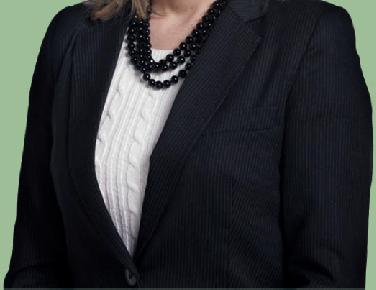
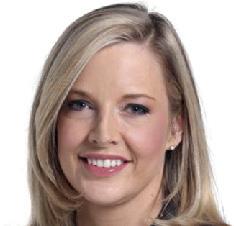
Trevor, Jackson and
E. Todd providing excellent legal services in contested wills, trusts and estates for over 50 years. disinherited.com rttodd@disinherited.com t. 604.264.8470 VOL. 81 PART 2 MARCH 2023 262 THE ADVOCATE ust Tr e agHerit W We e help clients protect t .ca ustcompan rget www.herita y heir families, their assets and their leg acies. 3W 1N6 , BC V y, r d., Sur 200 – 7404 King George Blv C5 7T 1 , BC V erVaancouv We Avven y 220 – 545 Cl de A ue, West V ey ustcompany..ca getr nicole@herita 778.742.5005 y nt y y y pp,g Regulated b the British Columbia Financial Services Authorit (BCFSA), Heritage Trust provides caring and professional executor, trustee and power of attorne ser vices for BC reside t clients.
Chuck
Nicole Garton, B.A., LL.B, LL.M., C.Med, FEA, TEP President, Heritage Trust
NOS DISPARUS
By R.C. Tino Bella
The Honourable John Douglas Lambert
Douglas Lambert was born in Scotland, at the seaport town of Ardrossan in Ayrshire, on June 30, 1930. He died in Vancouver Hospice on July 31, 2022. His wife and constant companion for 64 years, writer Barbara (Schwenk) Lambert, died ten months earlier. They left three children (James, a Canadian diplomat; Shaena, an author; and John, a translator), their families (including seven grandchildren and a soon-to-be-born great-grandchild), extended family in various parts of the world, friends and former colleagues.
Douglas was a devoted husband, father and grandfather, who allowed his family members space to come to know and enjoy being themselves, free from lecture or proselytizing, while gifting them a keen awareness of the beauty of the natural world, the benefit of long walks, books read, stories told, poetry appreciated. Shaena says he influenced them by “patterning honesty, personal integrity, respect and politeness”. John spoke of a trip to Barkerville in the early 1970s when Douglas stood bolt upright during a performance of “Begbie” to challenge at considerable length some of “Judge Begbie’s” declamations. The children remember Hausman’s poetry and that standing ovations are reserved for moments of rhapsody.
His friends remember a jolly host at the family home in Horseshoe Bay and the cherry farm above Penticton with good conversation, food and drink, often entertaining with song or a sudden Highland fling. One described him as “funny, feisty, ironic, cranky at times” with a liking for the Tour de France; “thoughtful and erudite but never dogmatic or fixed in his views.”
For his 27 law clerks, he was a unique individual, brilliant, demanding, sometimes quietly stern, who asked them to research foundational ques-
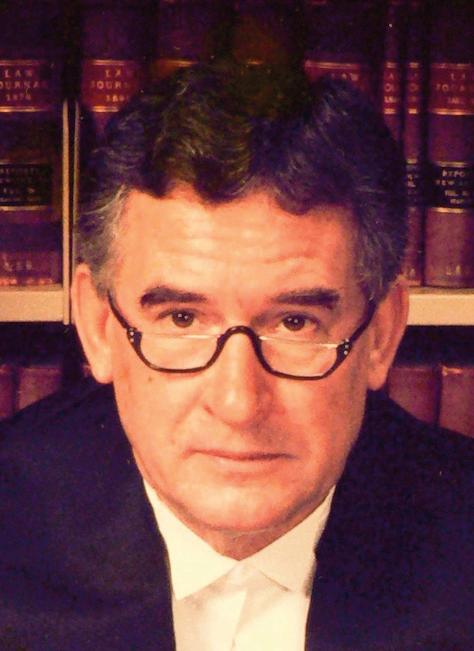
VOL. 81 PART 2 MARCH 2023 THE ADVOCATE 263
tions on key issues and to delve deeply into applicable common law precedents. One was given a list of 50 questions to research while Douglas was in Cortona on his annual month-long Italian holiday with Barbara. That list included a request for an intensive review of Judicial Committee of the Privy Council decisions about the common law reception of customary law. Another was asked to review all decisions of the final courts in the common law world on the parol evidence rule. But not all was work. Their year of clerkship included informal lunches at Piccolo Mondo or Le Crocodile. The relationship with him and each other continued during their subsequent careers. They belonged to a special club.
Colleagues speak of a congenial colleague, always gracious and wellmannered, superbly competent, of formidable intellect and a gifted writer of legal prose. One counsel who appeared before him often told me “he was always courteous, he always welcomed all counsel’s arguments. He forced precision and detail by his interjections. He searched to do the right thing, the moral thing … He demanded faithfulness to the law and the authorities.” But many felt that they did not know the man and expressed keen interest in hearing his story. My privilege is to tell that story in remembrance of a remarkable colleague whom I, as an unlikely new judge, met in 1981 and got to know better working together on the Judges Law Reform Committee two years later. Sadly, few of those who have known him the longest have reliable memories. Happily, however, Martin Taylor, a colleague at Davis & Company and later on the Court of Appeal, gave a beautiful after dinner speech in 2003 that was subsequently published in the Advocate: “Mr. Justice Douglas Lambert: 25 Years on the Court of Appeal” (2004) 62 Advocate 73.
The story begins in his family setting.
Douglas was born of parents Jimmy Lambert, a mining engineer, and Jean Grierson Todd, a school teacher. Jean came from a Dumfries family residing in Ardrossan near the ferries to the isle of Arran and Campbelltown in Ireland. Jimmy was born in Kirkintilloch, Dunbarton on the Forth and Clyde Canal. Jimmy’s father, Jack (John), a master plumber and gasfitter, and his wife Mary Dyet and family settled in Ardrossan around 1900. Jack came from a family of tenant farmers and agricultural labourers who migrated westward from the eastern lowlands as their circumstances improved. The plumber’s father, James Richard Lambert, was an estate manager in Kilmun, Dunoon (now best known for holidaying) in the Highlands of Argyll on Holy Loch further up the Clyde. The plumber apprenticed there. The Lambert family origins are probably French. A Lambert figures prominently in Samuel Pepys’s diary, a tattered copy of which was
VOL. 81 PART 2 MARCH 2023 264 THE ADVOCATE
an ever-present companion for Douglas. Theatre played a part in his family’s life. His Uncle Jack was a well-known stage actor. In April or May 1946, Jimmy took Douglas, Uncle Jack and family to see the original staging of Rattigan’s The Winslow Boy at the Lyric in Hammersmith. This performance inspired Douglas’s unspoken desire to become a lawyer (his parents favoured a career in the thriving chemical industry).
When Douglas was born in 1930, the clipper ships bearing timber to the port of Ardrossan for ship building and returning to Halifax with pig iron and emigrants, or to the antipodes, returning brimming with wool, would have been distant memories. So too the packet ships that connected the railway from London to Glasgow. But the dynamite factory established by Alfred Nobel in 1871 was still thriving, built on the sand dunes and scrub of the nearby Ardeer Peninsula, today an important nature preserve. Nobel chose the sand dunes to protect his workers. Employing nearly 13,000 people at its peak, the factory closed in the 1990s. By then the dynamite company had been taken over by Imperial Chemical Industries (“ICI”). In 1946, Douglas got his first job there, in ICI’s analytic laboratory.
Before entering St. Andrews University to study mathematics, physics and chemistry, Douglas attended state schools in Ardrossan, and then Glenalmond College on the River Almond, near Methven, Perth, an independent school operated by the Scottish Episcopal Church, which follows the Book of Common Prayer in the Anglican tradition. We cannot know whether his years at Glenalmond confirmed his hidden legal ambitions, but Douglas told a cousin just before he died that he left St. Andrews without graduating because he felt unfulfilled by his studies there. He was not to complete his B.A. until 1955 (at Queen’s University in Kingston, Ontario). There, he chose politics, economics and philosophy to accompany the mandatory French and English. He then worked his way west to UBC, receiving his LL.B. with the class of 1958. Then followed articles with Robson, Macdonald and Guest and a call to the bar in 1959. His parents travelled to Vancouver for the occasion.
When Douglas left St. Andrews, he turned again to ICI for employment, this time in the laboratory of its Canadian subsidiary, Canadian Industries Limited (“CIL”), in Beloeil, Quebec. In the early 1950s, he boarded at Port Glasgow, just east of Greenock, the Anchor Line’s S.S. Elysia, a relatively new 12-passenger merchant ship, then on the Atlantic Service that would take him to New York 12 days later. Beloeil was a small town on the Richelieu River, not then well connected to Montreal although now a suburb. He probably took a train from New York like so many Scottish migrants with roots in lowland farming (sheep and cattle) had in the previous century. He
VOL. 81 PART 2 MARCH 2023 THE ADVOCATE 265
continued to work for CIL in various ways as he moved across Canada. His final job included editing the company newspaper in its facility on James Island, 315 hectares now claimed by the Tsawout First Nation whose land it faces on the Saanich Peninsula, north of Victoria.
Douglas and Barbara met when they were both participating in a student performance of Shaw’s Back to Methuselah in the fall of 1955. In the wings, Douglas comforted the young lady playing “The Mother of Eve” upset at having lost her voice. At a post-performance party, Douglas asked the same young arts student to dance. She replied, “Go away, I’m busy, but come back later.” He did. Their romance had blossomed by the time she joined him on James Island for a visit during the summer of 1956. CIL had bought the privately owned hunting ground (used by Victoria gentlemen who populated it with fallow deer, partridge, grouse and quail), for the same reason Nobel bought the Ardeer peninsula acreage: to build an explosives plant where the terrain would protect its workers. There the young couple spent their time walking, talking, lying on the beach and reading to each other—Jean-Paul Sartre’s Being and Nothingness. They married on December 31 that year. A very early morning walk became a daily ritual. They were each the other’s best friend and biggest supporter in their individual endeavours until Barbara died.
After his call to the bar, Douglas moved with his family to Ottawa to work in the large sprawling federal Department of Justice. Five years later, he returned to Vancouver to work in BC Hydro’s legal department. While with the Department of Justice, Douglas conducted civil litigation and drafted financial legislation, including the Canada Student Loans Act. Because he left Canada in 1967 to develop the newly independent Barbados’s income tax act, it seems possible that he acquired tax expertise in the early days of the Carter Commission. On his return to Canada, Douglas joined Davis & Company, where he built a reputation as a solid commercial lawyer. One lawyer of similar vintage recalls him as a “frequent flyer” in chambers with stacks of files, always fully prepared, respectful of everyone in the courtroom, dealing efficiently with multiple applications.
Because of a keen interest in the need to adapt the law to changing needs, Douglas accepted an invitation to join the BC Law Reform Commission, first as a part-time commissioner (1976), then its full-time chair (January 1978), a tenure terminated upon his appointment to the Court of Appeal (July 1978) by then Justice Minister Marc Lalonde. He was the last appointment to the Farris court. Douglas returned to law reform issues when he joined the Judges’ Law Reform Committee (January 1979) as an original member, becoming its chair after the resignation of Tom Berger in 1980.
266 THE ADVOCATE VOL. 81 PART 2 MARCH 2023
Douglas also chaired the editorial board of the Canadian Bar Review for three years while Bertie McClean was its editor. Two book reviews in that journal provide examples of his extrajudicial writing: “The Judiciary in England and Wales” (1993) 72:2 Can. Bar Rev. 263 and “The Judicial Process: Realism, Pragmatism, Practical Reasoning and Principles” (2007) 85:2 Can. Bar Rev. 429. The former was about suggestions for change to the English judiciary, the latter about approaches to judicial reasoning. His last postjudicial writing remains unpublished: “The Vancouver Island Treaties Revisited” (2019), online: <www.kelliher-turner.com/uploads/1/1/2/1/ 11217484/affidavit_no._1_of_declan_redman_filed.pdf>.
This is the backstory of the courageous and caring jurist we are remembering, who, one day in the Lyric Theatre in Hammersmith, saw that he might remedy injustice where he intuited it by becoming a lawyer so that the rule of law might always prevail. He may not have recognized then that his respect for ceremony and tradition would ease his path. Nor is it likely he would have known that in 1981 he would turn to a Presbyterian church in West Vancouver so that he might be “close to God” and find in prayer the strength to pursue his calling.
It was fitting that his memorial service (which is available on <www. youtube.com>) was conducted under the old order of the Presbyterian Church, with readings from the King James Bible, and the version of the Lord’s Prayer learned in childhood. He had not been successful in resisting the new order at West Vancouver Presbyterian, but on December 11 we older folk raised in the Scottish Presbyterian tradition felt at home, as he would have. Appropriate too that the Paddle Song fitted seamlessly into that service, performed beautifully by Robert Davidson and Terri-Lynn Williams-Davidson as it did at the cherry farm when the ashes of Barbara and Douglas were scattered on the family’s land. That honour reminded all present of the dinner the First Nations Law School Association had hosted following his retirement in 2005 where chiefs and elders of the many communities and Nations whose appeals he had heard drummed and sang for him and his family their Nation’s honouring song. His judgments had given them hope that one day there would be a just settlement of the land question as in case after case the Supreme Court of Canada found support for their judgments in his dissents: “Honouring a Brave Jurist: The Lambert Tribute” (2006) 64 Advocate 207.
(with the help of many of Doug Lambert’s friends)
THE ADVOCATE 267 VOL. 81 PART 2 MARCH 2023
Carol Huddart
Nils Eggert Daugulis
Nils Eggert Daugulis passed away on October 6, 2022 following complications arising from a brain tumour. Nils was born on August 29, 1947 in Denmark to a Danish mother and a Latvian father. Nils’s father met his mother following his escape to Denmark after being conscripted into the German army when they overran Latvia. Nils’s father immigrated to Canada, where he began clearing a homestead in the Fort St. John area of northern British Columbia. In 1950, Nils and his mother sailed from Denmark to New York. They made their way across the United States and Canada by train, arriving in the Peace River area in January 1951. When they arrived, the temperature was -50°. To earn money, Nils’s father was working at a remote saw mill, and he only had time to show them the log house where they would be staying before he had to head back to camp. He had cut wood for the fire and pointed them to where the neighbours were, a mile away, in case they needed help. He returned from camp two weeks later.
Nils grew up a true farm kid, clearing and cultivating the family farm, which grew from one section to nine sections or 1,440 hectares. Nils loved the farm, but his high school math teacher, recognizing that behind the farm colloquialisms there was a wickedly smart mind, convinced him to attend Simon Fraser University. Nils graduated with a bachelor of commerce degree with SFU’s first graduating class. Upon graduation from SFU, Nils went off to Europe, ostensibly to visit relatives in Denmark, but really to ski. Skiing was a passion. While in Europe, Nils taught skiing in Austria and, in a story out of a spy novel, he skied with Swedish commandos. Back at home, he skied with the provincial ski racing team, and heli-skied. Having the foresight, just after articles, to buy a lot in Emerald Estates with two friends, he skied Whistler. For many years, he did an annual ski trip with a number of lawyers.
Returning to Canada from his European adventure, Nils attended the University of British Columbia law school. Upon graduation, Nils articled to C.C.I. Merritt, Q.C., V.C., at Bull, Housser and Tupper. Nils was called to the bar in 1974 and began practice with the firm’s admiralty law group. Maritime casualties were much more common than today, and Nils soon found himself litigating vessel collisions and dock and cargo damage claims. Oil spills were not infrequent, and Nils’s initial practice in that area led, in later
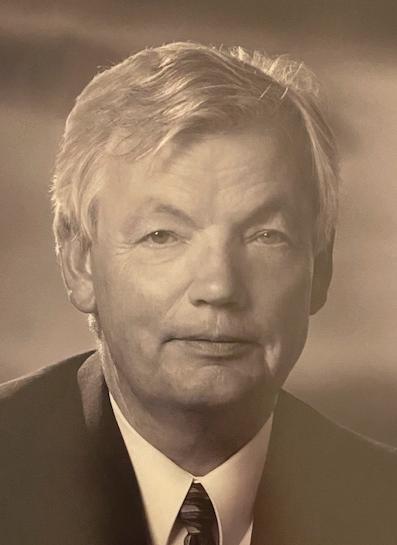
VOL. 81 PART 2 MARCH 2023 268 THE ADVOCATE
years, to a significant environmental law practice. One of the cases Nils worked on early in his career was Wire Rope Industries of Canada (1966) Ltd. c. B.C. Marine Shipbuilders Ltd. , in which they were successful at the Supreme Court of Canada. Nils still had the famous towing socket in his office when he retired.
Farming equipment—tractors, threshers and combines—slowly sailed the fields of grain like the deep sea ships steadily moved through the ocean or tugs sedately towed booms of logs. The farm boy immediately took to maritime law. One of his clients shared the fact that Nils understood and really liked machinery, which made him easy to talk to. He could build rapport with his clients regardless of their occupation.
The local maritime practice was known to be particularly adversarial—at times, seemingly more akin to maritime warfare than law. Nils, as slow to anger as anyone you ever met, could be riled. While still an associate, he once slammed the door of a partner so hard it broke the frame. Nils was able to get past that outburst and made partner at the firm. However, the noholds-barred, sandbagging litigation of his predecessors did not suit Nils’s temperament and he was determined to treat other counsel with utmost respect. Over the years, he became friends with many and was best friends with the son of one of his senior lawyer’s nemeses.
Before deciding on a career in law, Nils considered accounting. However, during his studies for his bachelor of commerce program, Nils worked on a study on the economics of the funeral industry. His research seemed to touch on subject matters that someone wanted unrevealed, and he soon began receiving death threats. As a result, Nils concluded that law might be a less dangerous profession than accounting—a conclusion that he may have had cause to reconsider when, a few years later, he sat in the master’s cabin on a ship while the captain waved a vintage Luger at some of his crew who were on strike.
Notwithstanding the impression left by media, the frequency of maritime casualties has shrunk dramatically, and Nils was called on to take a more active role in the firm’s general litigation practice. When an American purchased a local tug company that derived most of its income from ship docking and then also bought thirty per cent of another local tug company that also had some ship docking capacity, the Competition Bureau came calling. Nils phoned the client at 4:30 in the afternoon to advise him that the Bureau had issued a divestment order. The client said he would like to think about it overnight. At 7 the following morning, the client called back and said to Nils, “Tell the Bureau I no longer own thirty per cent of the company. Tell them I now own it all.” Overnight, the client had bought almost all of
VOL. 81 PART 2 MARCH 2023 THE ADVOCATE 269
the company’s remaining shares and the battle was on. Nils sprang into action. He obtained an order that delayed the divestiture while an application for a variation of the divestment order was brought before the Competition Tribunal. The result of that application was, in the client’s eyes, so successful that thereafter he frequently sought Nils’s advice on a wide range of matters.
In a case arising out of a fire on a factory trawler, Nils obtained an order that security for costs in the amount of $1.75 million be posted by the plaintiffs. That award was the largest ever security for costs awarded in Canada to that date.
If you watched Nils, in court you might remember him both for his courtroom eloquence but also for his air quotes. Nils lost his right-hand index finger down to the second knuckle in a farming accident. He was particularly fond of using air quotes as emphasis. From behind in the gallery, with his partially missing digit and his hands aloft in an air quote, it looked like he was giving the bench the finger.
In addition to having a busy litigation practice, Nils headed the Bull Housser maritime department, managed the litigation group and was managing partner of the firm in the early 1990s. Nils made substantial contributions to the well-being of Bull Housser, including guiding it through some turbulent waters. As one of his former partners said, “He led the firm in very difficult financial times and made sure that it stayed on course.”
In addition to litigation and firm management, Nils gave back to the profession. He was chairman of the National Maritime Law Section of the Canadian Bar Association, president of the Maritime Law Section of the Canadian Bar Association, BC Branch and co-chairman of the 1986 Third International Maritime Law Conference, 1994 Fourth International Maritime Law Conference and 2004 Comité Maritime International Conference.
Even while practising law, Nils also spent time on the farm planting crops in the spring and, if the snow did not arrive first, harvesting in the fall. He once shared with a newspaper columnist that farming was a wonderful reality check. Nils explained that being a big-time lawyer down south did not cut it when he went to the local grain elevator.
In an attempt to calm the choppy waters of the small group of practitioners, the maritime lawyers in British Columbia began to hold an annual weekend getaway with their spouses. The event was often held at the summer places of members of the subsection. Every second-year maritime lawyers from Washington and Oregon were invited. The biannual meeting was usually held at the Captain Whidbey Inn on Whidbey Island until the loud, raucous late-night singing had the neighbours petition the inn to ban
270 THE ADVOCATE VOL. 81 PART 2 MARCH 2023
the group. Before the Whidbey ban, Nils and Mike Bird found, in the inn’s gift shop, a stuffed duck dressed as an admiral. Thus, the Admiralty Duck Award was inaugurated, given annually, for no particular reason, to a maritime lawyer.
In addition to skiing, Nils played tennis and golf. He owned an inflatable Zodiac that he took on what his wife Sue described as “some crazy trips” to west coast of the island. He was also known to enjoy a good martini at the Hyatt or the Roof.
Shortly before he retired from Bull Housser, Nils and his wife bought Venue West Conference Services, a busy international conference organizing company. The company is a successful family business that is now operated by his wife and sons.
Nils is survived by his wife Sue, sons Michael (Tina) and John (Tesa Drew) and grandsons Hudson and Leo.
Nils, we hope to see you again “down the road apiece”.
Michael J. Bird and Merle E. McKenzie
The Honourable Richard Marcroft Latta Blair
The Honourable Richard Blair died on December 21, 2022.
Richard was born to David and Vivian Blair in Glasgow, Scotland, joining his only sibling, Michael, on March 7, 1945. The family immigrated to Canada by ship in 1952. Richard’s first memory of Canada was the taste of fresh strawberries in Ottawa—a taste he never tired of. The family settled in Vancouver, where Richard attended Magee High School. At Magee, he played rugby (his knees never forgave him), became a Queen’s Scout, took up skydiving (over 100 jumps!) and followed his big brother into the journalism field as a copy boy. This evolved into his first career as a journalist at the Vancouver Sun.
In 1963, Richard entered UBC. There, he spent the majority of his time at The Ubyssey newspaper, rising to the rank of city editor by the time he
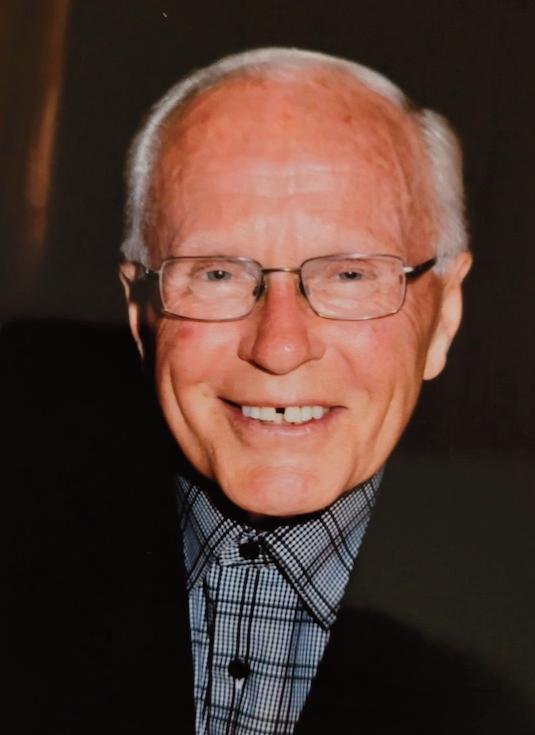
VOL. 81 PART 2 MARCH 2023 THE ADVOCATE 271
met Fearon in 1965. He had barely scraped through his final year of a bachelor of arts degree, thanks to working too many hours at The Ubyssey, when he and Fearon tied the knot in 1968. Fearon recalls there was a phone call to Richard on their first morning of marital bliss, advising him that he was admitted to law school. So their first year of marriage had them both attending UBC, Fearon finishing her nursing degree, Richard in first-year law.
In spite of continuing to work two nights a week as a journalist, Richard completed his law degree and articled with Clark Wilson in Vancouver. The day after being admitted to the bar, Richard and Fearon left to see the world, which they did in 19 months of travel, making many memories and friends along the way. They then settled in Kamloops, where Richard worked with Meikle Shupe Blair, then with Mair Jensen Blair, while managing to make time for hiking, skiing, cycling, canoeing, mountaineering, travelling and driving expensive, interesting and at times impractical vehicles (an MG-TD, Lotus Eclipse and Morgan +8, among others) as well as for some backroom involvement in provincial and federal politics. He also served on the Overlander Extended Care Hospital board as member and chair, and was involved in the establishment of the Kamloops Foundation, now known as the BC Interior Community Foundation.
In 1989, Richard joined the BC Randonneurs Cycling Club, a longdistance non-competitive cycling club which led him to cycle around 6,000 km per year for many years, including a number of 1,200 km rides through the Rockies, Kamloops to Jasper to Lake Louise and back to Kamloops, in three days. These rides qualified him to ride Paris-Brest-Paris, considered the ultimate long-distance bike ride. However, he and Fearon concluded that if they were in France for cycling, it would be preferable to enjoy the food and fine wine!
In 1985, he took a sabbatical year from his law firm. He and Fearon did another year-long grand tour around the world, focusing on South America for the first six months, then cycling 4,200 km over ten weeks in Europe, and stopping in various other countries in Africa, Asia and the Pacific enroute home.
Their love of travel took them on visits to, in Fearon’s estimate, about 76 countries. Most of the trips were often off the beaten path, exploring literally the whole world. One memorable cycling trip was with Fearon and a tandem bicycle, riding from Vancouver to Winnipeg. Another trip was a hike to the top of Mt. Aconcagua, at almost 7,000 metres the highest point in the Western Hemisphere.
Richard practised as a litigator. During his career as a barrister, he exemplified collegiality. Following a session of determined advocacy for his
272 THE ADVOCATE VOL. 81 PART 2 MARCH 2023
client, but after the client and the opposing client had departed the courthouse or discovery room, he would often suggest a bike ride where he and his opposing counsel would unwind, discussing anything except the matter that brought them together as adversaries that morning.
His love of cycling resulted in the formation in the 1990s of an earlymorning “bike gang” with a couple of fellow lawyers but more importantly lots of non-lawyers who provided useful perspectives on life. That “gang” routinely cycled with him every weekday morning, weather permitting, for 20 years.
In 1992, he was appointed to the Supreme Court of British Columbia, where he worked until retirement in 2013. Counsel were always pleased when they saw that he was presiding. He never seemed to betray his thoughts or the ultimate result with his facial expression. Those appearing in front of him—lawyers and self-represented parties alike—were always treated courteously. His decisions reflected both practicality and a thorough understanding of the relevant facts and law.
He was at times dismayed when his colleagues’ (and, rarely, his) decisions were overturned by the Court of Appeal, and delighted on those occasions when the Supreme Court of Canada restored his colleagues’ decisions. Since the early morning bike rides were at 7:30 a.m. Kamloops time, the days’ decisions emanating from Ottawa were known by the start of the ride. One morning the Supremes had restored three B.C. trial decisions; when one of the biking lawyers said “Good result today, 3–0”, Richard said, “No, 27–0!”
For Richard, one unanticipated benefit of being a judge was the ability to perform weddings, especially those where Scottish attire was worn, which brought enjoyment to him and to the happy couples.
Following his retirement in 2013, he became the first “judge in residence”, a voluntary position, at the new Thompson Rivers University law school. He enjoyed working with the law professors and especially the students.
Richard succumbed to dementia and spent the last three years of his life in the care of the wonderful staff at the Kamloops Senior Village. He leaves behind his wife Fearon, brother Michael and his family, cousins and their families in Scotland, his in-laws and their extended families across Canada, many longtime friends (a reflection of his many interests and pursuits) and Itsy, the last of a long line of dogs. He was a good man who loved his family, served his community as best he could, enjoyed his chosen work and lived his life to the fullest. He will be missed by many.
Fearon Blair and Robert McDiarmid, K.C.
VOL. 81 PART 2 MARCH 2023 THE ADVOCATE 273
The Honourable Francis Weeden Cole
As a result of leukemia, Francis Weeden Cole died on November 5, 2022 at age 79. Frank was survived by his wife of 45 years, Lesley; his daughters Heidi (Sean) and Sarah (Walter); his beloved grandchildren Hannah, Heath, Rebecca, Cole, Carter, Hudson and Lauren; his brother Bob (Margaret); his many extended family members; and hundreds of friends.
Frank was born in Galt, Ontario, the second of three sons. He had an innate drive and valued hard work and education, with a degree in business and law. His belief in the importance of education led Frank to fund secondary education for his seven grandchildren. Frank’s university summer breaks were spent happily at the Château Lake Louise, where he cultivated friendships that would last for over 50 years.
After graduation from the University of Toronto, Frank articled to L.C. Brahan and to John I. Bird of Owen, Bird & McDonald. After he was called to the bar in September 1971, Frank moved to Vernon. There, he practised with Davidson & Company until May 1985, and then with Sigalet, Maguire & Cole until he was appointed as a judge of the B.C. Supreme Court. As a lawyer, Frank was inspired by his mother Alma, who in the 1950s opened the first school in Galt for children with special needs. Frank’s brother, Bruce, was the first student.

Throughout his career, Frank served the City of Vernon in many capacities, including on and through the Vernon School Board, Silver Star Rotary Club, North Okanagan Youth and Family Services Society, Vernon Community Living Society and the Board of Variance. He also was president of the Vernon Bar Association. Frank ran as a Liberal in a provincial by-election in October 1984. While he was proud to have won what he referred to as the bronze medal in the race, with 7.52 per cent of the vote, he also said that he and Lesley would have demanded a recount if he had won.
After his appointment as a judge on March 19, 1986, Frank sat in Vernon before moving to sit in Vancouver in 1996. However, he used every opportunity to sit in Vernon.
Any remembrance of Frank has to include remembering his sense of humour and his many practical jokes. He had an inexhaustible supply of jokes, some that would now be referred to as “dad jokes”, some from his great memory, and all told with great enthusiasm. Some were repeats, and on one occasion one of his grandchildren interrupted to state, “Oh Grandpa,
274 THE ADVOCATE VOL. 81 PART 2 MARCH 2023
that is your number 37.” He loved to laugh, and he loved to hear others laugh. He was always good company, and was a great host and a great chef.
At a retirement ceremony in courtroom 301 of the Vernon Law Courts on June 29, 2018, a number of friends and colleagues spoke with humour about Frank. It was said that, in the courtroom, Frank made the lawyers work but, in the hallway, he made them laugh. The 29th was a day when there was laughter in the courtroom too. Joined by about 100 including family, friends, lawyers and judges, it was a day that was part celebrity roast and part retirement party. Retired Justice Ken Arkell, Justice Gary Weatherill, Chief Justice Bauman and longtime friend and lawyer Dirk Sigalet got their jabs in as Frank took the hot seat.
“When I heard that Frank would be celebrating, I knew he was too old to celebrate,” jested Arkell, who added that he was certain that it was the currently practising lawyers who would be celebrating Frank’s retirement. “Had I known Arkell was going to give us a history lesson, we should have started this yesterday,” Frank retaliated in his closing words. Always the practical joker, Frank took the jests in stride, saying that his former partner Neil Davidson always said, “You take your work seriously, not yourself seriously.” In recounting those words of his former partner, Frank said that he followed that approach to life.
Chief Justice Bauman stated that “Frank, in his career, has given voice to those who are voiceless and those in need.” Justice Weatherill added, in his speech, “He was and still is one of the good guys.”
Frank, who during his lawyer years was once yelled at by a judge for turning a page too loudly, recounted tales of his long career. One such story, and family, that Frank recalled stemmed from a child custody matter that had been before him. “The smile on her [the mother’s] face is still etched in my mind.” Recalling the time he gave his decision on the matter, he stated, “I know I made her life much better.” In summing up his job as a judge, Frank said, “It is the stories people tell about their lives that is most interesting. Some people describe judging as opening a new book every day because things change constantly. The stories people tell are fascinating”; “it is fair to say that their stories are a never-ending stream of stories, day after day, humanity with all its colour played before me a catalogue of hope, dreams, deceptions and disappointments, men and women of all races and backgrounds, sad, happy, angry, indifferent. I still have many memories of these people and their stories.”
In retirement, Frank took on a number of projects. From 2018 to 2021, he was a tribunal member of the Mental Health Review Board established under the Mental Health Act to conduct review panel hearings for patients
THE ADVOCATE 275 VOL. 81 PART 2 MARCH 2023
admitted by physicians and detained involuntarily in provincial mental health facilities. He also lobbied MLA Harwinder Sandhu about the 100year-old Vernon Courthouse, expressing concerns about the lack of courtrooms, safety issues and the inability to hold high-security trials. He also worked hard to build on a lifetime of friendships.
There will be a celebration of his life in Vernon on a day to be announced. The Honourable Grant Burnyeat,
Emily Reid
It was not a dark and stormy night in Prince Rupert when Emily Mae Reid was born on September 30, 1948. Prince Rupert was enjoying rare mild autumn weather with a high of 13 and a low of 3. Her parents, Dorothy and Ken Reid, had moved to Prince Rupert, where Ken, a professional forester, was employed in the lumber industry. The family eventually relocated to Victoria, where Emily attended elementary school.
K.C.
The family then moved to Vancouver, where Emily attended Winston Churchill High School, graduating in 1966 along with classmates and future lawyers David Frankel, Bill McClintock and Gordon MacRae, and future radio host Doc Harris. Like many teenage girls, Emily loved horses. Many a weekend saw her down in Southlands trading labour (mucking out stalls) for horseback time.
After high school, Emily attended UBC, receiving a degree in political science. Graduation found her travelling east to Queen’s University in Kingston, Ontario, where she earned a master’s degree again in political science. She fell in love with Queen’s and Kingston and applied to the law school, graduating with an LL.B. in 1974. Emily was one of only 18 women in the 1974 class of 120 Queen’s graduates.
Emily obtained articles with Gunnar O. Eggertson at the Vancouver office of the Department of Justice in June 1974 and was called to the bar on June 26, 1975. She never left Justice.
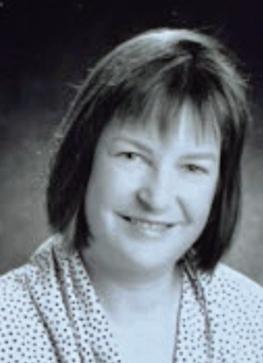
276 THE ADVOCATE VOL. 81 PART 2 MARCH 2023
Her decades-long career in criminal prosecutions involved narcotics prosecutions from the apocryphal nickel bag to boatloads of drugs. For almost two decades, she assumed responsibility for many of the most significant drug prosecutions in the province. She joked that she restricted her practice to “tonnage”.
Then, on April 17, 1982, the criminal litigation world changed. The Canadian Charter of Rights and Freedoms added a layer of complexity when the focus of criminal trials became real or perceived Charter violations. A multiday trial became a multi-week or even a multi-month exercise. But Emily was undeterred. She conducted her cases with vigour, finesse and dedication, whether she was faced with a myriad of Charter challenges, obstreperous opposing counsel or time constraints.
David Butcher, K.C., juniored Emily on a number of large trials with multiple accused represented by the most capable and outspoken defence counsel of the day. He observes that Emily’s real skill was to be polite, calm, methodical and fair. As a result, she earned deep respect from those opposite her, and her trials were unusually free of boisterous shenanigans. He recalls:
One of our cases attracted a significant amount of attention. The RCMP had decided to venture into legally uncharted waters by conspiring to traffic drugs with a group based in the Netherlands, in a scheme known as a reverse sting. One of the main conspirators lived in the city of Breda close to the Dutch border with Belgium. Without need for more than a couple of minutes of submissions, the trial judge, who shall remain nameless, but went on to become the Attorney General, ordered that commission evidence be taken, and that he would be the commissioner. Emily and I had the benefit of assistance from the embassy and were housed in the Kurhaus, a magnificent Edwardian palace on the beach in a suburb of The Hague. Those responsible for making judicial accommodation arrangements found a convenient lodge beside a freeway, several kilometres out of Breda. Defence counsel chose to stay in Amsterdam. Two them, Michael Bolton, K.C., and Kevin Woodall, were robbed at knife point by an assailant they could not identify. The commission itself was a fascinating insight into the criminal process in a civil law jurisdiction.
Emily contributed significantly to the development of Charter jurisprudence in this province, but perhaps her most famous case, at least from a jurisprudential perspective, was the prosecution of Robert Abbey. In that 1996 case, the Supreme Court of Canada set out the application of the “insanity defence” (as it was then called) and the rules for the admissibility of expert evidence.
Later in her career, Emily developed a subspecialty in electronic surveillance law. She was a meticulous drafter of affidavits and orders, none of which were ever rejected or quashed. She was always helpful to her col-
THE ADVOCATE 277 VOL. 81 PART 2 MARCH 2023
leagues and always willing to share her expertise. She epitomized the professional prosecutor in a civilized society: she was thorough, determined and persistent, but always unquestionably fair. She was appointed Queen’s Counsel in 1991.
Emily became active in both the Canadian Bar Association (“CBA”) and the Law Society. She was a director of the CBA, BC Branch between 1991 and 1997, served on the executive committee and, in 1996, became only the third woman to serve as president. Emily was one of the rare CBA presidents who went on to become a bencher of the Law Society. She was elected as a bencher for the County of Vancouver in 1994, served until 2001 and became a life bencher in 2002. During her time as a bencher, she served on the Discipline, Credentials, Ethics, Legal Aid, Unauthorized Practice, Gender Equality Monitoring, Competency, Bencher Concerns, and Multiculturalism Committees. She served as a campaigner for the West Coast LEAF BC Litigation Fund and as a director of the Legal Services Society (now Legal Aid BC). She also worked on United Way and BC Children’s Hospital fundraisers.
She retired from Justice in 2007 and she was able to indulge her love of reading and gardening. Emily was interested in current affairs and followed political events assiduously. She loved her dogs.
Sadly, her retirement was marred by a variety of health issues. The happiest events during her retirement were the marriages of her two sons. Emily was a proud mother and took great pleasure in the achievements of Stephen and Brian and their spouses. Retirement also witnessed another great milestone: she quit smoking! Emily’s friends will remember getting together over a bottle of wine and good food, and trips taken to Scotland and the Okanagan.
The time of COVID-19 was particularly difficult for Emily. Her health issues made socializing impossible, and she lived in splendid isolation for many months. In the late summer of 2022, she received the dreaded news that she had terminal cancer. In typical Emily fashion, she ordered her affairs. She rode roughshod over the medical profession, determined that she would live the remainder of her life on her terms. And she did. On September 3, 2022, after attending to all legal matters, she passed on, quietly and with dignity, her beloved sons by her side.
Judith Bowers, K.C., the Honourable Grant Burnyeat, K.C., and David Butcher, K.C.
278 THE ADVOCATE VOL. 81 PART 2 MARCH 2023
THE LANCE FINCH MEMORIAL FUND AT TRU CALL
FOR DONATIONS
Chief Justice Finch loved the law and devoted many hours as a lawyer and judge to mentoring students, in particular in the area of oral and written advocacy. Chief Justice Bauman has stated: “Lance always commanded the respect of the legal profession in our province and his legacy of significant jurisprudence was acknowledged across Canada. He was a good colleague, a good friend, and a great judge.”
In figuring out how best to honour Chief Justice Finch’s legacy, TRU, Judy Finch (and the Finch family), the judiciary, and members of the bar decided on the establishment of a dedicated endowment in Lance’s name that can be used to advance the development of essential advocacy skills and to provide mooting opportunities to students at B.C.’s newest law school.
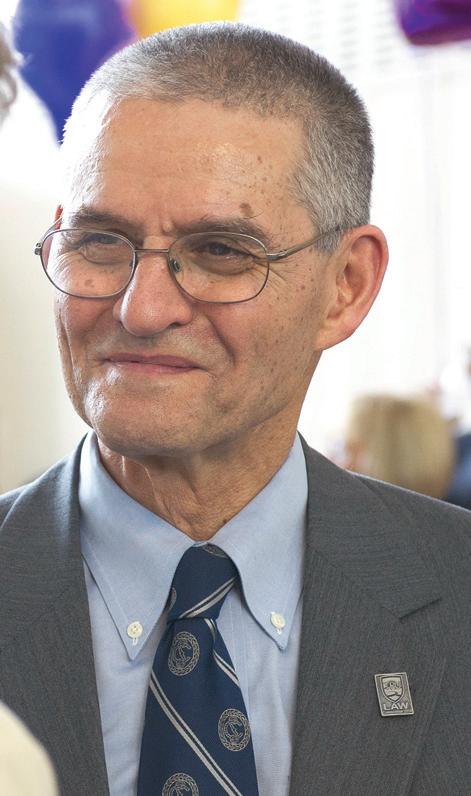
Since it was founded eleven years ago, TRU Law at Thompson Rivers University has taken its rightful place as a mooting competitor. Supported by 26 coaches, close to 200 students have mooted against teams from Canada, the USA, Germany, Estonia and Afghanistan. Fifteen TRU mooters have been chosen as clerks in the British Columbia Courts, the Alberta Court of Appeal, the Tax Cour t and the Federal Court of Canada. This endowment fund will help to ensure that law students develop the communication skills and confidence needed to become skillful advocates and leaders, whether in the courtroom or boardroom. Individuals, law firms, and businesses that wish to donate can do so by contacting Sarah Sandholm, Director of Development at TRU Law by email <ssandholm@tru.ca> or phone 250-377-6122.
Individuals can also give online: <tru.ca/giving>
Thank you for your generous consideration,
ORGANIZING COMMITTEE:
Peter Senkpiel, Thomas Cromwell O.C., Robert McDiarmid K.C., & Frank Quinn K.C.
THE ADVOCATE 279 VOL. 81 PART 2 MARCH 2023
Paul & Company
172 Battle Street, Kamloops, BC V2C 2L2
www.kamloopslaw.com
WHEN CONSIDERING MEDIATION, EXPERIENCE COUNTS
With over 900 mediations and a career spanning four decades, David Paul, K.C. has a proven record of results resolving disputes in diverse legal areas:
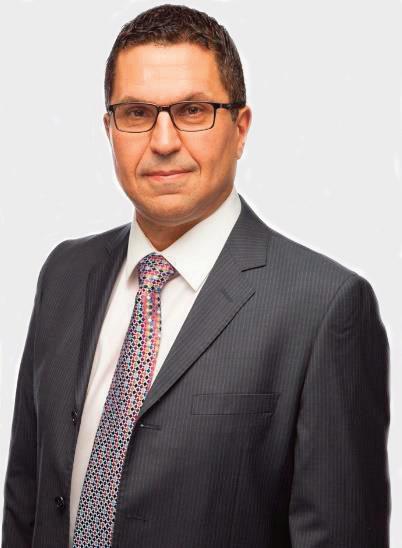
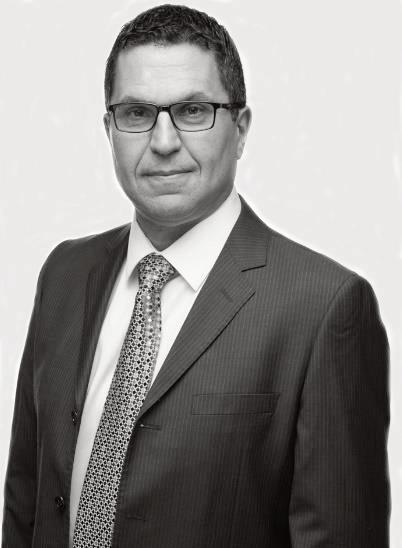
F Family Law
F Civil Litigation/Personal Injury
F F Estate Disputes (including the estates of Indigenous Persons) Construction Disputes
Court delays and the high cost of litigation should be pointing you and your clients to a mediated settlement. David Paul can help parties resolve matters effectively in person or in an online forum, lowering costs for all parties, while still maintaining confidentiality.
F Over 36 years of courtroom experience
F 29 years of mediation experience
F Modern, secure technology emulating face to face communications at any location
F Competitive rates
F Mediation facilities available
CALL 250-828-9998
CALL 250-828-9998
dpaul@kamloopslaw.com
dpaul@kamloopslaw.com
WHEN YOU NEED THE FACTS
Our members offer investigative expertise in:
• Automotive & Property Investigations
• Background, Due Diligence & Social Media Investigations
• Workplace Investigations
• Patent & Trademark Infringement Investigations
• Surveillance
• Locates
• Will Say Statements, Scene Examination & Document Service
• Relational & Child Custody Investigations and much more!
Established in 1995, our members are all licensed and operate under a Code of Ethics and Professional Conduct
For more information, please visit our website
www.piabc.ca

VOL. 81 PART 2 MARCH 2023 280 THE ADVOCATE
David A. Paul, K.C. (B.GS., LL.B., LL.M., RRM)
The Professional Investigators’ Association of British
Columbia
NEW JUDGES
By R.C. Tino Bella
The Honourable Judge Kasandra Cronin
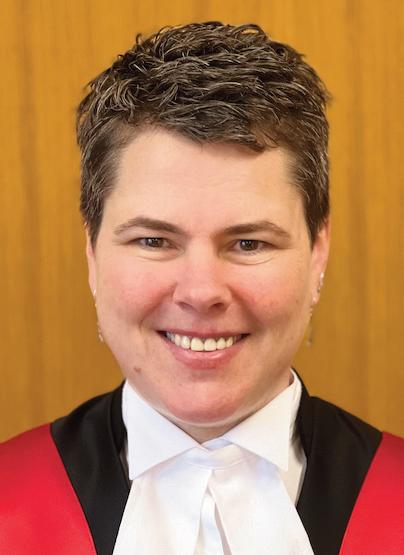
It came as no surprise to her colleagues, family and friends when Kasandra Cronin, Q.C., was appointed to the Provincial Court bench on July 26, 2022. Throughout her practice as a criminal defence lawyer, she was known for her earnest, humble and kind nature coupled with a strong sense of justice. These traits benefitted not only her clients, who were often among the most marginalized in our province, but also the profession.
Kasandra had a somewhat unconventional upbringing. She was born in Sidney, British Columbia and spent her early years on Galiano Island and Salt Spring Island—when she was too young to remember, her family spent a summer living in a teepee. Eventually, they moved to the mainland while her mother completed her teaching degree in Vancouver and raised Kasandra and her brother. When Kasandra was finishing grade eight, very unexpectedly and to her shock and dismay her mother got a job in California and they packed up all the family’s belongings and drove in a full car down to the Bay Area.
Kasandra ended up staying in California for some time. She was a talented field hockey player throughout her teenage years and into university at Berkeley, where she graduated with honours in political science. While achieving academic success, Kasandra made the All-Norpac team in field hockey and was recognized with the prestigious Academic All-American distinction. Playing goalie, she was apparently known as “The Wall”.
Kasandra met her partner, Dan, through mutual friends involved in field hockey. Dan recalls that Kasandra, true to her decisive and direct nature, told Dan she didn’t want a wishy-washy relationship and that he would need to be all in if they were going to stay together. She was the person he
VOL. 81 PART 2 MARCH 2023 THE ADVOCATE 281
wanted to share the adventure of life with, and they have been together now for over 30 years.
Dan describes Kasandra’s strong nature as what drew him to her. They connected through their love of adventure and accomplishment. Earlier in their relationship, they could be found rock climbing and road tripping in their spare time. A particularly proud moment they shared was replacing the engine of a VW camper van they planned to take on a circle tour from California to Vancouver, then Nova Scotia to visit her mother’s family, on to Newfoundland, to Dan’s family in Colorado, and back. Without an engine and with little money to their names (Dan was working in freelance TV production and Kasandra was getting paid $8 an hour at an asbestos litigation firm in Oakland), Kasandra and Dan’s parents were apparently skeptical about how they would make it out of the driveway.
To their family’s surprise, with sheer force of will, Kasandra and Dan pulled out the van’s engine, got it rebuilt, installed a new air cooler and were on their way. Kasandra remembers this as one of her bigger accomplishments in life. That 12,000-mile road trip, which they commenced in 1994 and would last two months, was a great success. Dan and Kasandra got along so well they got married not long after they got back to California, in July of 1995.
In September 1995, the two newlyweds moved to Vancouver, where Kasandra started law school at UBC. Kasandra was drawn to criminal law from the start. While interviewing for summer positions after second year, her number was passed to Terry La Liberté, who was looking for a junior at the time. It took 15 minutes of meeting Kasandra for Terry to make the decision she was the right person for the job. Terry recalls meeting Kasandra at his office on Georgia and Granville. They walked toward youth court for a hearing and by the time they got to Smithe and Howe, Terry had hired her. Dan, whom some would call a “Deadhead”, was apparently ecstatic that Kasandra got the job, as he had heard Terry had represented a certain member of the Grateful Dead.
Over the years, the two would form a bond that extended beyond law. They travelled throughout the province for court, sometimes on backroads, and often to remote locations. Terry also discovered Kasandra was a beer afficionado when, while out for dinner after court, she correctly identified the restaurant needed to clean their taps.
Throughout their decades practising together, Terry and Kasandra worked in partnership. Their clients had the benefit of Terry’s zealous advocacy and Kasandra’s even-tempered diligence. Most of their clients were unable to afford a lawyer and were funded through legal aid. It was crucially
282 THE ADVOCATE VOL. 81 PART 2 MARCH 2023
important to both Terry and Kasandra that the most vulnerable populations were served by skilled defence counsel. For their Indigenous clients, this meant a meaningful application of the principles of Gladue before many others in the legal community understood s. 718.2(e) of the Criminal Code, which pronounced jail as a last resort, with particular attention to the circumstances of Aboriginal offenders.
Terry describes Kasandra as one of the best criminal defence lawyers out there. She did the right thing intuitively and, in Terry’s words, was adversarial without being at all confrontational. She saw the good in people, cared for her clients immensely, was a self-starter and had a calm and patient, nononsense personality. Her strength and clear boundaries meant that Kasandra was all in while at work, and all in while at home.
Work-life balance was a given for Kasandra. Young criminal defence lawyers who she would later mentor would see from her example that it was indeed possible to have a full life outside of law. In their home life, Kasandra and Dan spent many years continuing their adventures with just the two of them, before deciding to have a child and having their daughter, Monica, in 2005. From then on, Monica, Dan and Kasandra shared their adventures and operated as a close family unit. These days, they can be found most weekends at Whistler, where Monica now teaches as a ski instructor.
Monica, now in her late teens, remembers growing up thinking her mom had the “coolest job”. When she was young, Monica recalls not really understanding exactly what it was that her mom did, but that it was basically helping people get out of jail. She told this to one of her friends in preschool, who at the time was in trouble with his parents but didn’t think this was an issue because Monica’s mom could just break him out of jail.
During her early teen years, Monica recalls Kasandra using her “lawyer voice” with her. When that voice came out, Monica knew she was in trouble. These days, having realized that Kasandra was always right, Monica sees Kasandra as an amazing person to look up to as her mom is the “kindest and fairest person” she has ever met.
It was vitally important for Kasandra to pass on her knowledge, not only to newer lawyers in law, but also in her role as a coach in field hockey, which she would continue to do while practising as a successful criminal defence lawyer when Monica got older. Kasandra takes the role of coaching and mentoring very seriously and has an innate ability to bring out the best in people and help them be not only a better lawyer or player, but also a better person.
In her work life, Kasandra compelled the respect of her colleagues, both Crown and defence. Her earnest and often determinative submissions were
VOL. 81 PART 2 MARCH 2023 THE ADVOCATE 283
a delight to watch and served as a learning experience for young counsel in the room. She was appointed Queen’s Counsel on December 17, 2019.
A quiet leader among the defence bar, Kasandra was a founding member of the Criminal Defence Advocacy Society in 2015 and remained its president until her judicial appointment. She was also a director of the Association of Legal Aid Lawyers, dedicated to improving funding through Legal Aid BC. Kasandra was asked to do ad hoc Crown work and was appointed as a special prosecutor. She was a CBA Criminal Justice Subsection chair, sat on the Elizabeth Fry Society’s board of directors from 2003 to 2009, represented West Coast LEAF at the Supreme Court of Canada and was a criminal defence representative at provincial Justice Summits.
Despite all her impressive accomplishments, Kasandra was, and remains, exceptionally humble. Those who appear before her will be treated with dignity, respect and compassion. Although her colleagues miss her dearly (Terry continues to voice that he has not yet gotten over his feelings of abandonment), we know that she has all the qualities of a great judge and that the Provincial Court is incredibly lucky to have her.
The Honourable Justice Baljinder Kaur Girn
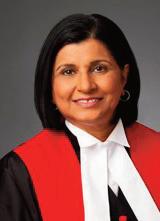
Baljinder Kaur Girn was appointed to the Supreme Court of British Columbia, effective February 7, 2022. She was one of seven judges appointed to the court that day who, collectively, were referred to as the “Group of Seven”. Prior to her appointment, Baljinder had the privilege to serve the Canadian public as Crown counsel for the Public Prosecution Service of Canada (“PPSC”).
Baljinder is a first-generation Canadian who was born in India. She is the second eldest of five daughters born to Rattan Singh Girn and Surinder Kaur Girn. At the age of six, Baljinder arrived in Vancouver with her mother and two sisters, Daljinder and Kuljinder, to join her father, who immigrated to
VOL. 81 PART 2 MARCH 2023 284 THE ADVOCATE
Canada a few years prior to their arrival. Baljinder’s other two (younger) sisters, Rajwinder and Mindi, were born in Canada. Her brother, Lakhwinder, was adopted by her parents to complete the family.
Baljinder’s parents had the same hopes and dreams as many other immigrant parents who left their home country to provide better opportunities for their children in Canada. Her parents made extraordinary sacrifices for their daughters. They were not highly educated professionals but raised the girls to have a strong work ethic, to be proud Canadians and to be independent Punjabi Sikh women. Baljinder’s late father would have been beaming with pride on her appointment to the bench.
Baljinder’s parents integrated their daughters into Canadian society, while at the same time ensuring they maintained Punjabi Sikh values and traditions. Baljinder was encouraged to excel academically and become involved in school activities, including student leadership roles and sports. While living a fulfilling life integrated into Canadian culture, Baljinder and her sisters spoke Punjabi at home and attended Punjabi school on weekends, where she learned to read and write in Punjabi. Watching Bollywood movies also taught her to become conversationally fluent in Hindi.
Baljinder attended Edmonds Junior High School in Burnaby and graduated from Burnaby South Senior Secondary School. In high school, Baljinder’s first plan was to attend university and become a home economics teacher. After all, when you love cooking and sewing as much as she did, it made a lot of sense. However, enrolling in Law 11 changed everything and led to Baljinder receiving an entrance scholarship to attend Simon Fraser University where she obtained a degree in criminology, with the eventual plan to attend law school and become a prosecutor.
Baljinder accomplished a lot of firsts in her family. She paved the way for her siblings and relatives to pursue academic success by being the first member of her family to attend university and law school. Baljinder was also the first female member of her extended family to be involved in competitive sports such as track and field and soccer. It never entered her mind that Indian girls could not or should not play sports. As a teenager, she formed an all-Sikh girls soccer team that competed in summer tournaments, and she was able to convince the local Sikh temple to pay for their jerseys. Although her mother initially objected to her daughters playing sports, that never stopped Baljinder’s mother from bragging about all the trophies her daughters brought home.
Baljinder’s love for soccer continued beyond childhood, including soccer intramurals at Queen’s, coaching her nieces’ soccer teams, and playing on the Department of Justice’s co-ed soccer team with lawyers half her age.
THE ADVOCATE 285 VOL. 81 PART 2 MARCH 2023
She currently plays soccer as a member of two women’s teams: the Poco Cougars and the Burnaby Breakers.
In addition to her love of soccer, Baljinder is also a lifelong Canucks hockey fan. She blames that obsession on her cousin Bobby, who introduced her to the Canucks when they were kids. From writing articles for her friends to read during the 1982 Stanley Cup run, to staying up late to watch the Canucks while living in Toronto, she keeps the hope alive and eagerly awaits a Stanley Cup parade in the streets of Vancouver.
Baljinder’s family and community are extremely proud of her, knowing that she will flourish in her new role, as she has with every goal she has set her mind to. Her sisters recall that while she was growing up, come hell or high water, she was going to become a lawyer and then, inevitably, a judge. To see Baljinder’s dream and hard work come to fruition is a source of great pride for her family. As a role model, Baljinder now provides that same guidance and support to the next generation of young adults in her extended family and community.
Moving to Kingston in the fall of 1994 to attend Queen’s law school was a significant change for Baljinder. At Queen’s, she met the love of her life, Timothy Walker, a fellow B.C. resident who ended up in the same residence at West Campus. Their friendship turned into a love affair that is now in its 28th year. At her welcoming ceremony, Baljinder referred to Timothy as her most ardent supporter and her toughest critic.
After law school, Baljinder and Timothy articled in Toronto. Baljinder was fortunate to have articled at, and then become an associate at, the law firm Heller Rubel, where she practised in the area of white-collar criminal law matters. Brian Heller and Howard Rubel became her Toronto family and, from them, she learned the importance of integrity, professionalism and exercising the highest degree of ethics in every aspect of her practice, which would shape the type of lawyer she became.
In 2001, Timothy and Baljinder made the decision to return home to British Columbia so they could start their own family. They married in 2002, and in 2004, they were blessed with the birth of their son, Shaan.
Baljinder was hired by the Federal Prosecution Service of Canada (now the PPSC) in Vancouver, where she would serve as Crown counsel for the next 20 years until her appointment to the bench. While serving with the PPSC, Baljinder prosecuted drug offences and regulatory and economic offences and regularly provided legal advice and training to lawyers and law enforcement agencies.
While at the PPSC, Baljinder was also committed to mentoring students and young lawyers, which allowed her to become a leader in that organiza-
286 THE ADVOCATE VOL. 81 PART 2 MARCH 2023
tion. Mentorship evolved into a hands-on approach working with young lawyers who acted as co-counsel on many of her files. She expected a high degree of file ownership and accountability from them while at the same time placing a great deal of significance on their learning experience.
Baljinder’s leadership in the PPSC continued as an advocate for diversity and inclusion, both nationally and locally, including serving as the National Advisor for Racialized Persons on the PPSC’s Diversity and Inclusion Committee. In 2019, she was appointed to lead the PPSC’s Bias-Free Workplace Initiative, which addressed systemic racism and discrimination in the PPSC. Together with her co-champion, she authored a comprehensive report with recommendations that would later form the basis for the PPSC’s Action Plan for Diversity and Inclusion. It is not surprising that Baljinder was awarded the PPSC’s National Leadership Excellence Award in 2020 in recognition of her exemplary guidance and outstanding leadership.
Baljinder brought that same dedication and leadership to her work with the Canadian Bar Association, BC Branch (“CBABC”). Prior to her appointment, Baljinder was in her third year as a member of the CBABC board of directors and Provincial Council. At the annual Aboriginal Lawyers Forum charity auction, her provision of home-cooked Indian dinners will be missed. She was also involved in numerous committees, including chairing the annual Barry Sullivan Law Cup (a public speaking competition for high school students) and serving as a mentor for the CBABC Law School and WLF mentorship programs. Many South Asian students and lawyers have also benefitted from Baljinder’s mentorship.
While Baljinder has had many personal and professional accomplishments, they will always take a back seat to her proudest accomplishment: being Shaan’s mom. She always made the time to volunteer at school events and attend Shaan’s hockey and soccer games and tournaments. Her chocolate-covered strawberries and beautifully decorated sugar cookies were much sought after at school functions and birthday parties.
Shaan, Timothy and Baljinder share a very close bond and are what Baljinder often refers to as her “mini Walker Clan”. They have raised Shaan to embrace his diverse background as a Canadian with British and Indian ancestry. In September 2022, Baljinder and Timothy became empty nesters when Shaan left home to attend university in Ontario. Rather than watching Shaan play hockey every weekend, they now settle for Facetime chats, but only when Shaan has time from his busy university social life.
As a final note, Baljinder’s appointment to the court has helped to contribute to the objective of the public seeing their faces and experiences reflected on the bench and will, in part, assist in breaking down some of the
VOL. 81 PART 2 MARCH 2023 THE ADVOCATE 287
barriers of opportunity in the judicial system and contribute to a greater sense of fairness and impartiality in the court system.
Baljinder comes to the court with the qualities one should expect from a B.C. Supreme Court judge. She will use wisdom, exercise good judgment and be open minded, while ensuring the interests of justice are maintained and strengthened. Individuals who appear in Justice Girn’s courtroom will leave knowing they were treated with respect, dignity and kindness.
The Honourable Justice Kevin Loo
On October 24, 2022, Kevin Loo was appointed to the B.C. Supreme Court, and the lawyers and staff at Nathanson, Schachter & Thompson LLP (“NST”) lost a valued colleague. What British Columbia’s judiciary, as well as the counsel and litigants who will appear before him, have gained is a justice with the perfect demeanour for the job. Kevin is a thoughtful person, a good listener and an unflappable colleague. The losing litigants who will appear before him may not like his decisions but they will like Justice Loo and will say they were fairly treated. It is what all of us hope for from appointments to the court.

Kevin grew up in East Vancouver and went to John Oliver Secondary School. During high school, Kevin went on a trip to Europe because he had won an essay contest. He won it only because a teacher submitted the essay without Kevin’s knowledge, which is typical of Kevin’s modesty. Kevin also had no choice but to accept that his class wanted him to be his high school valedictorian in his grade 12 year.
He attended UBC, studying commerce, and then attended the University of Toronto Faculty of Law, where he was joined by several classmates who are also now judges in provincial and higher courts. He clerked at the B.C. Court of Appeal for Justices Gibbs, Hind and Toy. He articled at McCarthy
288 THE ADVOCATE VOL. 81 PART 2 MARCH 2023
Tétrault, but on being offered an associate position as a corporate solicitor, he opted to join NST as a litigation associate instead. He practised at NST until his appointment. He was appointed Queen’s Counsel in 2021.
In 2011, Kevin met Sandra Martin, and they were soon inseparable, eventually marrying on a misty night in a gathering of family and friends at the top of Grouse Mountain. They are proud parents of two cats, and they share a love of travel and food.
As a foodie, Kevin later admitted to Sandra that on their early dates, he studied the menu in advance so that he would look like he knew what he was doing. To this day, he selects restaurants and menus to cater to Sandra’s food tastes before thinking of his own. “We can’t go there, the menu doesn’t have enough of what you enjoy” or “I think you’ll like this restaurant, especially this dish.” Sandra’s early declared love for smoothies has led Kevin to make an estimated 6,000 daily breakfast smoothies, so far. All of this tells us that while Kevin is quiet and confident, he is also empathetic. Sandra also says that it is very difficult to get into an argument with Kevin, although she has tried.
Kevin’s motto is “preparation, preparation, preparation”. In Kevin’s case, it does not just apply to the practice of law. His sister, Carolyn, said he always seemed to know he would get a degree in commerce and go to law school.
There are exceptions, however, to his preparedness. Carolyn took her brother to the steepest cross-country ski trail on Cypress although Kevin had never cross-country skied. It did not go well, and Kevin’s side of the story is that she almost killed him.
There are also some limits to his preparation. Kevin meticulously planned every day of a three-month trip across South Asia to celebrate turning 50. As the days and weeks rolled out, Sandra chafed a little at never deviating from the itinerary or adjusting on the fly. By the third month, Kevin quietly said, “I’m a little tired of having so little spontaneity” to which Sandra exclaimed loudly, “Oh my god, finally!” Apparently there is such a thing as too much preparation.
Kevin’s penchant for preparation and desire for adventure have led him to explore the world. No continent or experience has been missed. Kevin’s travel with Sandra is a wonderful core connection for them, and a window into the diversity around us.
Although Kevin has an uncanny ability to hone in on what is important, he can be distracted. Kevin took a cooking course in Rome. It was Sandra’s idea so that Kevin could live his dream and she could go scuba diving, a sport up there with cross-country skiing for Kevin. To this day, Kevin does
THE ADVOCATE 289 VOL. 81 PART 2 MARCH 2023
not talk about what he learned in the cooking class; he just ruminates about what happened after the class when he was too easily outsmarted by a pickpocket who stole his new iPhone.
Kevin memorializes his travels with beautiful books of photography, which speak for themselves. When words are needed, however, Kevin will use but never waste them: a good skill for a judge.
Kevin’s adventures with travel were not just recreational. When business travel was more of a thing, Kevin’s calm demeanour on a work trip to China probably kept one of his less well-behaved partners out of a Shanghai jail. Working with Kevin on a matter that involved exotic travel was a double pleasure: the work was meticulously thought out, and so were the restaurant reservations.
Litigators tend to be competitive, and Kevin is no exception. He started playing ball hockey with his brother in the family carport in the ’70s and has continued playing weekly games with a group of high school friends for over 30 years. Always much in demand as a high scorer, Kevin is well known for celebrating his points with a clenched fist and a satisfied yet rather quiet “yessss”. A sign of many things was that he played a game on his wedding day. It would be a rare bride willing to risk a groom’s black eye in a wedding photo, and Sandra was not that rare bride: she arranged for photos to be taken a week before the wedding.
Kevin is fourth-generation Chinese Canadian. He encourages greater representation in the commercial litigation bar for counsel with Asian heritage. To that end, Kevin recently participated in a Federation of Asian Canadian Lawyers podcast where he shared his thoughts about the importance of being an example for younger counsel, and acknowledged the inspiration he personally drew from his uncle, Andy Joe, the first Asian Canadian called to the bar of British Columbia. Kevin sets an example for all counsel, however. Those who have been mentored by or litigated with or against Kevin all remark on his strong intellect, calm demeanour, sound judgment and courtesy.
You might ask how Kevin fit a complex commercial litigation practice into the rest of his busy and interesting life. It goes back to preparation, his motto. How to do this should not be a mystery for other lawyers or be purely aspirational. Kevin’s approach to life and the practice of law should be a model of how to stay healthy as a lawyer with a demanding practice.
290 THE ADVOCATE VOL. 81 PART 2 MARCH 2023
The Honourable Judge Tamara Hodge
Growing up, Tamara Hodge always envisioned herself being on the stage. Instead, the litigants of Nanaimo are fortunate to find her on the bench. Despite being the great-granddaughter of a Jamaican judge magistrate, the only career in law she ever fleetingly considered while growing up involved being an international lawyer for the turbot, an idea that she struggles to explain to this day. While working at a video store in high school and university, she met a customer who encouraged her to apply to law school because she was smart. And the people of British Columbia owe that customer, retired Victoria lawyer Jeremy Carr, a debt of gratitude.
From the outset, Tamara’s life was one of travel and family. Her parents met after her father accidentally got on a plane bound for Jamaica, thinking he was headed to Barbados, as you could in those days. After meeting at a party hosted by his accidental seatmate, her father somehow convinced her Jamaican mother to emigrate to balmy Winnipeg, where Tamara’s sister was born. The family was living in Edmonton when Tamara was born, and they eventually made their way to the Saanich Peninsula, by way of a stay in Peachland. Tamara benefitted from the guidance of her extended family, including her Jamaican grandmother and grandparents who lived nearby.
Tamara’s father was an international businessperson whose work not only took Tamara on travels throughout the world, but also brought him into contact with dignitaries like the late Queen Elizabeth II. It is no wonder that, for a long time, Tamara thought her father was an international spy!
While her father eventually stayed abroad, Tamara’s mother stayed in Central Saanich, where she still lives, and provided the home base and support for Tamara’s growing years.
At Stelly’s Secondary, Tamara excelled in sports and drama, and fostered her affinity for argument in student leadership. Following graduation, Tamara studied political science at UVic, not because she was particularly interested in it, but because an advisor told her that was what she had to study to get into law school. And it worked. After completing her first year of law school at UBC, Tamara transferred to the UVic Faculty of Law and graduated in 2001.
Throughout high school and university, Tamara worked at the Video Shoppe. That job changed her life in many ways: not only did it give her the money she needed for school, and the encouragement from Jeremy Carr to
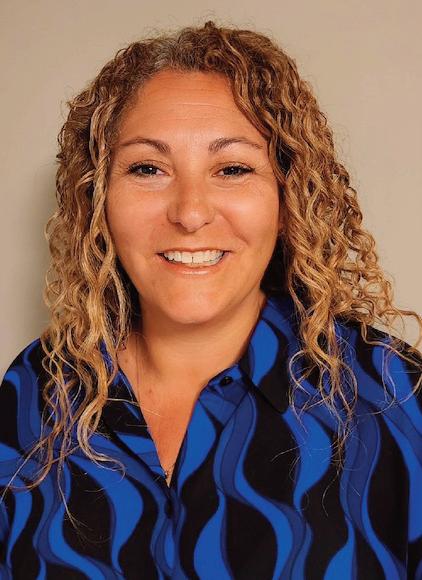
THE ADVOCATE 291 VOL. 81 PART 2 MARCH 2023
continue her career trajectory (including hiring her as a summer student, articling student and first-year associate), but it was also the place where she met her husband. Tamara was immediately drawn to Greg’s smile, his generous and inclusive nature and his innate ability to make the person he is speaking to feel like the most important person in the world. The fact that he was important enough to have a beeper and could rock a sweater vest were icing on the cake for young Tamara.
She and Greg have been together for almost 30 years, married since 2004, and are the proud parents of two brilliant, kind and accomplished daughters. Their lives reflect their shared commitment to family and the close relationships they have cultivated with their immediate and extended family. Not only do they live across the street from Greg’s parents’ house, where he was raised, but their home underwent a major renovation in the 2010s to enable it to serve as a hub for the regular gatherings of extended family that they host.
Once she was called to the bar, Tamara worked briefly in private practice. Then she went to an informal meet-and-greet with Christine Lowe (then Administrative Crown Counsel and now Tamara’s colleague on the bench), which turned out to be a job interview that led to a career as Crown counsel. Tamara recounts as highlights of her time as Crown counsel her work for many years as a coordinator of the New Crown Counsel Conference, working with her colleagues on significant files and her time in the (thankless) role of Administrative Crown Counsel. In addition, she taught two terms of Criminal Procedure at UVic and sat on many community boards. She is grateful to have had a career that required her to make what she believed to be the “right choice” every day, and she leaves it with the knowledge that she positively affected not only her colleagues, but all the people with whom she interacted.
Travel has continued to play a crucial role in Tamara’s life throughout her adult years. She truly met her soulmate in Greg, who makes it his hobby to not only find the best travel deals, but also to ensure his wife gets to travel as the princess she truly is (yes, she owns tiaras!). This may involve a weekend trip to Vienna, or a milk run of flights through the United States to accumulate travel points. An early highlight was when Greg created programs to scan the web (before Expedia was a thing) and travelled to accumulate enough points to purchase a first-class trip around the world for their honeymoon. Tamara describes her “happy place” as travelling in the small firstclass section of a Lufthansa flight, enjoying her bed/seat.
Throughout her career, Tamara has been grateful to the people who have supported her, both personally and professionally. Of course, this includes
292 THE ADVOCATE VOL. 81 PART 2 MARCH 2023
Greg and the other members of her immediate and extended family, as well as her still-close friends from high school and prior jobs, including Christine in Calgary and local family friend Jen Payne-Vining. In addition to learning from her co-counsel on serious cases, Tamara cites the support of Regional Crown John Labossiere, Crown Lori McMorran, (retired) Judges Neal and Palmer, and the late Judge Wallace as being crucial to getting her where she is today.
Tamara may not (yet) have achieved her childhood dream of becoming prime minister and building herself a purple and white house. She may never get the opportunity to wear her tiaras professionally. However, she will surely bring her fierce intelligence and inimitable ability to connect with people to her role on the bench and make a lasting contribution to the litigants who come before her.
THE ADVOCATE 293 VOL. 81 PART 2 MARCH 2023
We are a well-respected, long established law firm in Nanaimo, BC. We have occupied the same location since 1973 and have a large and loyal clientele.

We are looking for a family law practitioner or practitioners to join our team. The ideal candidate(s) would have an established practice and be interested in growing it and supplementing it with referrals. We would also consider candidates who do not yet have established practices, but are intent on growing one. We offer a modern, well designed office building which contains a boardroom and newly renovated kitchen/lounge. All IT infrastructure is in place. The atmosphere is collegial and co-operative.
IF INTERESTED, PLEASE CONTACT
Iain McIver, Fabris McIver Hornquist & Radcliffe at 250-753-6661
Skip Tracing Services Worldwide
Telephone: 800 661 2800
Email: info@empiretracing.com
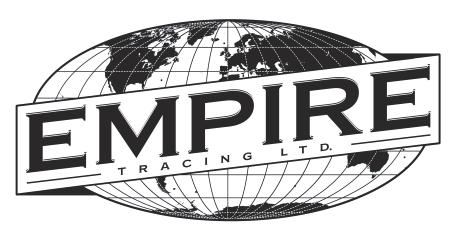
Website: empiretracing.com
Witnesses
Plain ffs
Defendants
Empire Tracing is the oldest Skip Tracing firm in Canada, in opera on since 1967. We help connect our clients with hard to find individuals, such as:
Lost Heirs
Beneficiaries
Pension Recipients
Debtors
Claimants & Insureds
Lapsed Tenants
294 THE ADVOCATE VOL. 81 PART 2 MARCH 2023 294
now or visit our website for more informa on or to start a search today!
Granville St., Suite 1126, Vancouver, BC V6Z 1G3
Call
736
TRIAL
THE ADVOCATE
CLASSIFIED
Experienced civil and family litigator offering flexible contract-based trial services. Services adaptable to the level of support needed, including assuming conduct of trial.
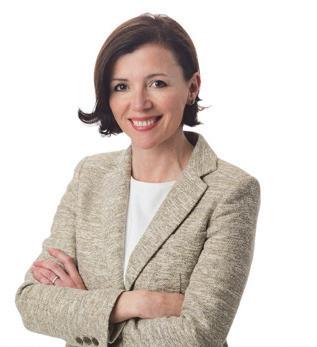
604-807-5551
aram@aramesh.law
WARNER BANDSTRA BROWN TERRACE, BC
Busy firm is seeking 2 lawyers, ideally a junior but new calls welcome, to practice as a solicitor, family or criminal lawyer.

We are located in Terrace, a thriving and affordable city offering an excellent opportunity for a balanced and fulfilling lifestyle.
Remuneration is very competitive along with several paid benefits.
Send cover letter and resume to info@warnerbandstra.com
TOFINO
Waterfront house for monthly lease during the summer. This ten year old house is on a peninsula between Cox Bay and Chesterman Beach, and has walk-on beach access. The house has stunning 200 degree views to Frank Island and Lennards Lighthouse. Two bedrooms, two bathrooms and enormous deck close to water level. Ideal for two couples. No sub-leases or rentals allowed.
FOR FURTHER DETAILS, CONTACT gscott1001@gmail.com
PROVIDING CIVIL ENFORCEMENT SERVICES FOR OVER 50 YEARS
• Filing your Court Order at the Court House
• Executing all Court Orders
© Writs/Orders of Seizure and Sale, Writs of Possession, Forced Entries, Writs of Delivery, Sale of Land, Ship Arrests
• As well as all other forms of Commercial Civil Enforcement
© Rent Distresses and Terminations, Warehousers Lien, GSA’s and PPSA’s
604.434.2448
bc@ccebailiff.ca
THE ADVOCATE 295
COUNSEL
SUPPORT SERVICES FOR
NAZANIN ARAM
ADVERTISE IN YOUR MAGAZINE NOTARIAL PRACTICE FOR SALE in Scottsdale Mall, Delta, B.C. Notary retiring after over 40 years CONTACT Charlene Hood Notary Public 604-594-8260 604-594-3723 FAX chood@telus.net VOL. 81 PART 2 MARCH 2023
WATERFRONT
ON POINT LAW CORP Research Lawyers for Lawyers OP Providing legal research, analysis, and strategy to lawyers for over 20 years. FORMER LAW CLERKS EXPERIENCED LITIGATORS GOLD MEDALISTS info@onpointlaw.com www.onpointlaw.com
604-879-4280
GEIGER LAW PRACTICE SALES
SURREY PRACTICE
This busy practice has been in operation for over 50 years. The present practice mix is RE (including Municipal/Expropriation), Corp/Comm, Wills/Estates, Family Law and Litigation. The sellers have excellent reputations individually and as a firm, and are prepared to assist the buyer with a transition plan that ensures client retention.
OKANAGAN VALLEY – WILLS/ESTATES AND CORPORATE PRACTICE:
Operating in the North Okanagan Valley since 1995, this practice is unique in its highend mix of Wills/Estates and Corporate Commercial law. There is a significant Wills bank and approximately 250 corporate clientele.

“Further details of this practice are available at geigerlegal.com”
ESTABLISHED SOLICITOR’S PRACTICE – WEST KOOTENAY REGION:
This busy established practice is almost equally divided between Real Estate and Wills/Estates with about 5% corporate commercial work. There is a significant Wills Bank and Estate Administration work is in a growth phase. The area is underserviced in all areas of law including family and litigation, such that there is almost unlimited expansion potential. The right buyer would enjoy living in a smaller, affordable community with a friendly, eclectic vibe and easy access to adventure in the surrounding mountains, lakes and rivers.
CALGARY MULTI-LAWYER SOLICITOR’S PRACTICE: Contact K. Geiger for details.
CENTRAL ALBERTA GENERAL PRACTICE
This practice started 100 years ago and is located in the historic downtown core of this Central Alberta city. Practice mix is about 50% RE, Wills/Estates and Corporate/ Commercial; the remainder is Family law/litigation as well as Commercial litigation. Billings are in the high six figures. The practice boasts fantastic staff and the premises have space for a second lawyer.
CENTRAL ALBERTA GENERAL PRACTICE
2 lawyer practice established in 1984. Consistently billing 8-900K. 70% Solicitor’s work and 30% Family/General Litigation. Trained staff and congenial sellers who are willing to mentor incoming lawyer(s).
296 THE ADVOCATE VOL. 81 PART 2 MARCH 2023 FOR INFORMATION ON ADDITIONAL PRACTICES FOR SALE, PLEASE VISIT geigerlegal.com Contact Kathy Geiger regarding succession planning, practice sales and valuations at geiger@lawyer.com 613-864-4701
LEGAL ANECDOTES AND MISCELLANEA

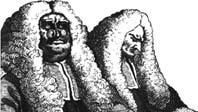 By D. Michael Bain, K.C.*
By D. Michael Bain, K.C.*
DENIS O’BRIEN – A VERY NAUGHTY BOY
In 1979’s spectacular (and controversial) British comedy film Monty Python’s Life of Brian, the lead character, Brian Cohen (who is born in a stable next to the one in which Jesus is born), is mistaken for the promised messiah. As an adult, a “multitude” of people follow Brian to his mother’s house. Brian’s mother, Mandy (played over-the-top by the late Terry Jones), is decidedly unimpressed. She opens the window upon the thousands gathered outside chanting “Messiah! Messiah! Messiah!” and, wagging her finger, warns them: “Now you listen here! He’s not the Messiah, he’s a very naughty boy!”
The scene was filmed in Tunisia just a few sand dunes over from where George Lucas was filming something called Star Wars. However, Life of Brian very nearly did not get made. For while art directors and carpenters were busy in Tunisia building a new Jerusalem, thousands of miles away in London, the head of EMI, Lord Delfont, finally got around to reading the script for the film. EMI was, at the time, Britain’s leading film production company and had committed itself to putting up £2 million for the film’s production. But Lord Bernard Delfont was so appalled and offended by what he read that he caused the company he was the head of to withdraw all funding immediately. This put the Monty Python troupe in serious trouble. The funding was pulled on the Thursday and the crew was leaving to start filming on the Saturday. They were in desperate need of … well, if not a Messiah, certainly a saviour.
Troupe member Eric Idle, together with producer John Goldstone, was dispatched urgently to Los Angeles where they pitched their situation to a succession of millionaires and billionaires, none of whom were interested.
VOL. 81 PART 2 MARCH 2023 THE ADVOCATE 297
* D. Michael Bain, K.C., is the editor of the Advocate. He is a self-professed Beatlemaniac. He also adores The Rutles.
Coincidentally, also in town was Idle’s friend, former Beatle George Harrison. On hearing about Idle’s situation, Harrison apparently said: “Don’t worry. I’ll get you the money. I’ll set something up.” He directed Idle and Goldstone to his business manager, Denis O’Brien, who was in Switzerland at the time, and said: “Denis will sort things out.” Harrison did, in fact, put up all of the funds necessary for the film to be made, through a newly created film production company he called HandMade Films.1 Harrison did so, apparently, because he wanted to see the film, and Idle later commented that it was “the most expensive cinema ticket ever issued.”
O’Brien was born in St. Louis, Missouri in 1941. He obtained his J.D. from Washington University in St. Louis and by 1967 he was living in Paris where he practised law with the prestigious law firm Coudert Frères. By 1970, he found himself working for the Rothschild banking group in London. One of his clients there was Peter Sellers, the eccentric and massively talented British actor whose career and tax situation he helped stabilize in 1974.
O’Brien helped Sellers sign on to make The Return of the Pink Panther, and it was Sellers who introduced O’Brien to Harrison.
In the early 1970s, Harrison (the Beatle who wrote “Taxman”) had mounting tax issues of his own—which O’Brien, a gifted accountant as well as a lawyer, helped him sort out. Harrison rather happily explained: “In 20 minutes, [O’Brien] gets more from a budget sheet than most people do in 20 hours.” O’Brien similarly gushed about Harrison: “The chairman of Shell, of RTZ, of IBM, of Ford—I’ve met all these people and I’ve never met anyone as together as George.” Thereafter, George put complete trust in O’Brien to manage his business affairs.
When HandMade Films was set up as a production company, Harrison and O’Brien became the executive producers of Life of Brian. To finance the venture, O’Brien convinced Harrison to mortgage his home (a Victorian neo-gothic mansion in Henley-on-Thames named Friar Park) while O’Brien put up his own business premises in Sloane Square. In hindsight, this was an outrageously risky venture given that the film did not even have a distribution deal at that point and was courting enormous controversy with its subject matter—guaranteed to offend everyone, “some of whom one would want to offend!” noted John Cleese.
Life of Brian was a huge box office success, grossing $21 million, which convinced the Monty Python troupe to allow O’Brien to also manage their affairs. The success of the film also convinced O’Brien that he was now a successful film producer who should continue producing films. One of the Monty Python members, Terry Gilliam, saw an opportunity to secure financing for his project routinely turned down by Hollywood, a film called
298 THE ADVOCATE VOL. 81 PART 2 MARCH 2023
Time Bandits in which an 11-year-old boy is caught up in the adventures of a group of time-travelling dwarfs who meet up with Napoleon, Robin Hood, Agamemnon and even the devil himself.
Once again, HandMade Films came to the rescue and O’Brien (able to throw around the names of the Pythons and a Beatle) found himself golfing with and convincing Sean Connery to join the cast as Agamemnon. While snagging James Bond himself for the film, O’Brien did so by promising Connery a piece of the gross profits, which ate into Terry Gilliam’s earnings as a director—and O’Brien was supposed to be managing Gilliam and acting in his best interests! Once again, Harrison was convinced by O’Brien to put up Friar Park as collateral. HandMade Films financed Time Bandits to the tune of $5 million.
O’Brien, however, was now fancying himself as a film maker and he began interfering during the film’s editing, something he would do with all of Handmade Films productions from then on. He disagreed with Gilliam’s decision to kill the child’s parents at the end of the film and insisted that a series of happy-go-lucky songs be played whenever the dwarfs were on screen. Things got extremely heated with the two screaming at one another and Gilliam at one point threatened to destroy the film negative with a nail. Despite such difficulties, the director eventually got his way and after a poor run in Britain, Time Bandits was a massive success in the United States—at one point earning $1 million per day, and ultimately $35 million in ten weeks. What’s more, it was a hugely original, imaginative film that was made by artists rather than boardroom committees. HandMade Films was on a roll as an independent film production company.
The company very soon was making many of the most successful independent British films of the 1980s (both critically and financially), including the Oscar-nominated Mona Lisa, The Long Good Friday, The Missionary, The Lonely Passion of Judith Hearne and the cult classic Withnail and I. The list of actors appearing in HandMade Films productions reads like a who’s who of British Cinema: Sean Connery, Michael Caine, Maggie Smith, Bob Hoskins, Helen Mirren. The company even won an Outstanding Contribution to British Films award in the mid-1980s.
There were some duds too, though, to be sure. Shanghai Surprise was a 1986 adventure comedy starring Hollywood’s then “it” couple: newlyweds Sean Penn and Madonna. O’Brien was very pleased with snagging the most famous couple of the day for his relatively small film company. However, both actors were notoriously temperamental and, plagued by paparazzi wherever they went (even in China), Penn would often lose his temper, spitting at and even beating up photographers. Madonna too was notori-
THE ADVOCATE 299 VOL. 81 PART 2 MARCH 2023
ously foul-mouthed and tempestuous; her tantrums soon put her at odds with first-time director Jim Goddard. When the budget spiralled out of control (largely because Penn and Madonna would storm off set causing production delays), Harrison (the “quiet Beatle”) was called in to smooth things over because he was one of the few people Madonna was in awe of. Peace was short-lived, however, and both actors refused to promote the film at all. Shanghai Surprise was a notorious flop that did poorly everywhere except in its nominations for Razzie Awards: worst actor, worst actress, worst film.
In late 1988, HandMade Film’s accountant, John Reiss, and its head of production, Ray Cooper (interestingly also Elton John’s percussionist for over 40 years), visited George Harrison at his home, Friar Park, to tell him that O’Brien was robbing him blind. They explained that O’Brien had set up a complex series of companies in Panama, where there were no disclosure laws, and was moving money in and out without disclosing any of this to Harrison. The chance of meeting “Beatle George” was O’Brien’s means of enticing banks to loan huge sums of money for the various film productions, and while he told Harrison that they were co-signing guarantees for the lending, in fact, only Harrison signed the guarantees. What Reiss and Cooper had discovered, when one of the banks had actually asked to see the state of Harrison’s finances, was that the Beatle’s net worth was a deficit of $32 million.
The whole scheme was a pack of cards in which O’Brien had been securing vast sums of money on the reputation of Harrison, who most people (and most bankers) simply assumed was enormously wealthy. Each time O’Brien got a guarantee from Harrison, he got more money from the banks, and it disappeared into the labyrinth of Panama companies with bizarre names like Harikrishna SA and Clog Holdings. O’Brien’s response to having been outed was to fire Reiss and Cooper (the latter being a close friend of Harrison’s), thereby sounding the death knell of HandMade Films. But all was not yet over. In mid-1995, Harrison sued O’Brien in Los Angeles, and in pleadings seeking $25 million in damages he alleged:
This case involves the tortious misconduct of a faithless manager. Pretending to serve the interests of his musician client, he misused his position and his clients, assets and credit to finance secret profit and a lavish international lifestyle for himself, while subjecting his trusting client to massive economic risks and losses.
… O’Brien drastically re-organized Harrison’s financial and business holdings into a complicated Byzantine structure involving multiple offshore corporations and other related entities all under O’Brien’s direct or indirect control.
300 THE ADVOCATE VOL. 81 PART 2 MARCH 2023
Not surprisingly, O’Brien’s defence was one of denial, and when judgment came down in favour of Harrison (albeit for less than half the amount claimed at $11 million), O’Brien inevitably appealed. His appeal was unsuccessful, and when the appellate court upheld the trial judgment, O’Brien filed for bankruptcy. Harrison, however, newly flush with income from Beatles compact disc sales, tried to block the bankruptcy declaration. When he was unable to appear for a deposition because of health issues, though, the judge did not accept Harrison’s excuses and threw out the case. Harrison died of lung and brain cancer a few months later in November 2001 at the age of 58.
Not only did Harrison leave behind his incredible legacy in the Beatles but also the legacy of HandMade Films, which Michael Palin once described as having “a record that is formidably impressive. Twenty-three films made in ten years—films of extraordinary range and diversity—giving a huge number of actors, writers, and technicians the chance to show what they could do, with the minimum of interference.”2 But as Harrison noted in 1970, “All things must pass.”
In 1997, O’Brien became president and CEO of Union Financial Group Ltd. in Illinois. He was, however, ousted by the board “after his business strategy proved too aggressive for the board of directors”.3 In 2008, he moved back to England. He died in Swindon at the age of 80 in December 2021. Towards the end of his life, he developed dementia and seemed to forget that he had ever had a falling out with Harrison, whose music he loved to listen to reminiscing about the past and forgetting altogether that he was, in fact, a very naughty boy.
ENDNOTES
1. “The name of the company came about as a bit of a joke. I’d been to Wookey Hole in Somerset near an old paper mill where they show you how to make old underpants into paper. So I bought a few rolls, and they had this watermark ‘British Handmade Paper’. I said ‘Let’s call our company British Handmade Films’ but when we went to register it we were told ‘You can’t call it British! You can only call it British if everybody is on strike the whole time and it’s making huge
losses,’ so we said ‘Sod it! We’ll just call it HandMade Films.’” Bill Harry, The George Harrison Encyclopedia (London: Virgin Books, 2003).
2. Michael Palin, “Foreword” in Robert Sellers, Very Naughty Boys: The Amazing True Story of HandMade Films (London: Titan Books, 2013).
3. Margie Manning, “O’Brien Ousted from Union Financial” (15 August 1999), online: <www.bizjour nals.com/stlouis/stories/1999/08/16/story4.html>.
VOL. 81 PART 2 MARCH 2023 THE ADVOCATE 301
You and your clients ca animal cruelty and com in need. Contact us tod more about how they c a




will.

Charitable Number: 11881 9036 RR0001 1.855.622.7722


VOL. 81 PART 2 MARCH 2023 302 THE ADVOCATE t s a l r ve e ir het earhs m he p t l e , h ar e s y hi
T . veol ing o n t a l n help end fort animals ay to learn n leave a Clayto cnorbu p n Norbury ry@spca.bc.ca
gift in their
ext. 6059 er f foorev
rgguardian.ca
FROM OUR BACK PAGES
By D. Michael Bain, K.C.*‡
THE WRIT OF SUMMONS*
By D. Michael Bain, K.C.†
The Writ of Summons1 died peacefully in British Columbia on June 30, 2010, sometime between 4:00 p.m., when the registry closed, and midnight that evening, when the new Rules of Court came into effect. Legal practitioners in the province lost a friend and companion to most pieces of civil litigation that have ever occurred in the province. Whether accompanied by a long-standing (and sometimes long-suffering) partner, the Statement of Claim, or the more understated Endorsement (who rather tragically died the same night), the Writ of Summons was at the forefront of civil litigation in B.C. for even longer than the Court of Appeal has been extant.
The Writ of Summons (known affectionately by most practitioners simply as “the Writ”) very nearly spent 139 years practising in the province, having already been in the colony at the time of Confederation on July 20, 1871. Although a precise date of birth cannot be confirmed (the Writ having left no apparent issue other than the Notice of Civil Claim, which is still mewling and puking and is therefore of no real assistance), we do know that the Writ was adopted by some kind people in Victoria in 1849, when that settlement was still part of the Colony of Vancouver’s Island. The Writ never forgot this auspicious start in the region and would regularly visit the island as much as possible. Pursuant to An Act to Provide for the Administration of Justice in Vancouver’s Island (U.K.), 12 & 13 Vict., c. 48, the colony was
* Reprinted from (2010) 68 Advocate 760.
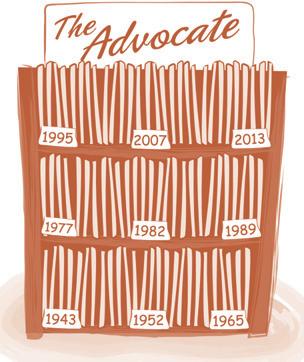
VOL. 81 PART 2 MARCH 2023 THE ADVOCATE 303
† D. Michael Bain, K.C., is now the editor of the Advocate. He was the assistant editor when he wrote this piece, and expressed thanks for the last-minute assistance of Susan Caird (then at the Vancouver Courthouse Library, now at McCarthy Tétrault) for making serious inquiry into the history of the Writ of Summons, and apologized for trivializing such amazing research!
permitted to constitute its own courts, and the Supreme Court of Civil Justice of the Colony of Vancouver’s Island was established in 1856. The Writ was there for the opening ceremonies.
The Colony of British Columbia, meanwhile, was established by An Act to Provide for the Government of British Columbia (U.K.), 21 & 22 Vict., c. 99, on November 19, 1858, and as every reader of the Law and Equity Act knows, the laws of England which at that time were not inconsistent with local circumstances were declared to be in effect in British Columbia. Thus, the Writ, which had already lived in England for centuries, immigrated to the Colony of British Columbia. As there was no transcontinental railway at the time and Rogers had yet to discover his pass, we can only assume that the Writ of Summons traveled by sea around Cape Horn. Indeed, the Panama Canal had yet to be built, although the Panama railway was running, so maybe the Writ came partway by train. Sadly, there is no journal of this voyage, but it was only one of many the Writ would take throughout an illustrious career. Travel was a constant theme in the life of the Writ. There was a certain renown for being able to travel vast distances quickly and efficiently, particularly after the advent of the fax machine. The Writ even lived long enough to be scanned and PDF’d!
The remainder of the Writ’s life spent in B.C. was one full of variety, involving every registry in the province. The Writ was always very humble about having been mentioned in the first book to be printed on Vancouver Island, the 1857 Rules and Manner of Proceedings of the Supreme Court of Civil Justice for Vancouver’s Island, which was released to an enthusiastic public in 1858. At that time the Writ looked like this:
Every action in the Court shall be commenced by a writ of summons, which shall be indorsed with a statement of the nature of the claim made, or of the relief or remedy required in the action.
Thereafter, whenever the Rules faced revisions, the Writ was resolute in appearing in various guises much to the satisfaction of all who practised civil litigation. A member of every litigation firm in the province since before there was a province, the Writ was particularly known for preserving limitation periods. The Writ was lightning fast at being executed, filed with an Endorsement and rushed to the registry and stamped to stop the clock from ticking. Such action was not atypical for the Writ. Sometimes the Writ would lie in wait for up to 12 months before being served, but even then the Writ could often be counted upon to be renewed, a stunning Lazarus-like quality that assisted practitioners, if not regularly, often enough. Sometimes the mere threat of “dropping the Writ” was enough to advance the interests of clients and filing was not even necessary. The Writ in draft form
304 THE ADVOCATE VOL. 81 PART 2 MARCH 2023
could sometimes compel someone to come to the table. While that legacy may continue with the Notice of Civil Claim, it is not quite as much fun to threaten to “drop the Notice of Civil Claim”.
Before emigrating from England, of course, the Writ wined and dined with royalty and clerics. An early reference in 1122 reads: “Hu se papa Agatho hit feostnode mid his write.” They obviously didn’t have spell check in 1122. Bishops and kings were known to rely heavily on the Writ in many circumstances which provided a royally nobly reverendy training ground for the Writ. However, pretense was not really the Writ of Summon’s strength. The Writ preferred simplicity, appearing in 1400 as “the wryt that me pledeth in the Citee, by-fore Justyces.” Thereafter, the Writ of Summons was pretty much everywhere and anywhere justice required. In 1450, for example, someone might be required “to come fully to the strengthe of the courte for the kingis breef or writte”. Writs of apprehension and writs of execution, two older and more aggressive brothers of the Writ of Summons, flourished in England, as did writs of dower, admiralty and even the writ of summons to Parliament. It seems, though, that the civil Writ of Summons was content to leave this family behind. Together with several nearly identical cousins, the Writ ventured forth into the uncharted world of the burgeoning Commonwealth, but not before being immortalized in works by Ælfric, Chaucer, Dickens and Tennyson.
Well past the age of retirement, from 1976 the Writ rather contentedly nestled in Rule 8(1) as:
Except where otherwise authorized by an enactment or these rules, every proceeding in the court shall be commenced by filing a writ of summons.
During these last 34 years of practice, the Writ of Summons remained remarkably unchanged and held the prize place of “Form 1” in Appendix A to the Rules of Court. This was an honour the Writ held with grace and dignity, though rarely boasting about it on the golf course. The Writ of Summons always proudly asserted “ELIZABETH THE SECOND, by the Grace of God, of the United Kingdom, Canada and Her other Realms and Territories, Queen, head of the Commonwealth, Defender of the Faith”. Because of this, a meeting with the Writ by way of process server was rarely something an uninitiated litigant forgot. This was especially so for litigants outside of the jurisdiction, but the Writ, although a seemingly permanent fixture of the B.C. legal scene, would often travel to the United States and even overseas.
THE ADVOCATE 305 VOL. 81 PART 2 MARCH 2023
Form (Rule 8(3)) NO. S0123456 VANCOUVER REGISTRY IN THE SUPREME COURT OF BRITISH COLUMBIA BETWEEN: MEAN MR. MUSTARD PLAINTIFF AND: POLYTHENE PAM DEFENDANT WRIT OF SUMMONS WITH STATEMENT OF CLAIM (Name and address of each Plaintiff) Mean Mr. Mustard. Hole In the Road (Name and address of each Defendant) Polythene Pam Abbey Road ELIZABETH THE SECOND, by the Grace of God, of the United Kingdom, Canada and Her other Realms and Territories, Queen, Head of the Commonwealth, Defender of the Faith. TO THE DEFENDANT: Polythene Pam TAKE NOTICE that this action has been commenced against you by the Plaintiff for the claim(s) set out in this writ. IF YOU INTEND TO DEFEND this action, or if you have a set off or counterclaim that you wish to have taken into account at the trial, YOU MUST GIVE NOTICE of your intention by filing a form entitled “Appearance” in the above registry of this court, at the address shown below, within the Time for Appearance provided for below and YOU MUST ALSO DELIVER a copy of the Appearance to the plaintiff’s address for delivery, which is set out in this writ, and if a statement of claim is provided with this writ of summons or is ater served on or delivered to you, FILE a Statement of Defence in the above registry of
More often than not, the Writ of Summons would meet with an Appearance, which could lead to all sorts of trouble for all parties involved. This is perhaps one of the sadder aspects of the Writ’s legacy. However, as a practitioner’s tool, the Writ was literally unprecedented. Indeed, nothing started an action quite like the Writ. Certainly a Petition, with its cost-up-front supporting affidavit, has always lacked the simplicity with which the Writ could be drafted, endorsed, filed and served. The Writ could be miserly and, as noted, was a bit of a tool. But the Writ was loved just the same.
Most practitioners have known for some time that the Writ had only a few months left. The Writ faced the end with the stoic tenacity all those familiar with the Writ knew and loved. Indeed, on June 30, 2010, we must assume that just a few limitation periods were met thanks to the last-minute thinking of the Writ. While death is often tragic, there can be some comfort in knowing that the Statement of Claim, Endorsement and even the Writ’s old nemesis, the Appearance, joined the Writ on the final journey. The practice of law in British Columbia will never be the same. The Writ of Summons will be remembered, if not only through the end of the transition period, certainly until the last cases that were touched by the Writ wind their way through our Superior Courts. All those who knew and relied on you, Writ of Summons, are better off for having done so. Your untimely passing is writ large on our hearts.
ENDNOTE
1. Regular Advocate readers will know that these days we usually and resolutely put the names of court documents in lower case. However, given the Writ of Summons and fellow documents (the cast of charac-
306 THE ADVOCATE VOL. 81 PART 2 MARCH 2023
ters, so to speak) take on practically human qualities in this piece, we have resisted making this change –Asst. Ed.
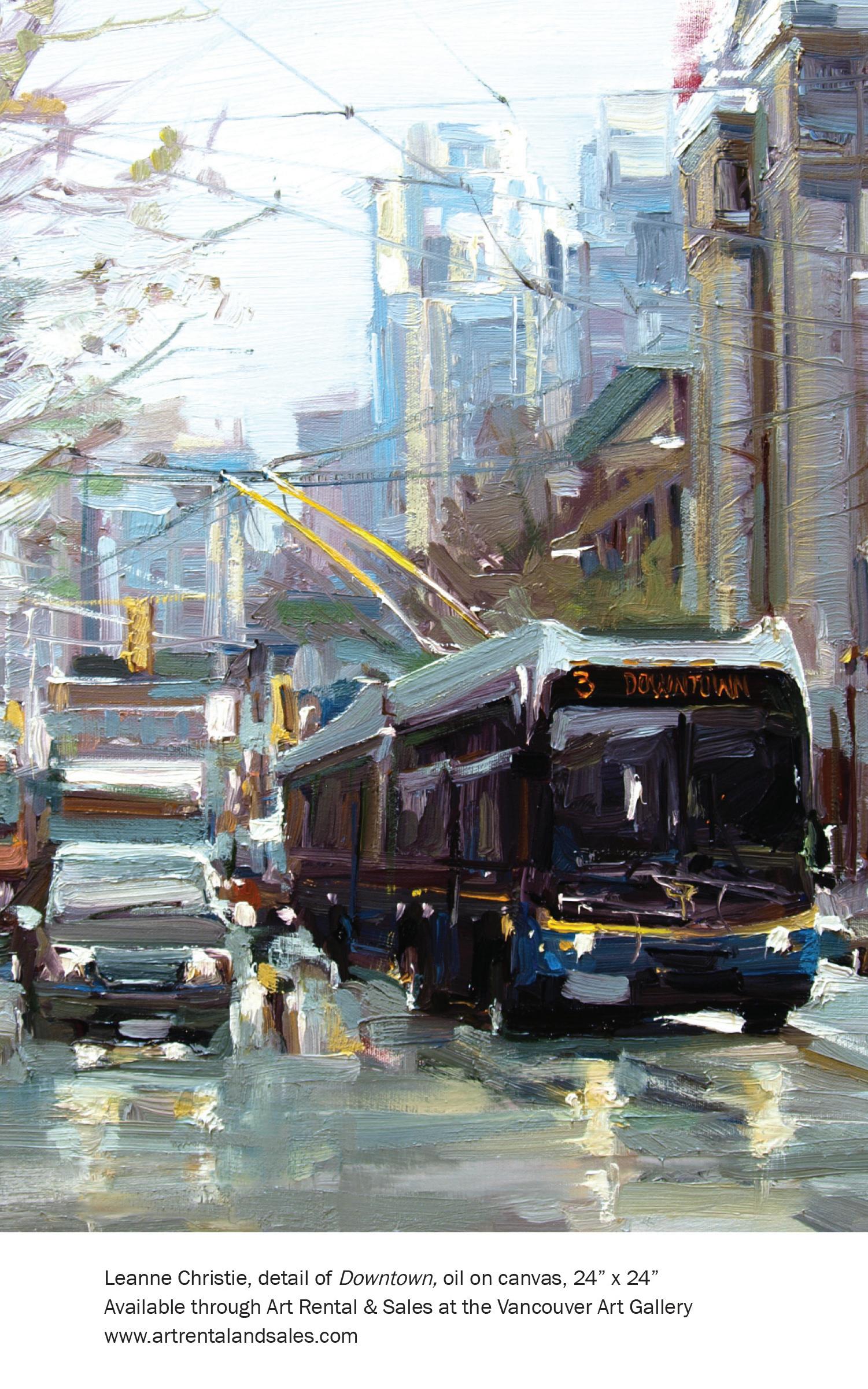
THE ADVOCATE 307 VOL. 81 PART 2 MARCH 2023
One of Canada’s leading litigation teams has a new partner.

Recognized as one of Canada’s Top 10 Litigation Firms, NS intellectual rigour, high quality advocacy, responsiveness anditsoutstandingteam
and its outstanding team.
NST is a select and proven team of advocacy and litigation to achieving optimal results for clients in their most challenging disputes.
T is known for its to clients’ needs, lawyers devoted important and
VOL. 81 PART 2 MARCH 2023 308 THE ADVOCATE
T Trrials. Appeals. Advocacyy. .
4.662.8840 nst.ca
750 -
Howe Street, Vancouver, BC V6Z 2M4 T: 60
Suite
900
BENCH AND BAR
Jazz up your spring season by celebrating the birthdates of jazz greats like Marian McPartland (March 20), Sarah Vaughan (March 27), Billie Holiday (April 27), Ella Fitzgerald (April 25) and Duke Ellington (April 29). Further—or, in the alternative—maximize your jazz intake and output by participating in International Jazz Day (April 30). And perhaps listen to a jazz tune or two while reading about your colleagues, the latest trivia and all that other jazz below.
Narges Naseri moves from Lotz & Company to join Lawson Lundell. M. Caitlin Ohama-Darcus is now at Murphy Battista, moving from Nathanson, Schachter & Thompson. Kit S. Perrick jumps from Kerfoot Burroughs to Burns Fitzpatrick. Ravi S. Patel moves his practice from Chee Dusevic to Boughton Law Corporation. The members of the firm Petraroia Langford all join Lawson Lundell at its Kelowna office. Those getting new business cards are Dominic A. Petraroia, K.C., Ross Langford, Peter C.T. MacPherson, Christopher J. Wiebe, Dylana R. Bloor, Aaron P.G. Dow, Rob L.E. Davis, Mark Bennett Johnson, Matthew B.J. Stainsby, Samantha R. Ferguson, Matt Holthausen and Baylee Hunt. David W.D. McCormick is now with Legacy Tax + Trust Lawyers, moving from the Department of Justice. W. Kim Ashley moves from Waterstone Law Group to start up with Zacharias Vickers. Martin W. Bühler leaves Ramsay Lampman Rhodes in Nanaimo to open Bühler Law in Oyster Bay Village. Claire M. Armstrong sashays to the City of Vancouver from Owen Bird.
David K. Camp joins Eyford Partners from Borden Ladner Gervais. Eamon A. Jeddy moves from Lawson Lundell to Young Anderson. Also leaving Lawson Lundell, for a move to Fasken, is Kinji C. Bourchier. Jennifer L.
Lawyers who have moved their practices should e-mail details of their past and present circumstances to Peter Roberts, K.C., at <benchandbar@the-advocate.ca> to ensure an appearance in “Bench and Bar”. Note that we do not report changes in lawyers’ status within their firms (from associate to partner, for example) other than in cases where persons formerly articled have been hired as associates.


VOL. 81 PART 2 MARCH 2023 THE ADVOCATE 309
Cockbill joins McMillan Dubo Law Group from Fulton. Jada M. Tellier is now at Stikeman Elliott, having left Kornfeld LLP. Cassandra Douma joins Drouillard Lawyers in downtown Vancouver, where she will focus on real estate litigation, having previously worked at MacMillan Tucker in Cloverdale. Ellen S. Kief moves from Kief Law’s U.S. Immigration Group to Synergy Business Lawyers. Erin L. Kotz is now at Koffman Kalef, moving from Poulus Ensom. In an acronym swap, Malachi Cameron joins KSW Lawyers from RDM Lawyers. Also joining KSW Lawyers is Harneel K. Hundal, who was previously with the Law Society of B.C. Joining them both, Jenson Leung lands at KSW Lawyers from Samfiru Tumarkin. Jennifer L. Jackson has become General Counsel to the Vancouver Coastal Health Authority moving up from Associate General Counsel. Bradley A. Newby jumped from Farris to Osler’s Vancouver office. David K. Wotherspoon set out his own shingle as Wotherspoon Law, moving from Dentons.
After a stint starting in the trial courts in 1996, Chief Justice Robert Bauman announced his resignation from the office of Chief Justice of British Columbia and Chief Justice of the Court of Appeal of Yukon, effective October 1, 2023. Among the many cases in which the Chief Justice wrote reasons are Al Boom Wooden Pallets Factory v. Jazz Forest Products (2004) Ltd., 2016 BCCA 268.
At the start of the new year, Grace Oh was appointed as a judge of the Provincial Court.
Christopher C. Rivers was appointed as a full-time member of the Civil Resolution Tribunal for a term ending December 12, 2025.
“[I]n contemporary music, and particularly in the jazz music genre, musicians frequently move beyond traditional rules to create a range of dissonant and innovative sounds”: Tempo Music, Inc. v. Famous Music Corp., 838 F. Supp. 162 (S.D.N.Y. 1994).
Joanne Macri was appointed as the new executive director of the BC Civil Liberties Association. She previously served as the executive director of the International Centre for Criminal Law Reform and Criminal Justice Policy in Vancouver.
Douglas S. White, K.C., former chair of the First Nations Justice Council and a member and eventual chief of the Snuneymuxw First Nation near Nanaimo, recently took up a post as special counsel to the B.C. Premier on Indigenous reconciliation.
310 THE ADVOCATE VOL. 81 PART 2 MARCH 2023
Britannica.com describes “swing, in music” as “both the rhythmic impetus of jazz music and a specific jazz idiom prominent between about 1935 and the mid-1940s—years sometimes called the swing era”.
Audrey T.Y. Ho was reappointed as a member of the British Columbia Securities Commission for a term ending December 31, 2024.
In Portnoy v. Seligman & Latz, Inc., 516 F. Supp. 1188 (1981), the U.S. District Court for the Southern District of New York rejected the plaintiff’s claim that the defendants violated “section 16(b) of the Securities Exchange Act of 1934 … , which prohibits corporate insiders from retaining any profits realized on short-swing investments in their company’s securities”. The court concluded that the defendants “may have realized their profits ‘shortly’ after signing the underwriters agreement, but without a pairing of transactions, their profits cannot be called ‘swing.’ And as Duke Ellington said, ‘It don’t mean a thing if it ain’t got that swing.’ Ellington, Edward Kennedy ‘Duke,’ ‘It Don’t Mean A Thing If It Ain’t Got That Swing’ (1932)”.
Speaking this time of statements that may not mean a thing … George Anthony Devolder Santos is the U.S. representative for New York’s 3rd congressional district. He is currently accused of fabricating much of his biography, work history and financial status. One of the more ironic assertions made against him, by two former roommates, is that he stole a $520 Burberry scarf that he then wore to a January 5, 2021 “Stop the Steal” rally.
Ryan Hamilton Clements and Gail C. Banning were appointed as members of the British Columbia Review Board for terms of two years.
Dissenting in Montréal (City) v. 2952-1366 Québec Inc., 2005 SCC 62, Justice Binnie concluded that a portion of a Montreal bylaw prohibiting “noise produced by sound equipment, whether it is inside a building or installed or used outside”, “where [the noise] can be heard from the outside”, was not valid. Justice Binnie was concerned the general ban “includes, on the face of it, everything from loudspeakers blasting outside a strip club” (the scenario before the court) “to the quiet outdoor use of a radio in an Outremont garden, to the ringing of a cell phone in front of the Palais de Justice to the squawk of a baby alarm”. Justice Binnie was also concerned about the bylaw’s potential to affect, in “the student ghetto east of the main McGill University Campus”, “[a]n undergraduate studying to the music of an Ella Fitzgerald CD” if she had, rather than keeping her windows closed, “open[ed] the sash to let in some air and a spring breeze … allow[ed] the music to escape”.
THE ADVOCATE 311 VOL. 81 PART 2 MARCH 2023
Subodh Chandra was appointed to the Environmental Appeal Board, the Forest Appeals Commission and the Oil and Gas Appeal Tribunal for a term ending December 31, 2024. Shannon A. Bentley, Jeffrey A. Hand and Brenda L. Edwards were reappointed for terms ending on December 31, 2024, 2025 and 2026, respectively.
The Justice Education Society (“JES”), headquartered in Vancouver, was recently honoured by Cooperation Canada, in collaboration with World University Services of Canada and the Trustees of the Lewis Perinbam Award, with the Innovation and Impact Award. Lewis Perinbam was a pioneer in building the international development sector in Canada.
The U.S. Court of Appeals for the Fifth Circuit peppered its judgment in Whittington v. Estelle, 704 F.2d 1418 (1983) with musical subheadings: “The Overture: Con Brio”, “The Trial: Sour Notes and All that Jazz”, “Appellate Prelude” and “Variations on a Theme: The Prosecutor’s Statements” (which were argued to have been “an impermissible plea for a finding of guilt based on community expectations”). The court found those statements did not render the trial so fundamentally unfair as to entitle the appellant to a writ of habeas corpus, but stated:
There can be little doubt that the jury argument complained of here is vexing in its proximity to impermissible conduct. The prosecutor here has danced a careful ballet, skillfully maintaining his balance on constitutional pointe. We marvel at his dexterity; yet criticize his technique. Let there be no mistake. This Court, in denying habeas relief, does not approve the prosecutor’s remarks in this case. They sound a familiar theme, a discordant elegy, diaphonic and inharmonious with traditional motives governing the conduct of public officials. Such melodies are best left unplayed.
Disturbing as the prosecutor’s statements are, we nevertheless do not find that they deprived Whittington of a trial which was fundamentally fair …
We observe initially that the prosecutor’s remarks here fall into a polyphonic interlude between an improper plea for conviction because of community expectations and a permissible plea for law enforcement. The prosecutor here did not say that the wishes of the community mandated a particular result. Such a comment would inject a new and harmful fact into evidence …. Rather, the prosecutor implied that the jurors would be shamed if they failed to render a verdict of guilty. While, as suggested, this argument came perilously close to an impermissible plea for conviction based on community expectations and while this kind of argument has been criticized by the Texas Court of Criminal Appeals … , neither the federal nor state courts have directly denounced this tenor of argument. In fact, the Texas courts have composed a suite of decisions
312 THE ADVOCATE VOL. 81 PART 2 MARCH 2023
approving statements closely akin to it. Apparently for Texas, close only counts in dancing. [Footnotes omitted]
A homological word is a word that expresses a property that it also possesses. For example, the word “word” is a word. The word “noun” is a noun. The word “pentasyllabic” has five syllables while the word “writable” is indeed writable. The opposite of a homological word is a heterological word, which is a word that does not apply to itself, such as “long” (which is not long) or “monosyllabic” (which is multisyllabic) or “misspelled” (which is properly spelled … or spelt).
Phil Dwyer, a lawyer based in Qualicum Beach, was appointed as a Member of the Order of Canada in 2013 for “his contributions to jazz as a performer, composer and producer, and for increasing access to music education in his community”.
Miles Davis was a renowned jazz trumpeter and composer whose fans include the eclectically minded judges of the U.S. Third Circuit. Finding a pension administrator’s use of the word “absence” to mean “indefinite departures from the workplace” to have been reasonable, the U.S. Court of Appeals for the Third Circuit noted in Dowling v. Pension Plan for Salaried Employees of Union Pacific Corporation and Affiliates, No. 16-1977 (2017):
Because “absence” is given no specialized meaning in the plan’s definitions section, the word must be interpreted in accordance with its generally prevailing meaning …. While a person who misses one day of work can surely be said to be “not present,” and thereby “absent,” so can a person who endures an indefinite departure from work, whether due to disability or some other reason. Michael Jordan’s three-year hiatus from basketball was an “absence,” according to the New York Times. Rick Moranis’s 18-year disappearance from film was an “absence” in the eyes of the Hollywood Reporter. And Miles Davis’s five-year departure from music in the 1970’s was an “absence” as well, as told by National Public Radio.
Jacqueline A. Tarantino was reappointed to the board of the College of Chiropractors of British Columbia.
All That Jazz is both a song from the musical Chicago and the title of the later, semi-autobiographical movie directed by Chicago’s choreographer, Bob Fosse.
Chicago lawyer Billy Flynn (first played on Broadway by Jerry Orbach and played in the film adaptation by Richard Gere) advises his client Roxie Hart (first played on Broadway by Gwen Verdon, and in the film by Renée Zell-
THE ADVOCATE 313 VOL. 81 PART 2 MARCH 2023
weger) to “Give ’em the old razzle dazzle” in court. No, do not hire or emulate Billy Flynn.
Graeme V. Keirstead, K.C., was reappointed to the Data Stewardship Committee as vice-chair and as the College of Physicians and Surgeons representative for a term ending December 31, 2023.
The pandemic was hard on the education system. School outings to courthouses were largely cancelled. Despite that, over the course of 2022, JES delivered 168 virtual legal education sessions to over 4,500 B.C. students and representatives from a range of community groups across the province. These sessions educate students and build their understanding about the justice system and create interest in legal careers. JES is now back to providing in-person court visits in Vancouver, Surrey, Victoria and Abbotsford.
Directing appellants to comply with Securities and Exchange Commission subpoenas for the production of documentary evidence and testimony, the U.S. Court of Appeals for the Eleventh Circuit noted that responding to the subpoena in Miami would not impose a constitutionally significant burden: “The airports serving metropolitan New York dispatch many hundreds of flights a day to Florida, more than 200 to Miami alone. Flying to Florida is no more unusual in New York than following Duke Ellington’s famous counsel to take the A train”: Securities and Exchange Commission v. Mintrade Technologies, LLC, No. 19-14871 (2020).
Concetta Risi was reappointed as a public member to the board of the College of Optometrists of British Columbia for a term ending December 31, 2024.
Thelma J. O’Grady was reappointed as a public member to the board of the College of Speech and Hearing Health Professionals of British Columbia for a term ending December 31, 2024.
In EMI Catalogue Partnership v. Hill, 228 F.3d 56 (2000), the U.S. Court of Appeals for the Second Circuit described the song “Sing, Sing, Sing (With a Swing)”—around which the trademark case before it revolved—as “a jazz tune popularized by the well-known swing clarinetist Benny Goodman” and “one of the most recognizable from the height of the swing era in the 1930s. A 1999 poll of National Public Radio listeners named it one of the 100 most important musical works of the 20th century”. The court noted that “[f]or those familiar with the Benny Goodman version of it with its upbeat syncopation and counterpoint, ‘Sing, Sing, Sing’ is as distinctive and recognizable
314 THE ADVOCATE VOL. 81 PART 2 MARCH 2023
as the opening four notes of Beethoven’s Fifth Symphony are to a classical music lover”.
“A Benny Goodman or Rosemary Clooney fan would probably have little interest in a program featuring the music of ABBA or The Pointer Sisters”: Narwood Productions, Inc. v. Lexington Broadcast Services Company, Inc., 541 F. Supp. 1243 (S.D.N.Y. 1982).
Winston Sayson, K.C., was honoured with the Medal of Good Citizenship by the provincial government. The award acknowledges the remarkable service to community life provided by its recipients. For Mr. Sayson, a retired Crown counsel, this award is in recognition of his pioneering work in combining wellness practices with legal work, teaching lawyers traumainformed practices to minimize re-traumatization. He was also awarded the Outstanding Contribution Award (2022) from the Fraser Health Authority, Forensic Nursing Services for his support and development of the use of expert evidence from forensic nurses in criminal courts.
Douglas Scott Cochran and Helen J. Roberts were both appointed to the Health Professions Review Board.
Among the many successful recordings of jazz trumpeter, bandleader and singer Louis Armstrong was “What a Wonderful World”, although he did not compose it. In Abilene Music, Inc. v. Sony Music Entertainment, Inc., 320 F. Supp. 2d 84 (2003), the U.S. District Court for the Southern District of New York considered the plaintiffs’ claim that the defendants had infringed their copyright in that song through a rap song that used the first three lines of “What a Wonderful World” as its introduction; the case came down to whether the defendants could properly shelter behind a “fair use” (as parody) defence. The court found they could:
Wonderful World and its optimistic take on life and the natural world have proven extremely popular, and it has been frequently recorded, perhaps most famously by Louis Armstrong. Wonderful World’s lyrics celebrate nature and the beauty of life….
….
Despite the song’s popularity, not everybody subscribes to its message of a pastoral world of “skies of blue and clouds of white,” where all men are brothers and the sound of “babies cryin’” is music to one’s ears …. Thus, in 2001, hip-hop artist Dennis Coles, known professionally Ghostface Killah, a former member of the well-known group WuTang Clan, wrote and recorded The Forest for inclusion on an album entitled Bulletproof Wallets …. The Forest portrays a dark view of the world by imagining popular cartoon characters in a “wonderland,” engaged in acts of violence, sex, and theft …. Before beginning its recitation of the evil ends to which even
THE ADVOCATE 315 VOL. 81 PART 2 MARCH 2023
popular cartoon characters can come, The Forest opens with an off-key rendition of the first verse of Wonderful World.
Where the most famous recording of Wonderful World is lushly orchestrated, with strings playing the melody in a major key, evoking a feeling of peace and harmony, The Forest’s version is recited a cappella, with a single male singer intoning the words off-key, in a tone that might reasonably be perceived as sarcastic. The final line of the quotation, “And I say to myself, what a wonderful world,” sounds positively ominous … No two worlds could be more different, and the unrelenting seediness of the world portrayed by The Forest may be interpreted as both criticizing and ridiculing the cheerful perspective of Wonderful World. Thus, The Forest’s use of Wonderful World is indisputably intended to parody the message of the original, and would be so perceived by any listener familiar with the song.
Robert (Bob) N. Friedland was reappointed to the City of Richmond Board of Variance for another three-year term.
April 2023 has been declared Construction and Skilled Trades Month.
Allan E. Black, K.C., was reappointed as a member of the Vancouver Police Board for a term ending December 31, 2024.
Deciding in Meriano v. Benoot, 2016 ONSC 4839 to dismiss, for delay, a proceeding commenced in 1993, Justice Howard gave a historical overview of other events that had occurred in that year:
William Jefferson Clinton had been inaugurated as the 42nd U.S. President in January of that year …. Boris Yeltsin, then alive, was two years into his term as the first President of the newly-created Russian Federation. In the Canadian federal election held June 25th, the Progressive Conservative Party of Canada, then alive, was elected to power for the last time in its history ….
The year saw the passing of Thurgood Marshall on January 24, 1993, the first African-American justice of the U.S. Supreme Court, who sat on that court from 1967 through to 1991. Pat Nixon, U.S. First Lady from 19691974, lost her battle with lung cancer on June 22nd. Other prominent individuals who died in 1993 include jazz great “Dizzy” Gillespie, Russian dancer Rudolph Nureyev, screen legend and humanitarian Audrey Hepburn, and Raymond Burr, the Canadian-born actor who played the iconic trial lawyer in the Perry Mason television series.
In the world of entertainment, the televised interview of Michael Jackson, then alive, by Oprah Winfrey on February 10, 1993, drew an astonishing 90 million viewers worldwide ….
And on October 23, 1993, Joe Carter of the Toronto Blue Jays hit a threerun home-run in the bottom of the ninth inning of game 6 to defeat the Philadelphia Phillies and win the Jays their second consecutive World Series championship of Major League Baseball.
316 THE ADVOCATE VOL. 81 PART 2 MARCH 2023
It was that very same day – 23 years ago – that the critical event in this case happened. Because it was that day, in the same year that all of the events recounted above transpired, that the instant proceeding was commenced by notice of application dated October 23, 1993.
Don’t worry, you won’t have to wait 23 years … the already completed Part II of Joel Nitikman, K.C.’s “I Am Sure I Am Right (But I Might Be Wrong): A Tax Professional’s Duty to Warn A Client About Weaknesses in a Tax Opinion” will, space permitting, appear in the May issue of the Advocate. Part I was at p. 43 of our January issue.
Wikipedia explains: “[j]azz hands in performance dance is the extension of a performer’s hands with palms toward the audience and fingers splayed”, with Bob Fosse “[p]robably” being their “biggest proponent”.
On January 30, 2023, the provincial government invoked the authority of the Forest Act to issue the 2023 Incomappleux Valley South Designated Area No. 1 Order. By doing so, the new Incomappleux Conservancy, covering more than 58,000 hectares (150 times bigger than Stanley Park), was created. This is a remote wilderness area southeast of Revelstoke known for its rich wildlife habitat and old-growth forests. It is part of British Columbia’s rare inland temperate rainforest where some old-growth cedar and hemlock trees are estimated to be four metres (13 feet) in diameter and more than 1,000 years old. The name “Incomappleux” is reportedly derived from the Sinixt word nk’mapeleqs, meaning “point at end (of lake)”, being the northeastern tip of Upper Arrow Lake. You should go and visit.
Thought du mois:
By and large, jazz has always been like the kind of man you wouldn’t want your daughter to associate with.
Edward Kennedy “Duke” Ellington, jazz musician and composer (1899–1974)
THE ADVOCATE 317 VOL. 81 PART 2 MARCH 2023
Independent Neutral Commercial Arbitrator
who will understand your business dispute
Leslie E. Maerov, FCIArb.
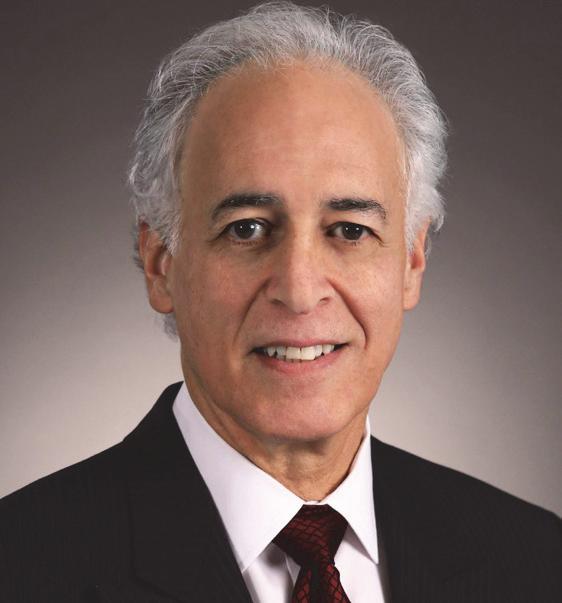
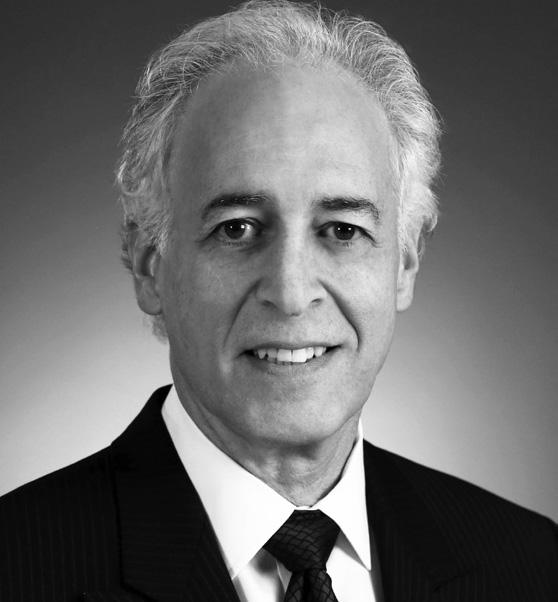
40 years experience as:
, Q.Arb.
Litigator & commercial lawyer
• Litigator & commercial lawyer

Domestic & international arbitrator
• Domestic & international arbitrator
Executive of public companies
• Executive of public companies
• Former Chair and director of VanIAC
Director & Interim Chair of BCICAC
Former Chair and director of VanIAC
• National-level baseball umpire
• (the ultimate neutral)
National-level baseball umpire
604.716.5244 lemaerov@maerov.com
LOOKING FOR MORE
“OF INTEREST TO THE LAWYER AND IN THE LAWYER’S INTEREST”
BETWEEN ISSUES OF THE ADVOCATE?
To automatically receive updates from the Advocate on Facebook, just “like” our page (https://www.facebook.com/TheAdvocateBCMag/).
In addition, if you are a Twitter user, you can follow @AdvocateMag (https://twitter.com/AdvocateMag) to receive Twitter updates.
Instagram:
<www.instagram.com/advocatebcmag>
HOPING TO READ THE ADVOCATE ONLINE?
The current issue of the Advocate is available. Click the cover on our homepage www.the-advocate.ca
and enjoy the Advocate from your computer, smartphone or other device.
VOL. 81 PART 2 MARCH 2023 318 THE ADVOCATE
www.maerov.com
CONTRIBUTORS
Robert Diab practised criminal and administrative law in Vancouver before completing a Ph.D. in law at UBC exploring issues in national security in Canada and the United States. He is a law professor at Thompson Rivers University.
Timothy Harvey is one of four sons of Chris Harvey, Q.C. He once circumnavigated the planet without motorized transport over 893 days on a trip that started and ended in Vancouver. He is the CEO of Lighthouse Genomics on Salt Spring Island.
Gavin Hume, K.C., enjoyed a friendship extending into a fifth decade with Chris Harvey, Q.C. He is a life bencher and senior counsel at Harris & Co., where he is one of the leading employment and labour law practitioners.
Darrell W. Roberts, K.C., called to the bar in 1964, is a retired litigator and law teacher with degrees from UBC (B.A., LL.B.) and Harvard (LL.M.). He was an assistant professor at the UBC Faculty of Law (1970–74), Director of Research on Criminal Procedure at the Law Reform Commission of Canada (1972–74), and an adjunct professor on Advanced Criminal Procedure (1974–76) and Evidence (1976–2003) at the UBC Faculty of Law. He acted as counsel in a wide range of cases before all courts in British Columbia and in a number of cases before the Supreme Court of Canada, including cases on constitutional law. He is also the author of numerous legal articles on criminal and civil practice and on the law of evidence. Among his accomplishments, he received the CBABC’s Georges A. Goyer, QC Award in 2005 in recognition of his outstanding contributions to the legal profession.
Jaclyn Vanstone is an associate in Dentons’s Litigation and Dispute Resolution practice, specializing in complex multiparty disputes, including class action defence and construction disputes. Her focus is on being a trusted advisor to her clients and helping them navigate disputes while helping them achieve their business goals.
THE ADVOCATE 319 VOL. 81 PART 2 MARCH 2023
continued
on following page
Bruce Woolley, K.C., is a sole practitioner providing advice to the Real Estate Council of BC and the BC Real Estate Association. He has taught real estate law extensively since 1981, including at the Peter A. Allard School of Law and at the Sauder School of Business, Real Estate Division. He is not to be confused with Bruce Woolley of The Buggles, who co-wrote “Video Killed the Radio Star” in 1979. Or maybe he is.
David Wotherspoon has been a litigator active in dispute resolution for more than 30 years. He recently started his own firm, Wotherspoon Law, to continue helping clients find solutions to various types of legal disputes. If he weren’t a lawyer, he would be a rock climbing guide, a photographer or a diplomat.
320 THE ADVOCATE VOL. 81 PART 2 MARCH 2023
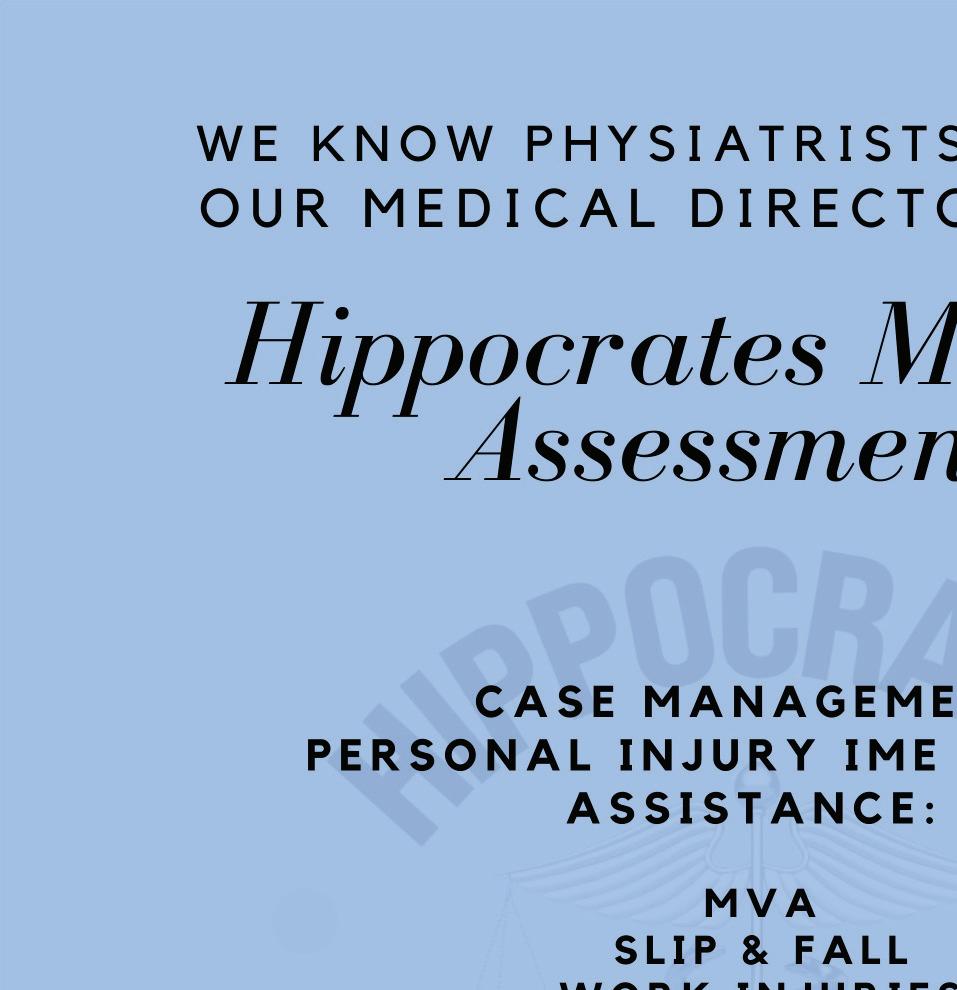





RETURN REQUESTED To: THE ADVOCATE, 709 – 1489 Marine Drive, West Vancouver, B.C. V7T 1B8 Publication Mail Agreement Number 40037919 d March Pages 161-320.qxp_Layout 1 2023-02-21 8:09 PM Page d





























































 Jeff Davis, B.Comm, CIM Vice President, Director Portfolio Manager
Jeff Davis, B.Comm, CIM Vice President, Director Portfolio Manager



































 By Ryan Gauthier*
By Ryan Gauthier*



























 By D. Michael Bain, K.C.*
By D. Michael Bain, K.C.*




















